Category: 2024
Yu-Chen Lin
(ma)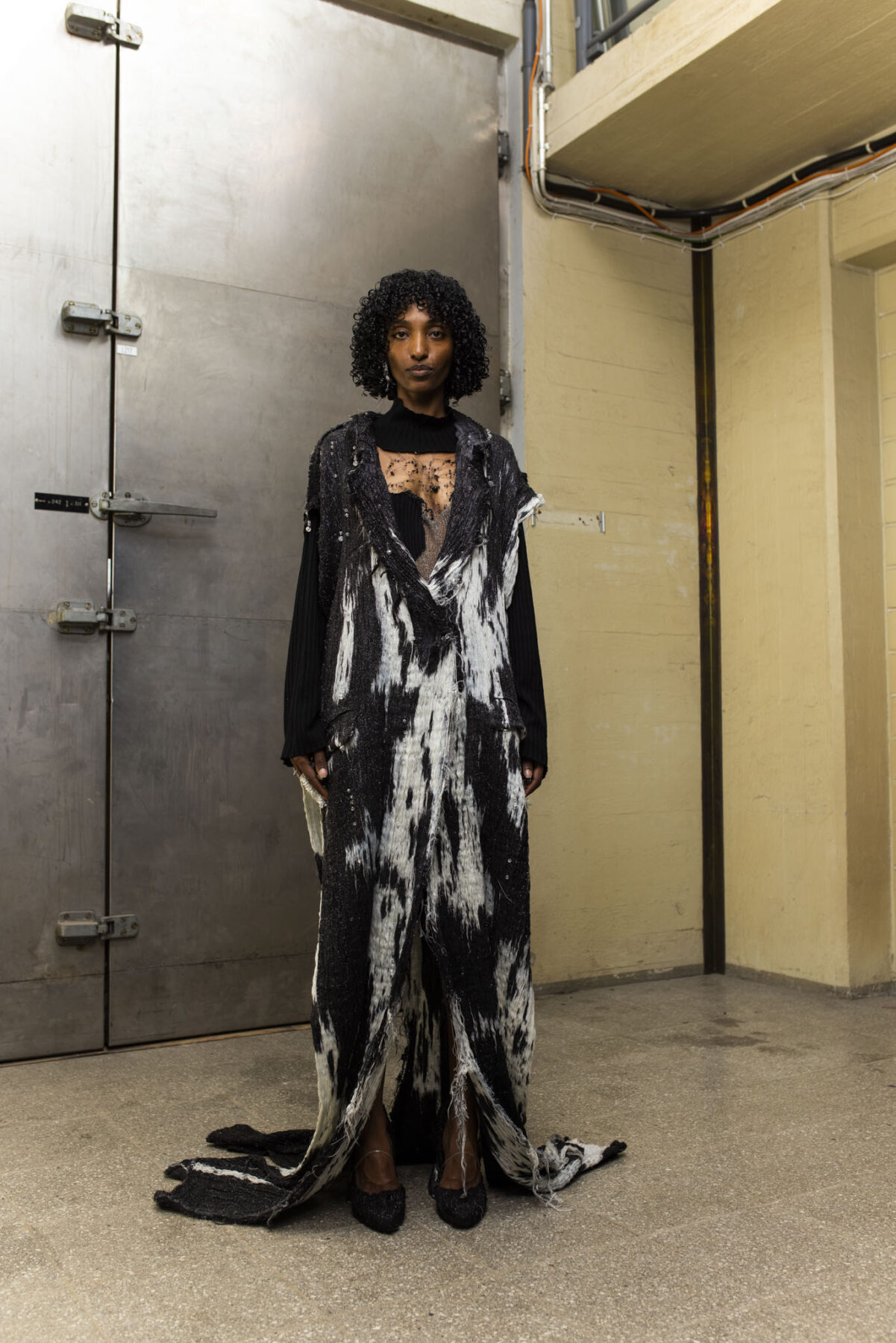 YL_01
YL_01

Yu-Chen Lin MA Graduate collection Photographer: Sofia Okkonen
YL_01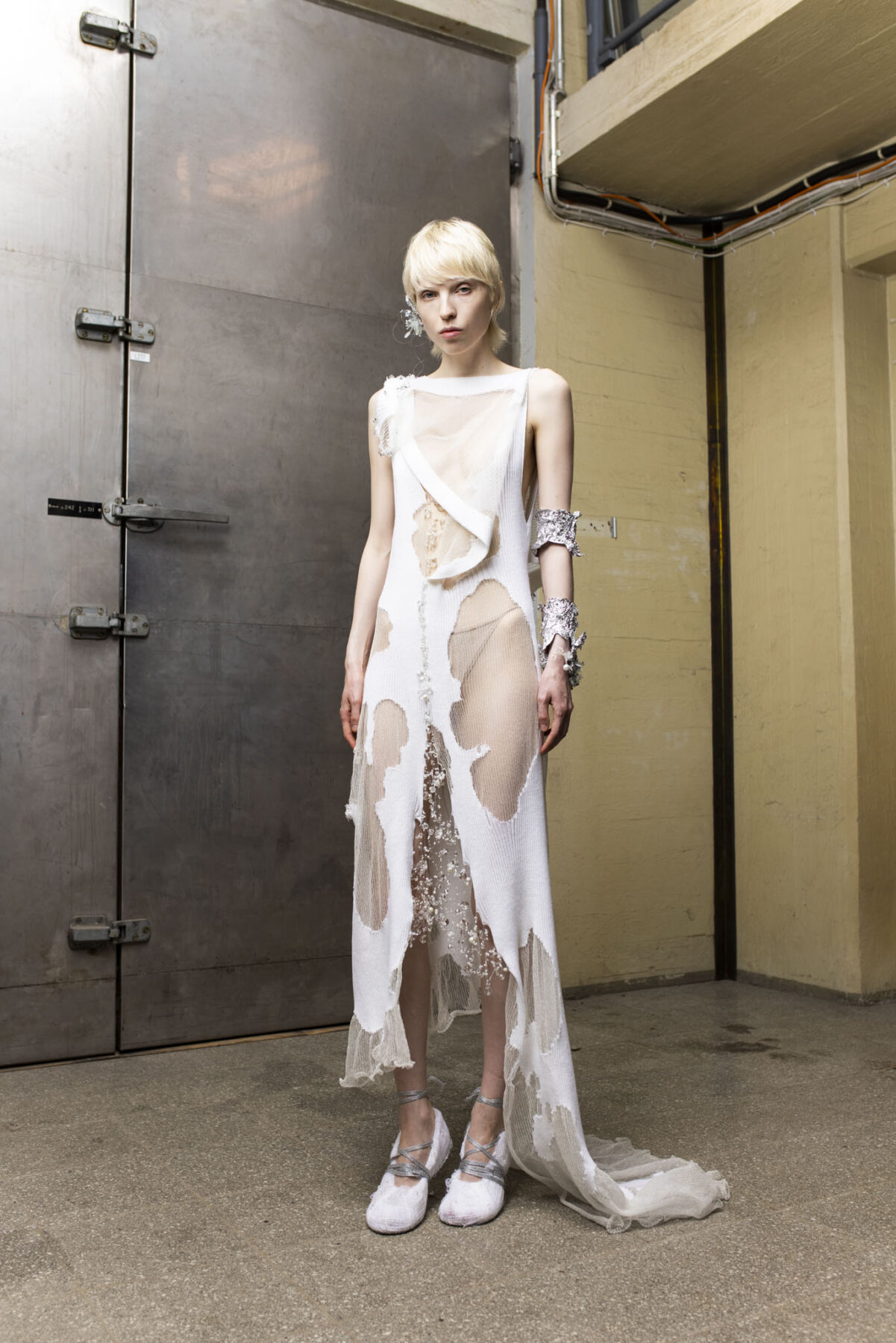 YL_02
YL_02

Yu-Chen Lin MA Graduate collection Photographer: Sofia Okkonen
YL_02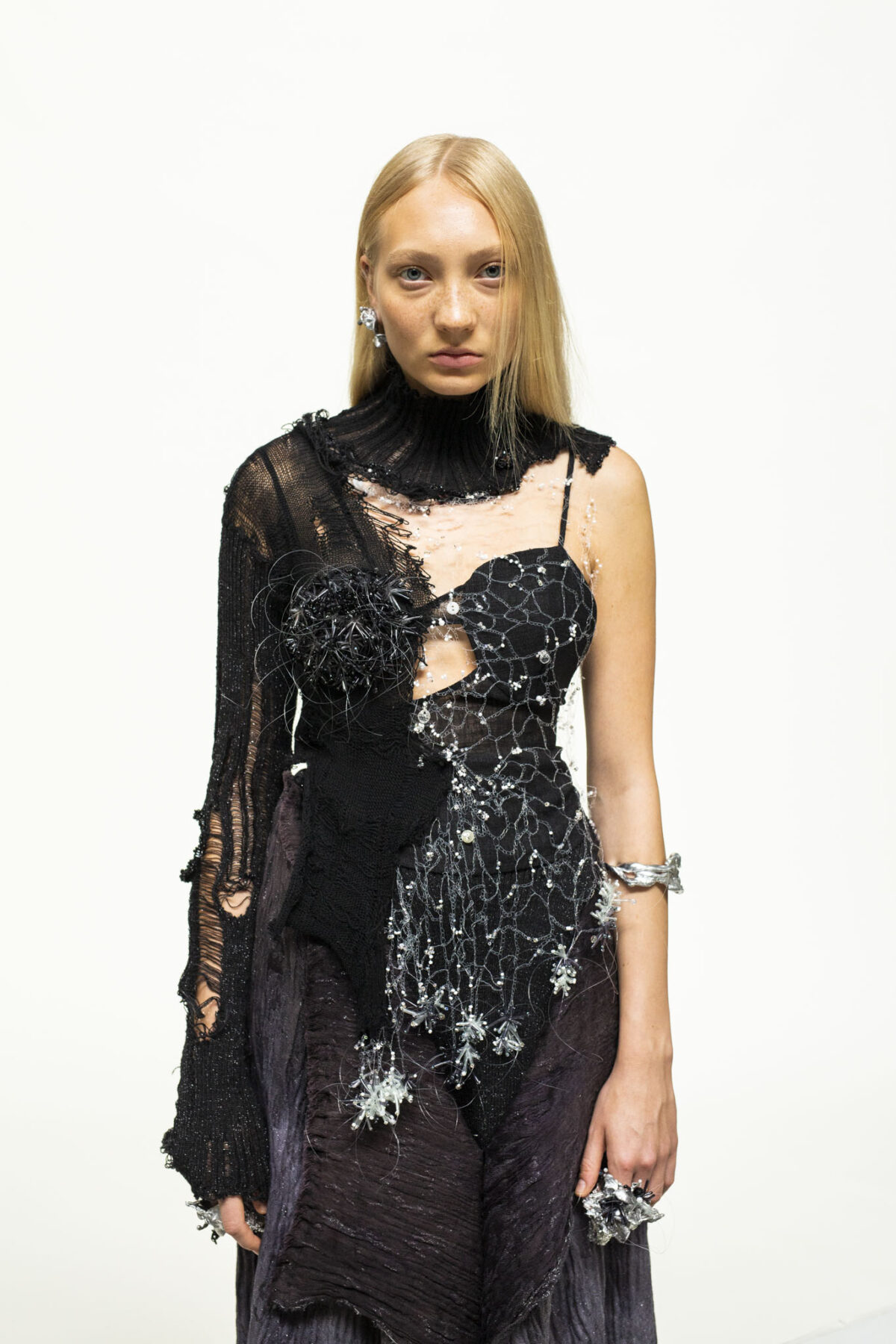 YL_03
YL_03

Yu-Chen Lin MA Graduate collection Photographer: Sofia Okkonen
YL_03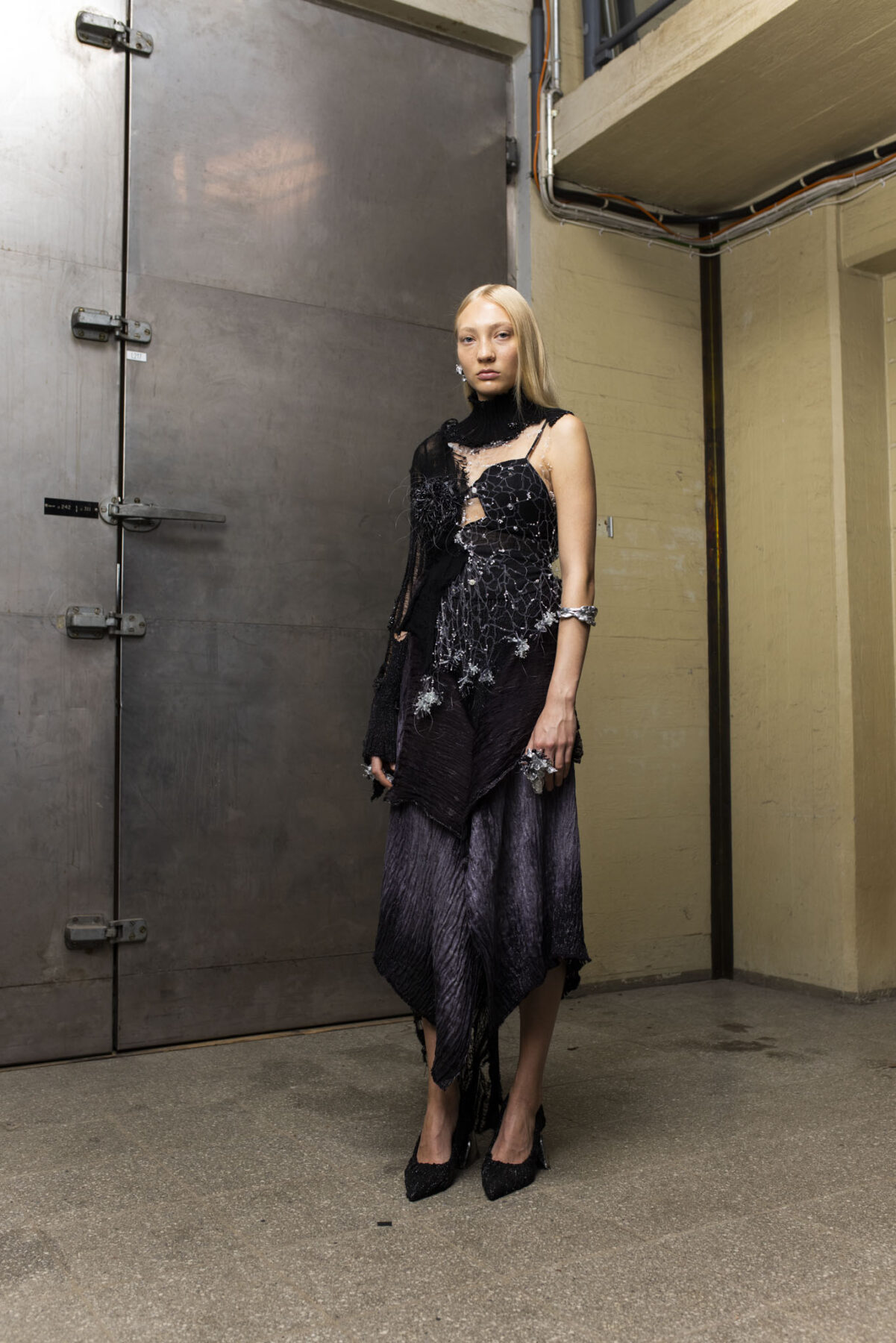 YL_04
YL_04

Yu-Chen Lin MA Graduate collection Photographer: Sofia Okkonen
YL_04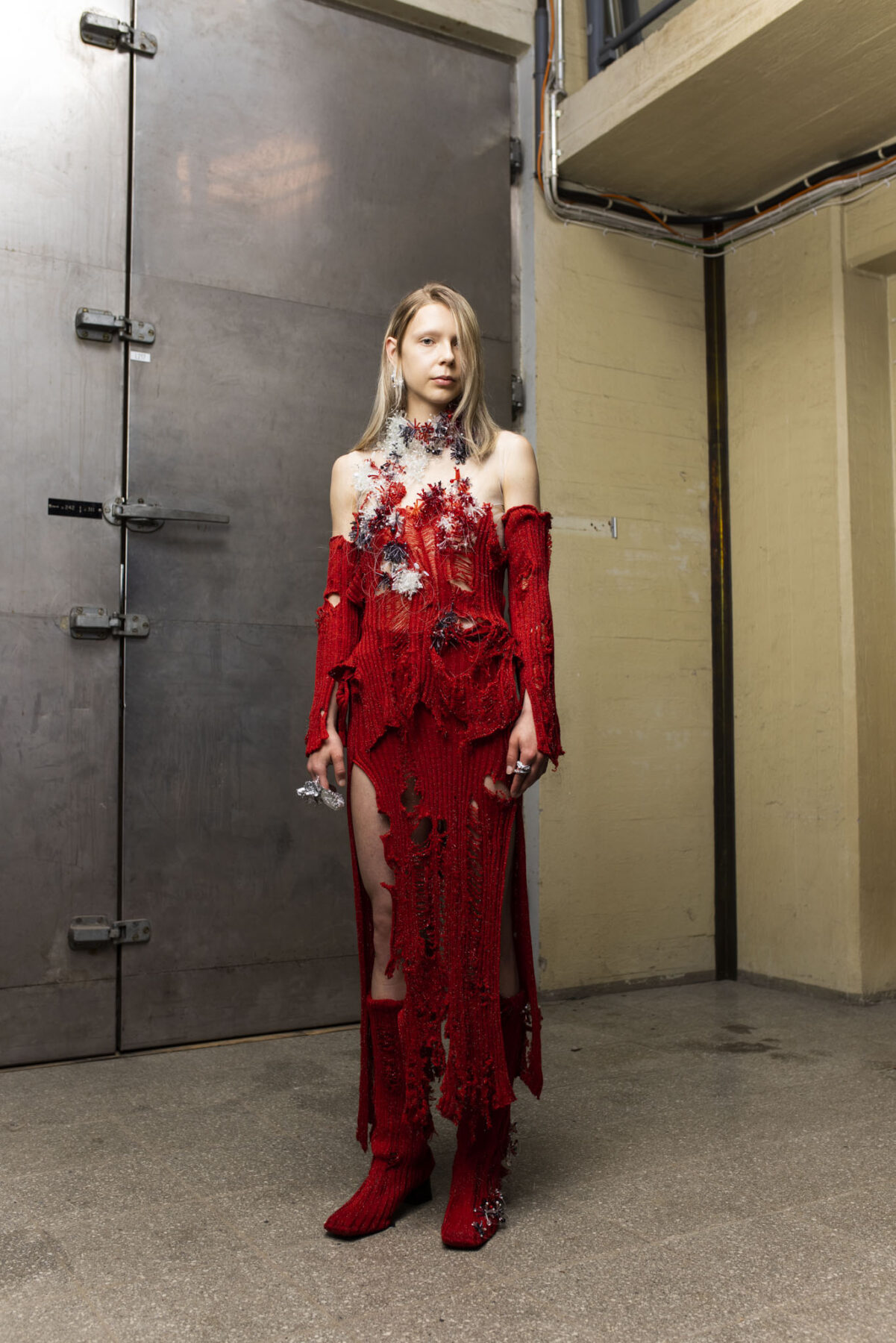 YL_05
YL_05

Yu-Chen Lin MA Graduate collection Photographer: Sofia Okkonen
YL_05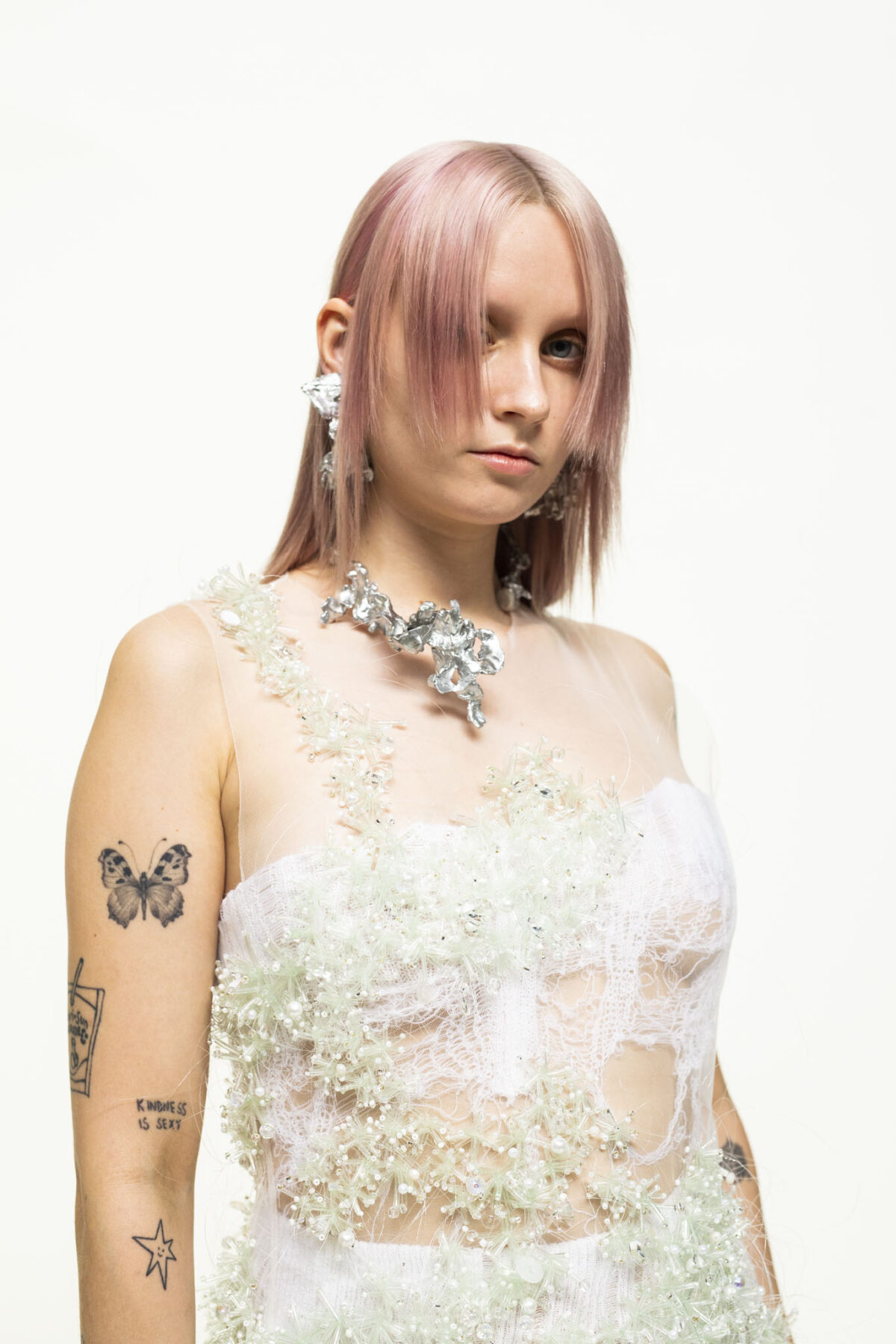 YL_06
YL_06

Yu-Chen Lin MA Graduate collection Photographer: Sofia Okkonen
YL_06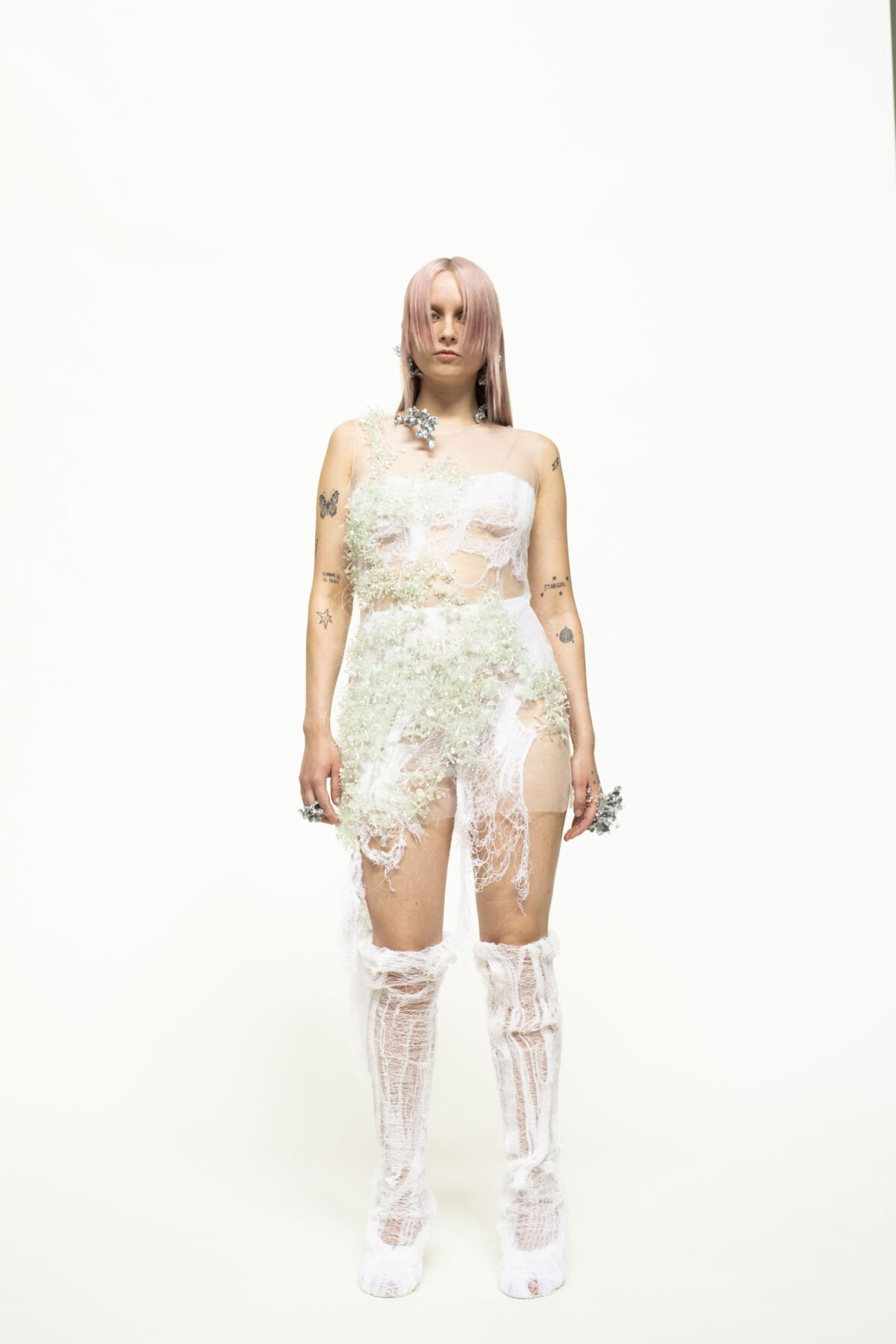 YL_07
YL_07

Yu-Chen Lin MA Graduate collection Photographer: Sofia Okkonen
YL_07Finding Beauty in Imperfection
The central idea of Yu-Chen Lin’s graduate collection is to celebrate the aesthetics of visible repair and to embrace imperfection of everyday dress. The collection is a dialogue between renewal and repair, an exploration of the beauty within imperfection by drawing inspiration from the Japanese philosophies of wabi-sabi, sashiko, and kintsugi. Embedded within the harsh embrace of the Finnish winter, this collection serves as a visual narrative of personal resilience and transformation.
– I think imperfection gives me the flexibility and freedom to create garments. It guided the whole process, Lin explains.
In the collection, Lin studied her own everyday life in Finland, paying special attention to the weather which is different from her native home. Furthermore, she also explored the internal and external experiences between herself, materials, and everyday life. She focused on the tattered beauty of broken textiles and aimed to reuse and repair them to give them a new life. In the process, repairing became a metaphor for overcoming her experiences of struggling with the harsh Finnish winter.
– At its core, my collection delves into the reinterpretation of imperfection, shifting its complication from a flaw to a source of inherent beauty. Like the delicate art of kintsugi, where broken ceramics are mended with precious metals, I wanted to embrace the visible scars of damage as intricate golden pathways to renewal.
These imperfections, rather than detracting from the essence of the garment, reflected her own narrative of growth and healing.
– This process transcended mere functionality, evolving into an intimate exchange where the materials themselves dictate the final form, guided by the golden threads of repair. The collection is not just a showcase of fashion, but a living tableau of transformation – a visual symphony that resonates with the rhythms of nature and the human spirit.
Through the interplay of texture, form, and narrative, each garment became a vessel for personal empowerment – a tangible reminder that imperfection, far from being a flaw, is a testament to the richness and depth of human experience.
Contact information:
Yu-Chen Lin
+358 466150168
@0_yuchen
Sini-Pilvi Kiilunen
(ma)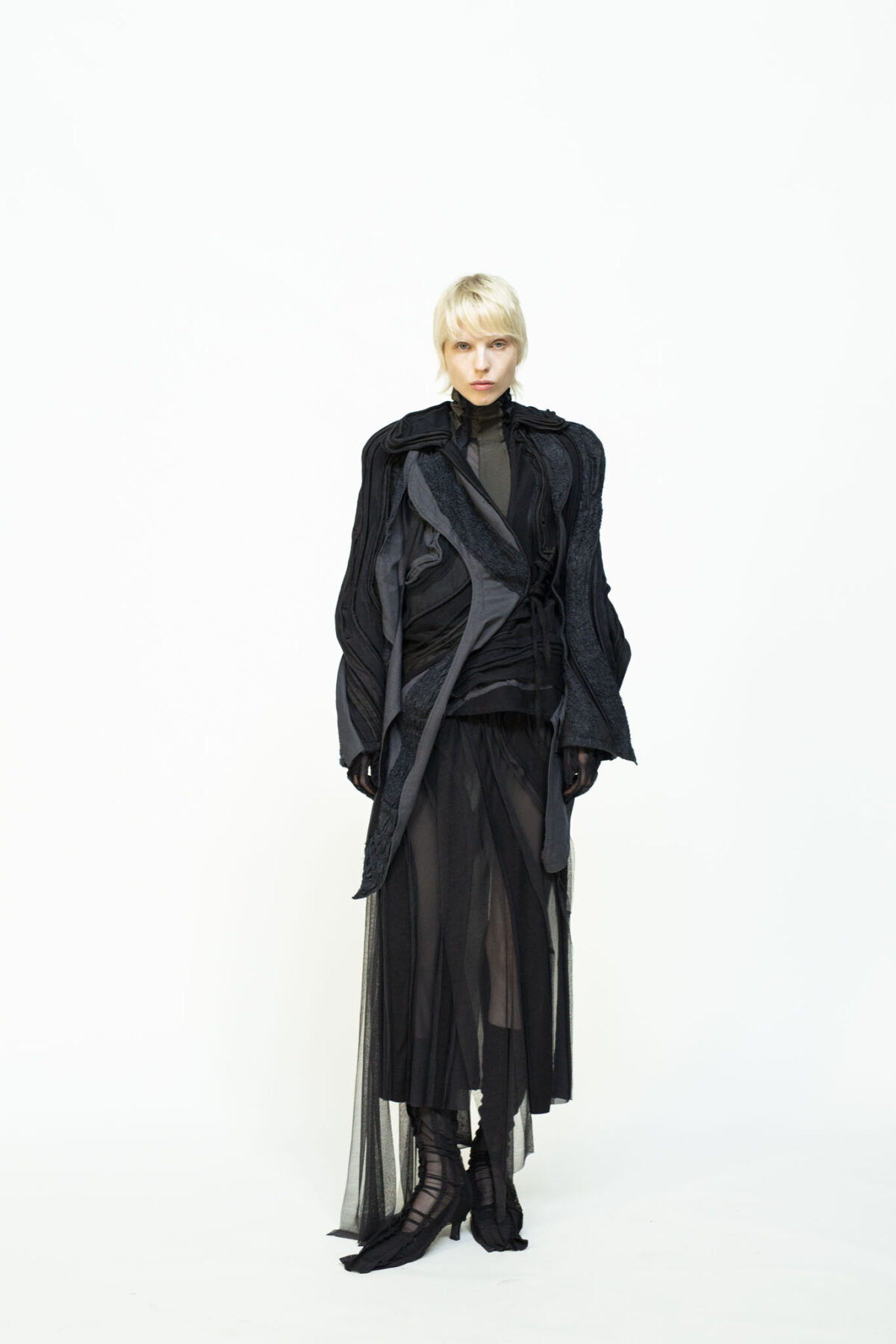 SK_01
SK_01

Sini-Pilvi Kiilunen MA Graduate collection Photographer: Sofia Okkonen
SK_01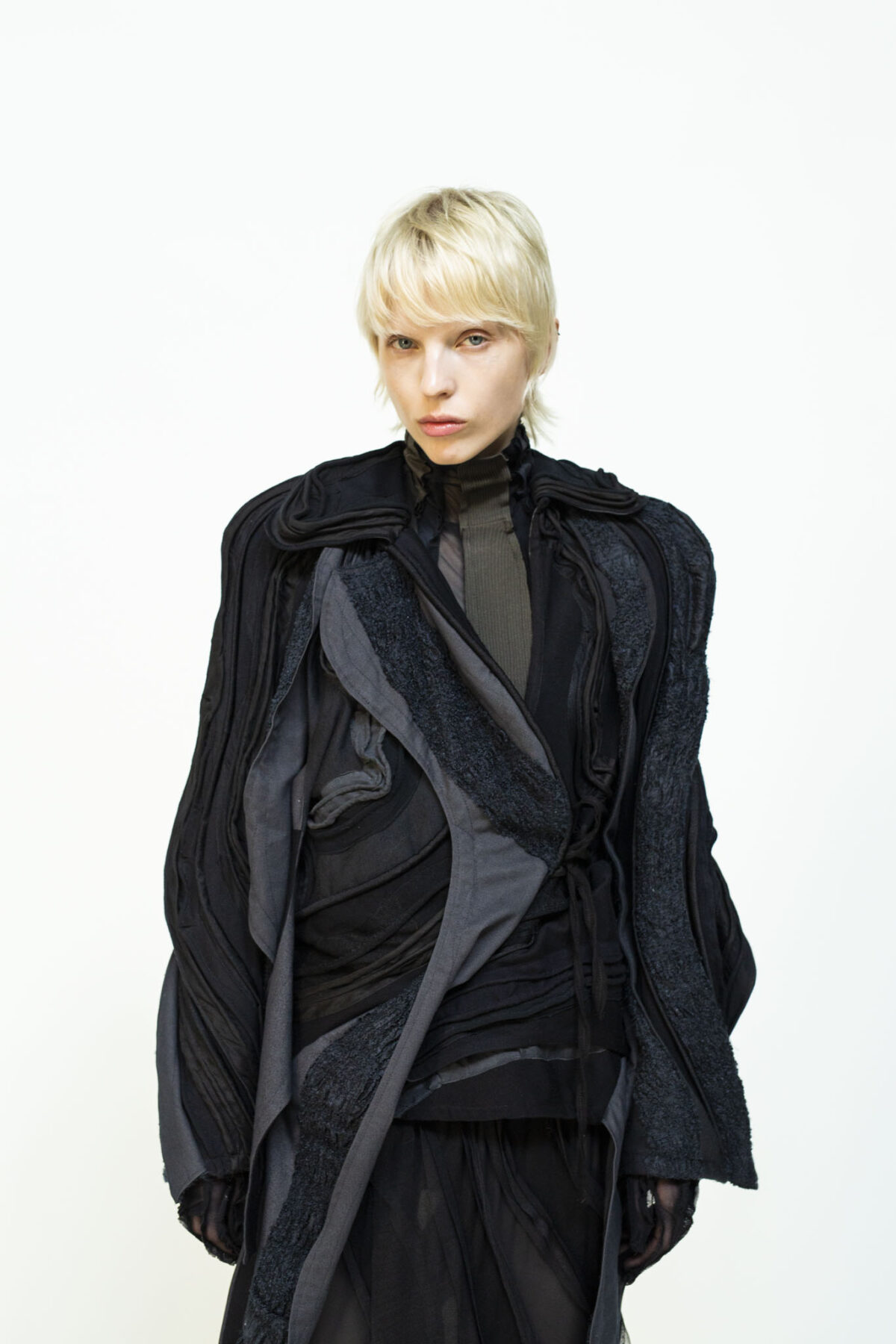 SK_02
SK_02

Sini-Pilvi Kiilunen MA Graduate collection Photographer: Sofia Okkonen
SK_02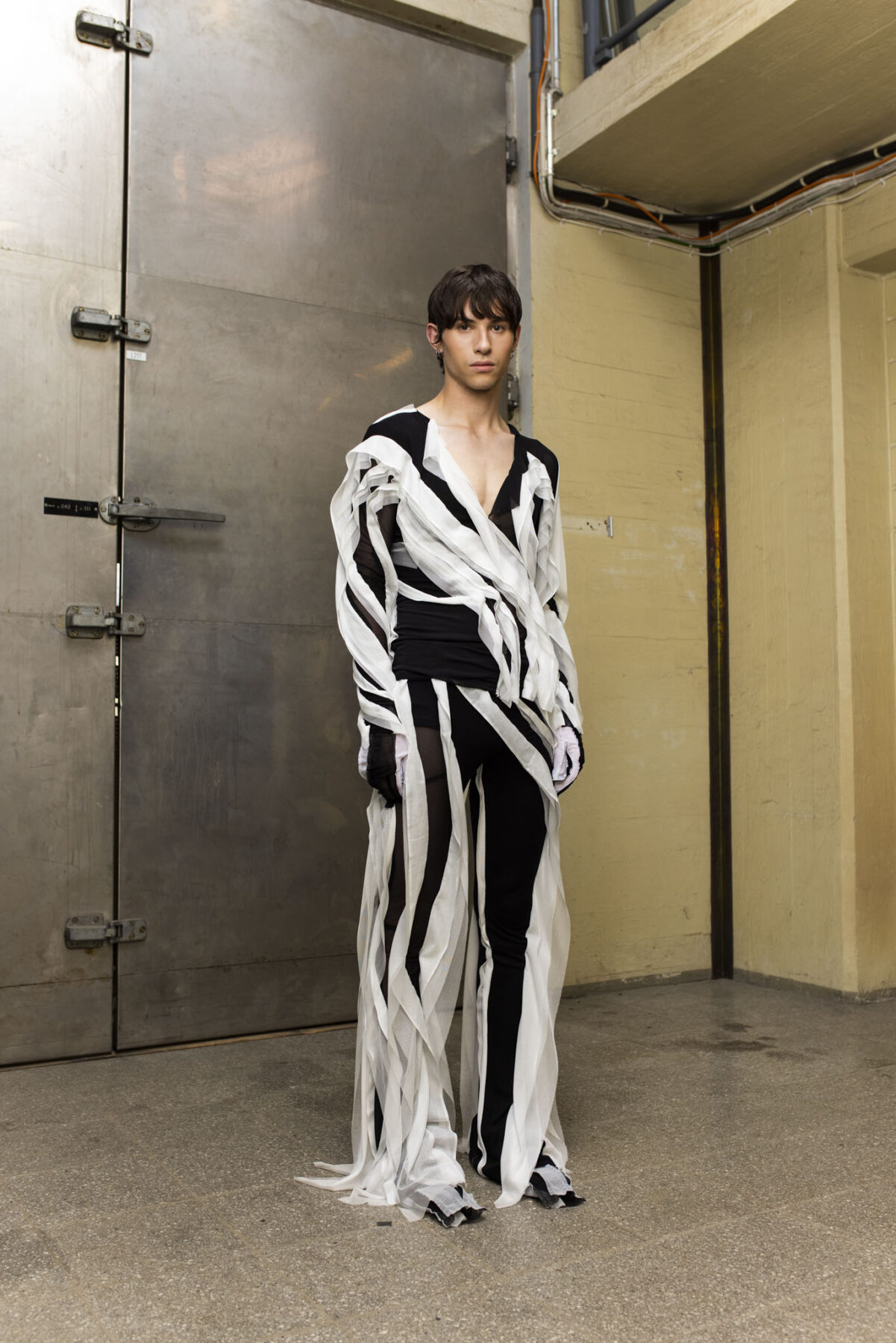 SK_03
SK_03

Sini-Pilvi Kiilunen MA Graduate collection Photographer: Sofia Okkonen
SK_03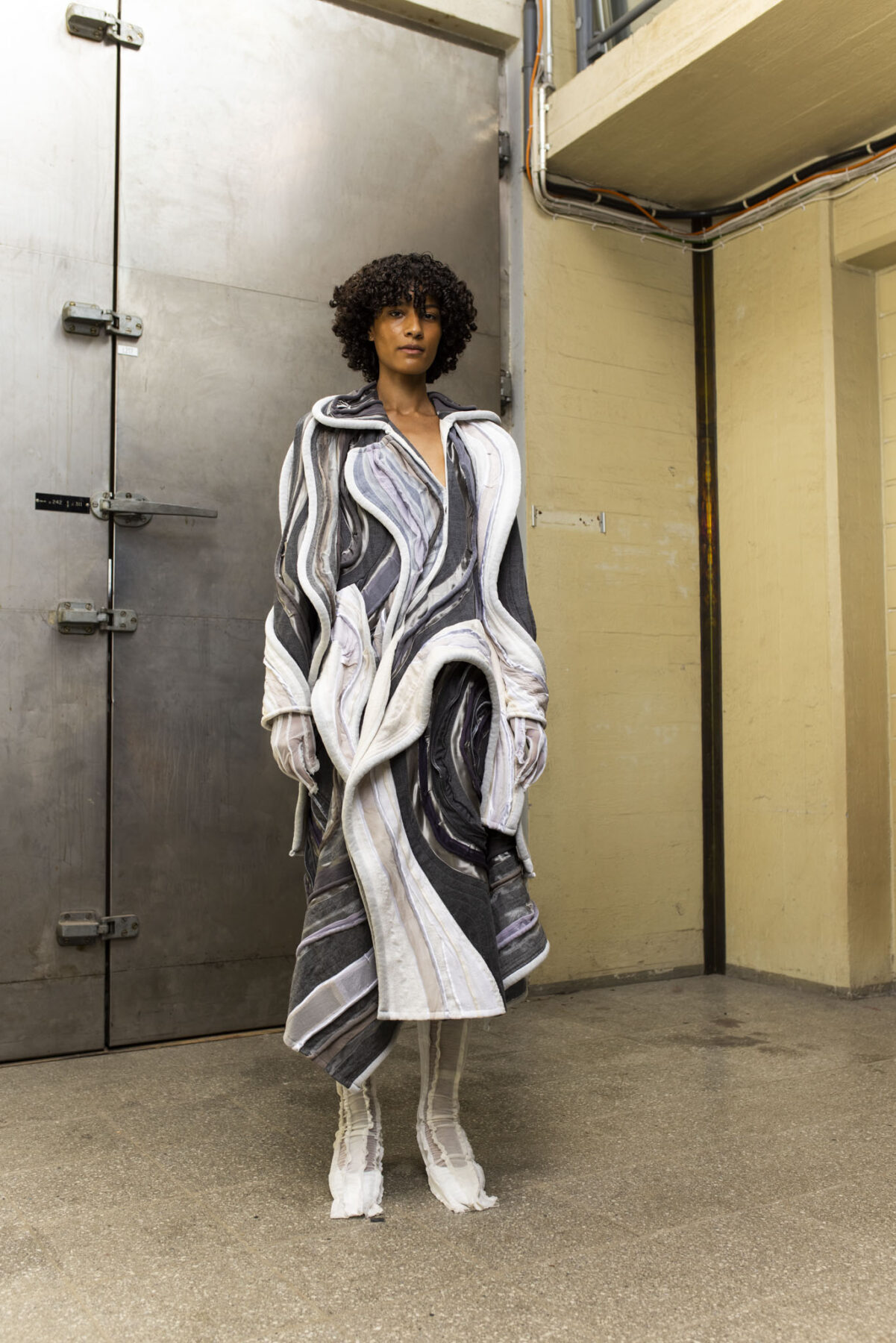 SK_04
SK_04

Sini-Pilvi Kiilunen MA Graduate collection Photographer: Sofia Okkonen
SK_04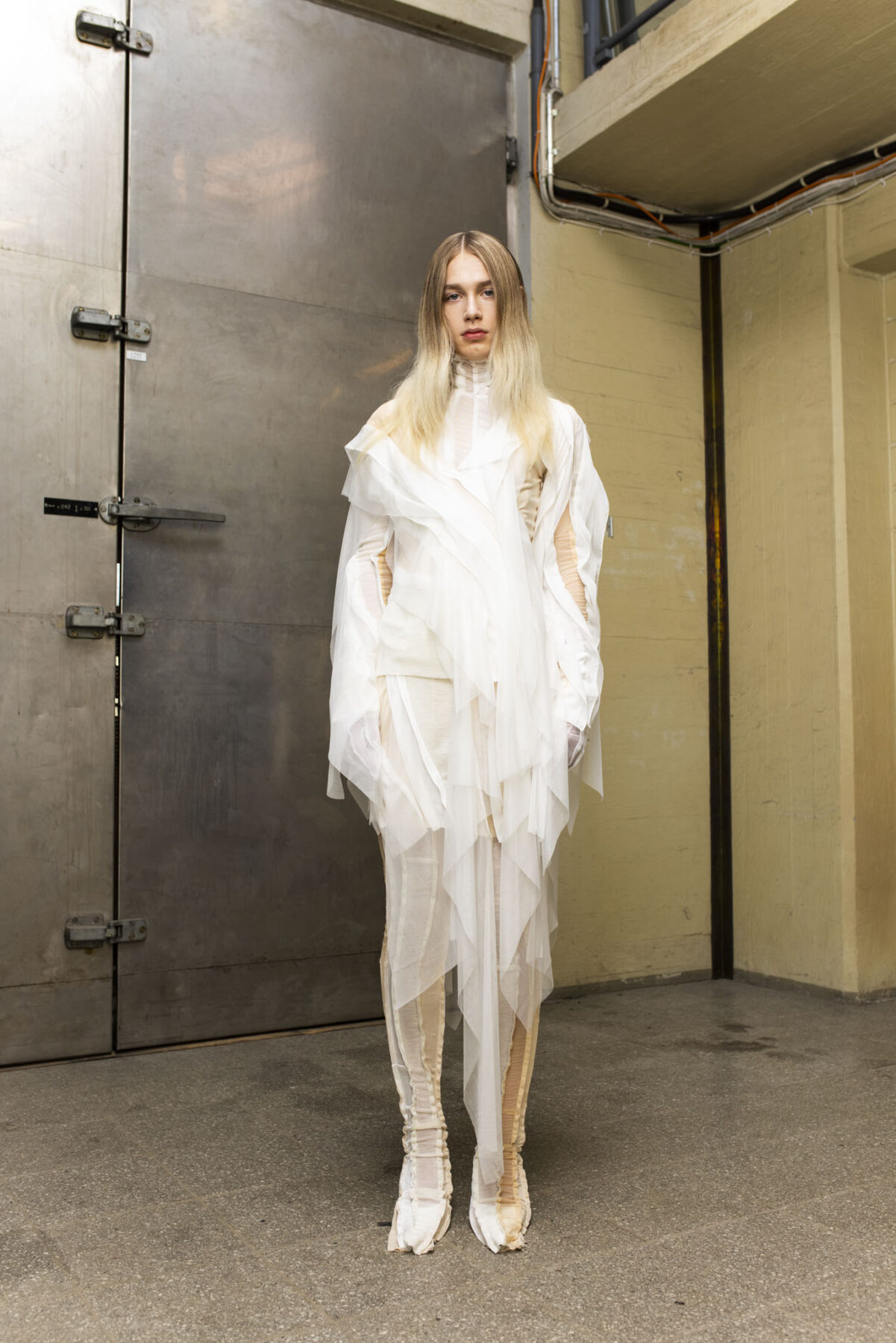 SK_05
SK_05

Sini-Pilvi Kiilunen MA Graduate collection Photographer: Sofia Okkonen
SK_05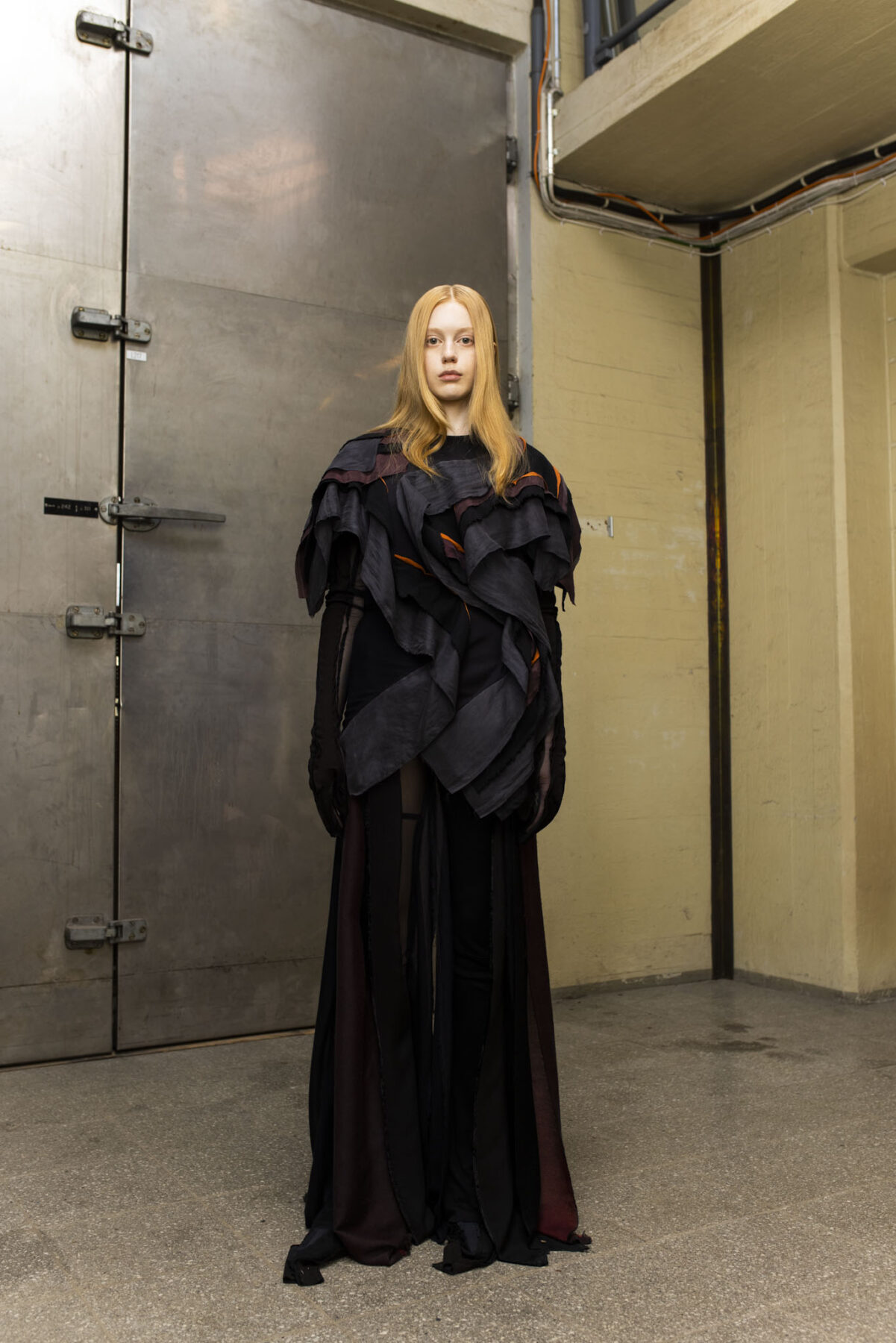 SK_06
SK_06

Sini-Pilvi Kiilunen MA Graduate collection Photographer: Sofia Okkonen
SK_06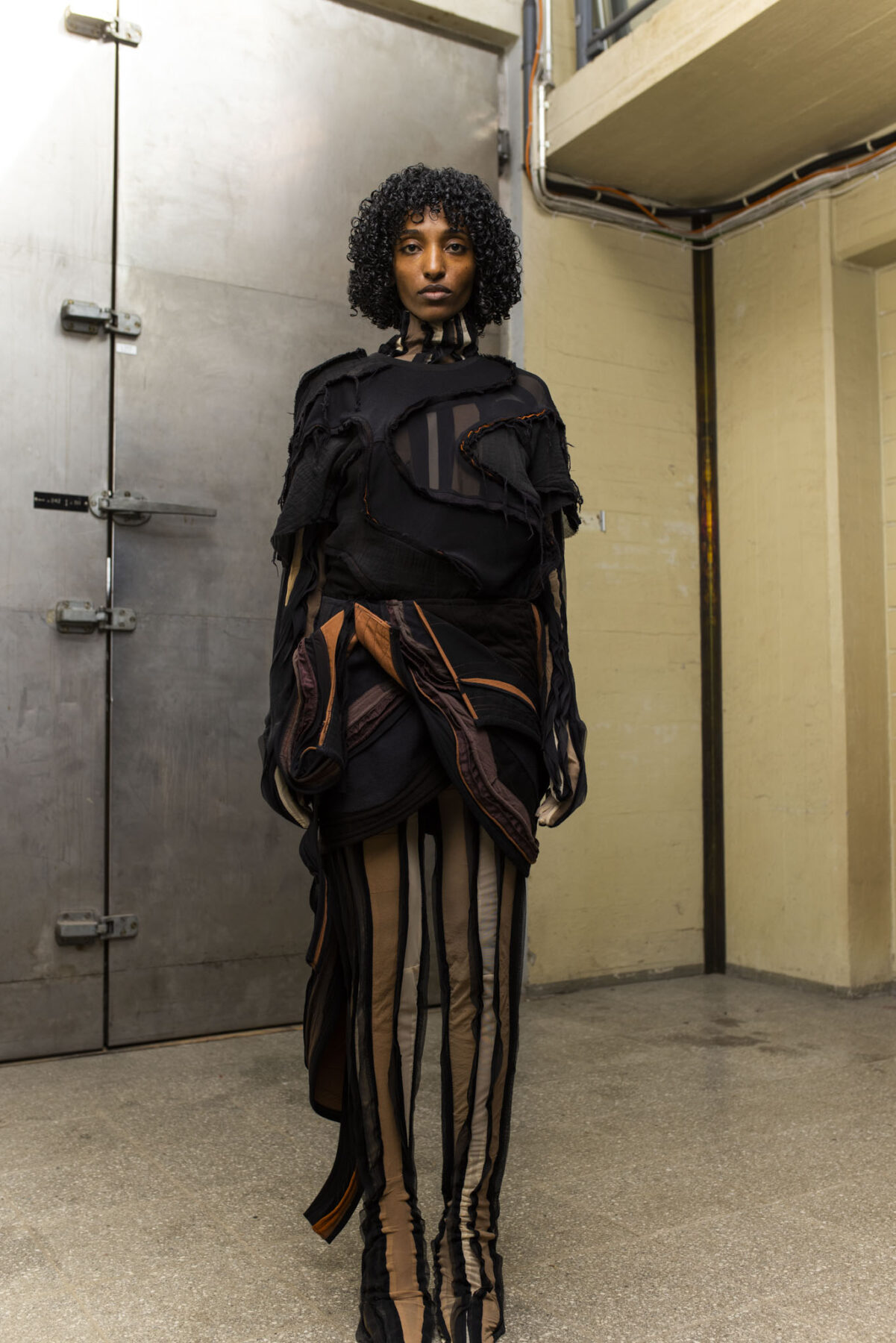 SK_07
SK_07

Sini-Pilvi Kiilunen MA Graduate collection Photographer: Sofia Okkonen
SK_07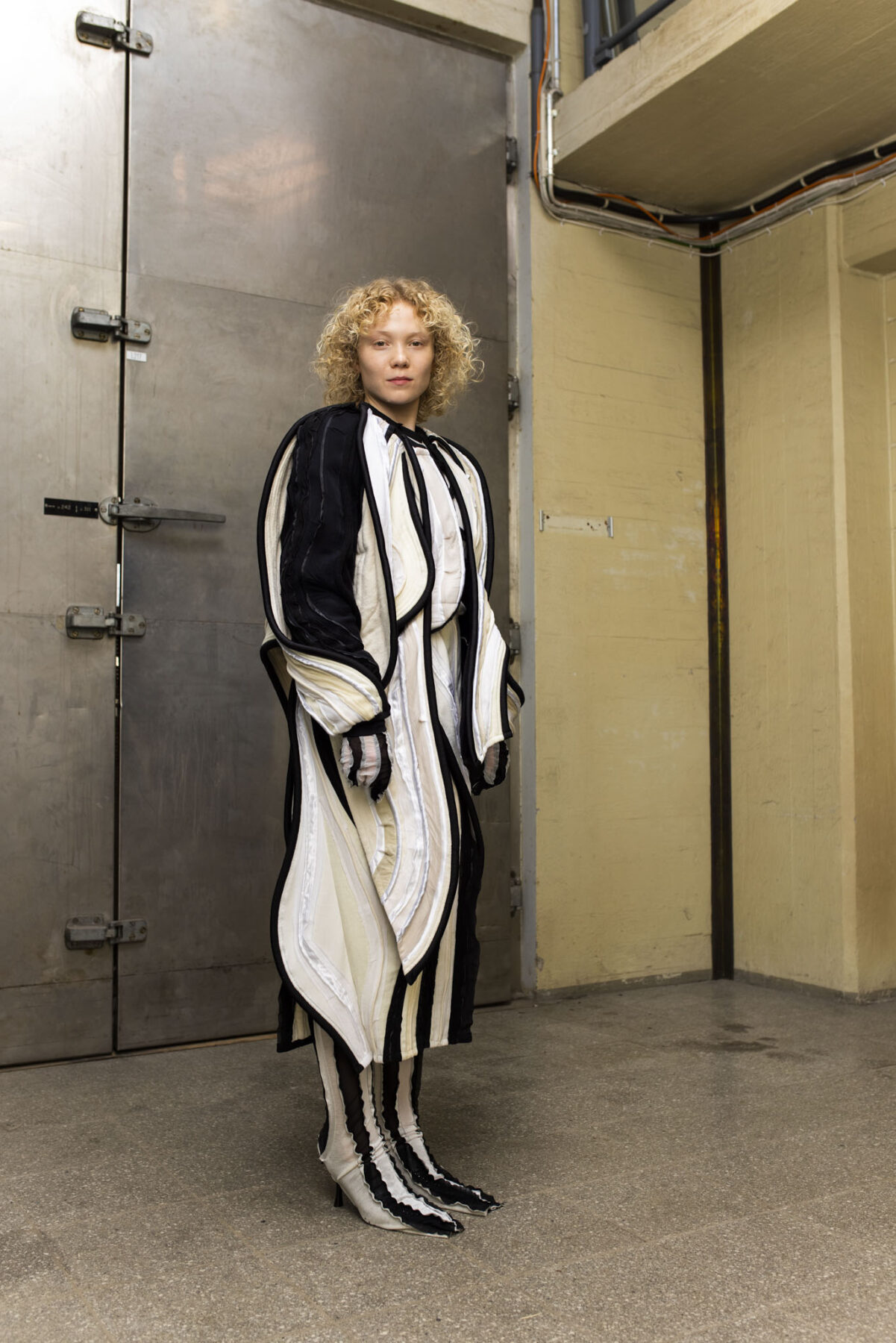 SK_08
SK_08

Sini-Pilvi Kiilunen MA Graduate collection Photographer: Sofia Okkonen
SK_08Developing new personalised patternmaking methods
The primary goal of Sini-Pilvi Kiilunen’s graduate collection was to develop a personalised patternmaking method. The emphasis was on an experimental process, facilitated by digital software, to test various patternmaking methods.
Utilising digital tools, Kiilunen developed a method that allowed her to blend traditional craftsmanship with modern technology. With CLO3D, she could design and visualise her creations in a virtual environment, enabling adjustments and alterations before bringing them to life. This uses less waste material in the design and prototyping process. The pattern drafting method also emphasises practicality. For instance, she creates patterns that are shaped small enough to utilise leftover materials effectively.
– My journey to develop a personalised patternmaking method began during my master’s studies, where I recognised the importance of having a strong foundation in patternmaking, Kiilunen says.
Central to Kiilunen’s method is the concept of transformation. She starts with block patterns, which serve as the foundation for her designs. These patterns are then drafted into curved pattern shapes. This method transforms the block patterns into dynamic, multi-layered designs.
– Experimenting with different pattern-making tools, such as the CLO3D, allowed me to refine my design methodology.
Kiilunen emphasises how the pattern serves as the framework for the creativity that follows. Once the pattern is created, it is possible to create a secondary process where the materials and construction techniques are decided. Separating these phases allowed her to broaden her creative exploration and gave clarity to the design process.
Additionally, Kiilunen intended to avoid conducting external visual research. Instead, researching different methods on how to experiment with patterns took place. This minimalistic approach served well as a starting point because it centred the focus on garment construction and pattern making. The flow of Kiilunen’s method is iterative, guided by the examination of the garment and its components from different perspectives at every developmental stage.
– For me, fashion design is an iterative hands-on process. By focusing on patterns and making methods, rather than external visual research, I was able to delve deeper into the garment construction.
Whilst making the garments, the tactile sensation guided the process, emphasising the importance of how each step feels for the hands. By designing each step to feel good to execute, whether it was the right choice of materials or the way of working, she ensured a sustainable and enjoyable making process for herself.
Contact information:
Sini-Pilvi Kiilunen
@kiilunen.design
Saimi Parikka
(ma)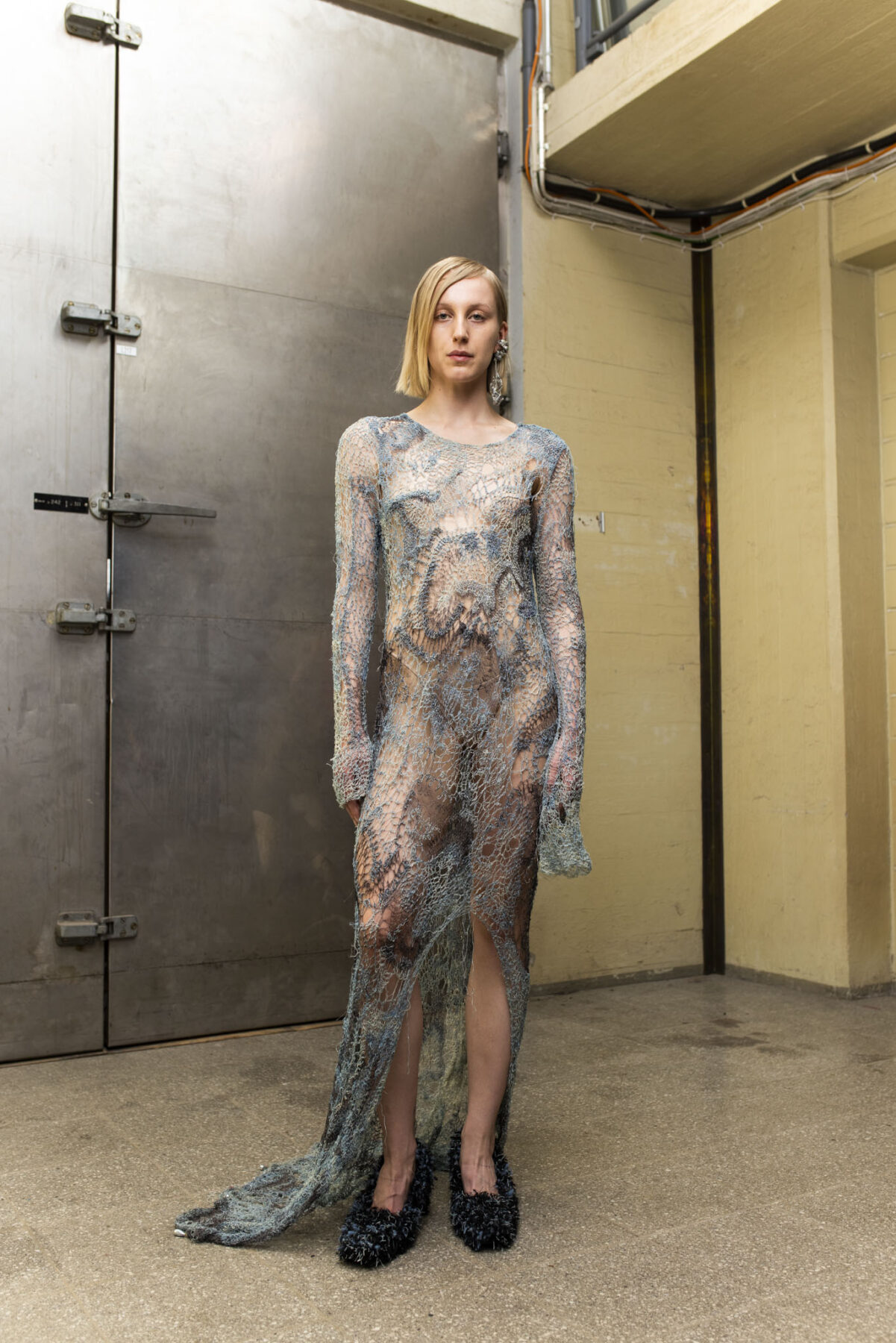 SP_01
SP_01

Saimi Parikka MA Graduate collection Photographer: Sofia Okkonen
SP_01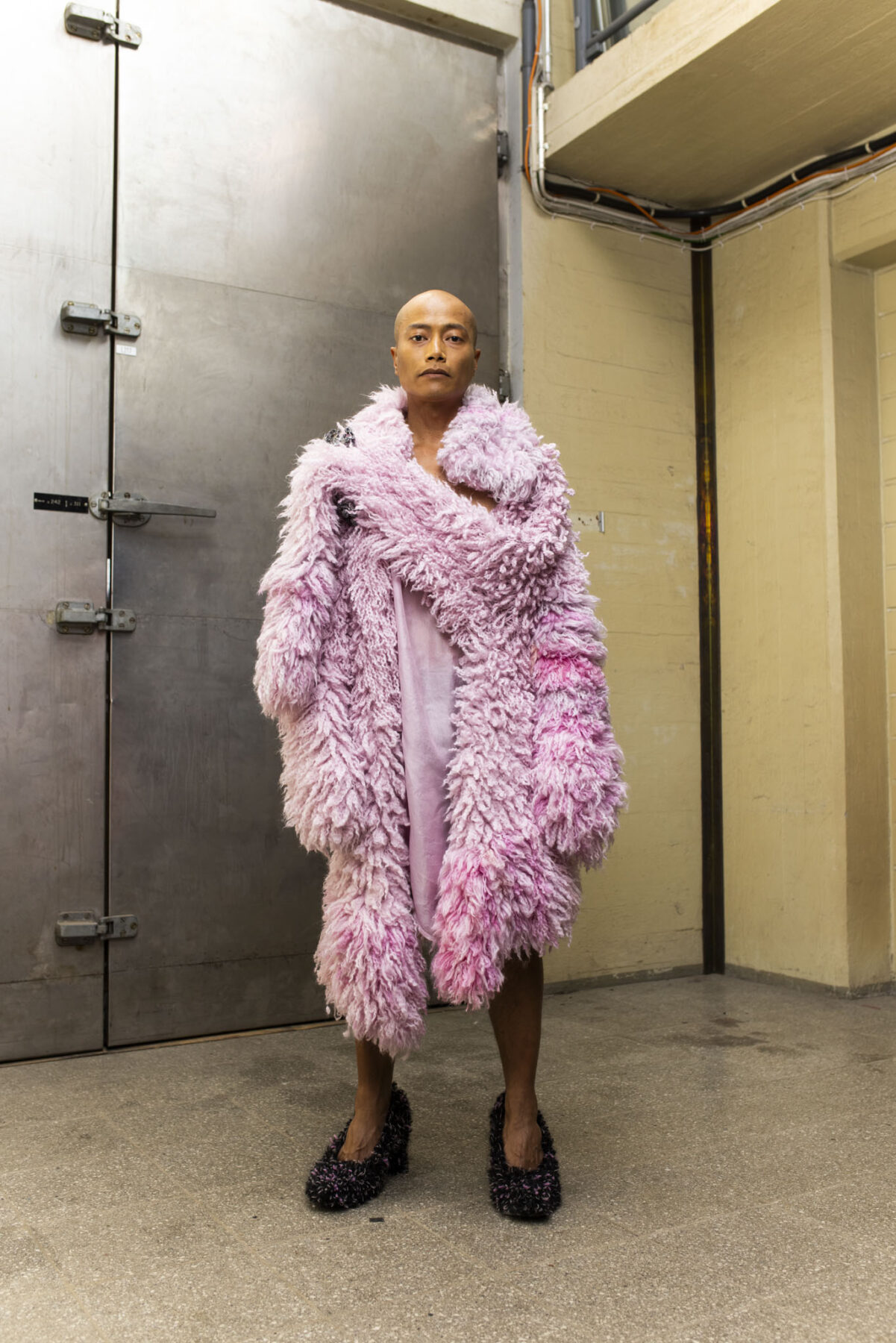 SP_02
SP_02

Saimi Parikka MA Graduate collection Photographer: Sofia Okkonen
SP_02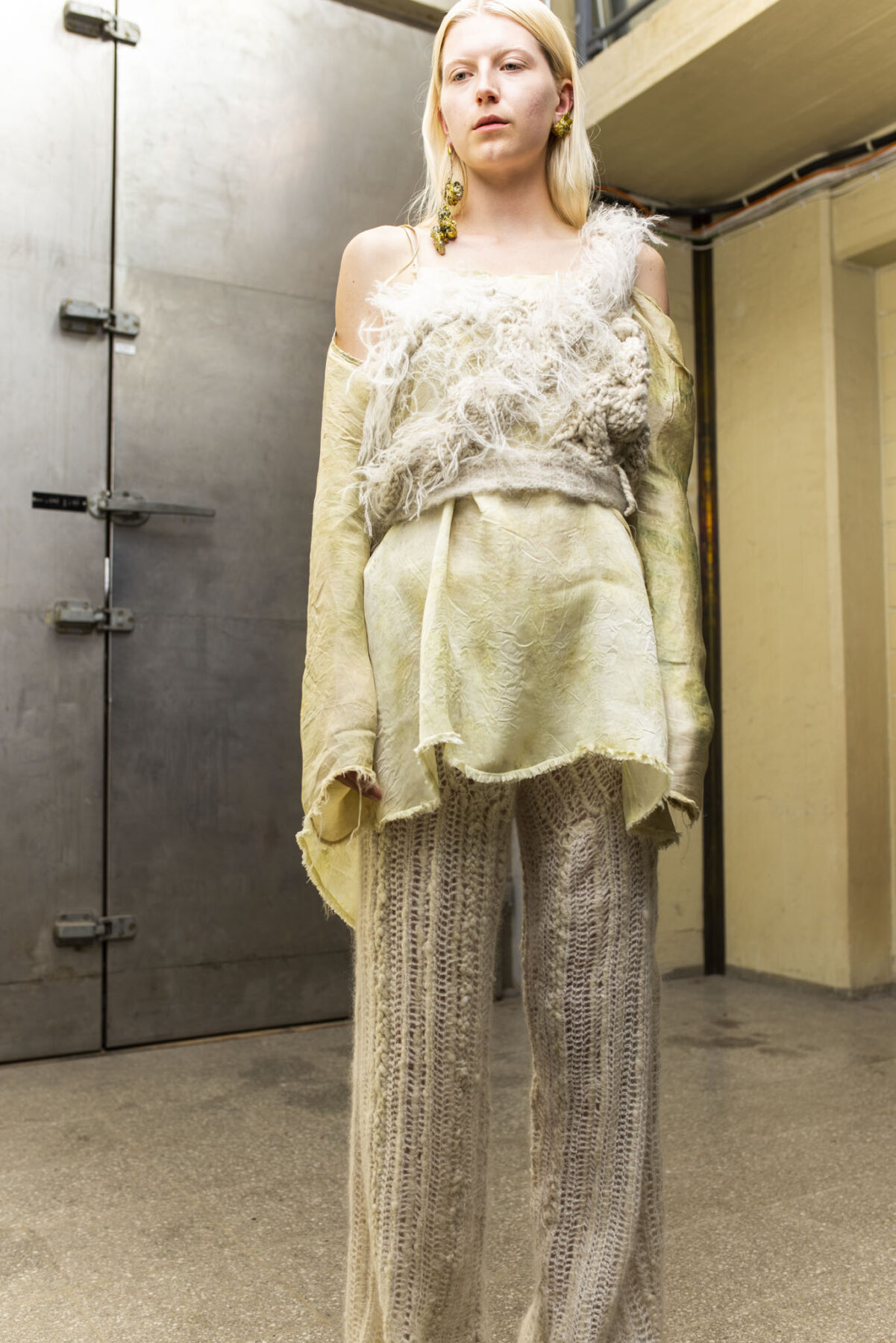 SP_03
SP_03

Saimi Parikka MA Graduate collection Photographer: Sofia Okkonen
SP_03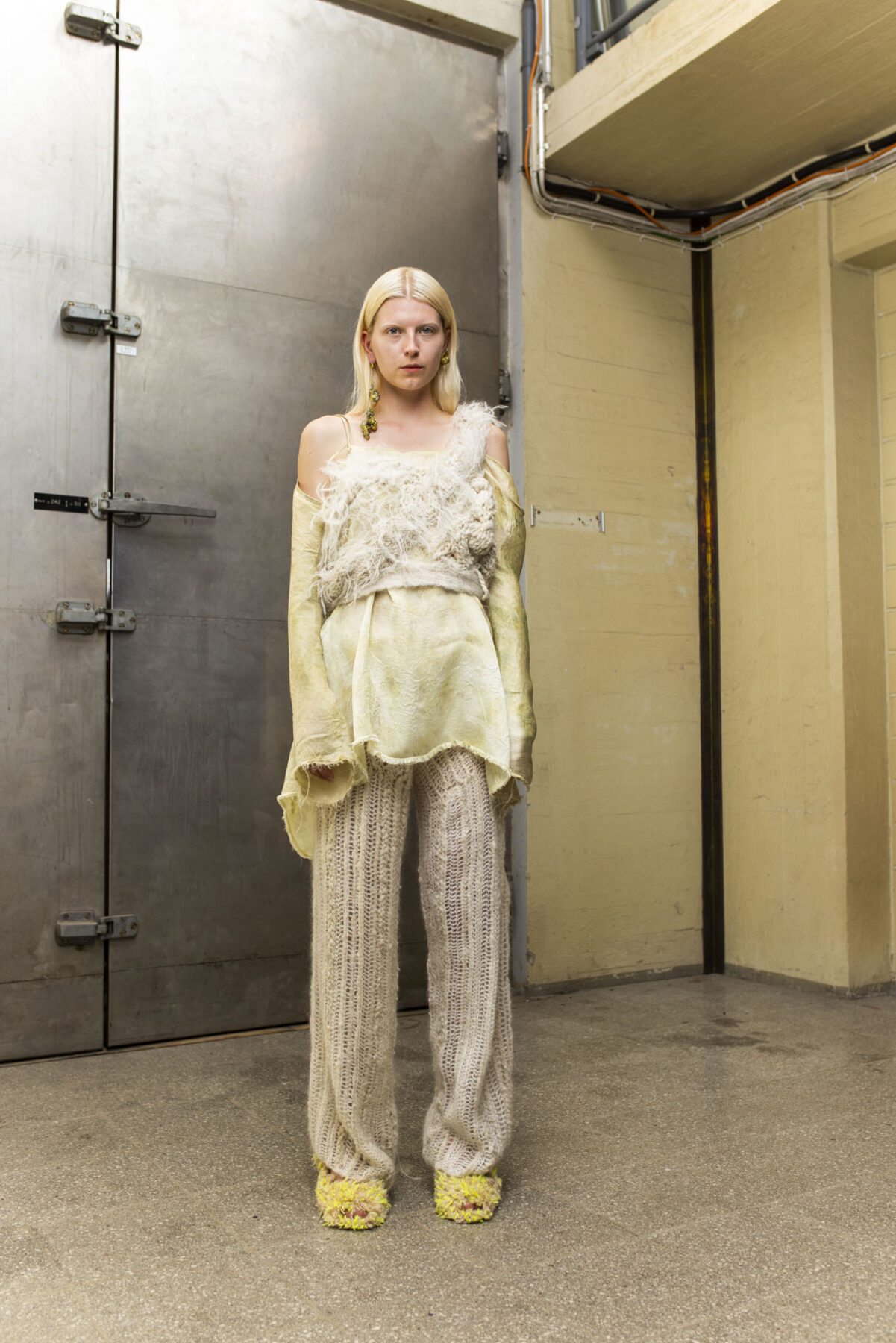 SP_04
SP_04

Saimi Parikka MA Graduate collection Photographer: Sofia Okkonen
SP_04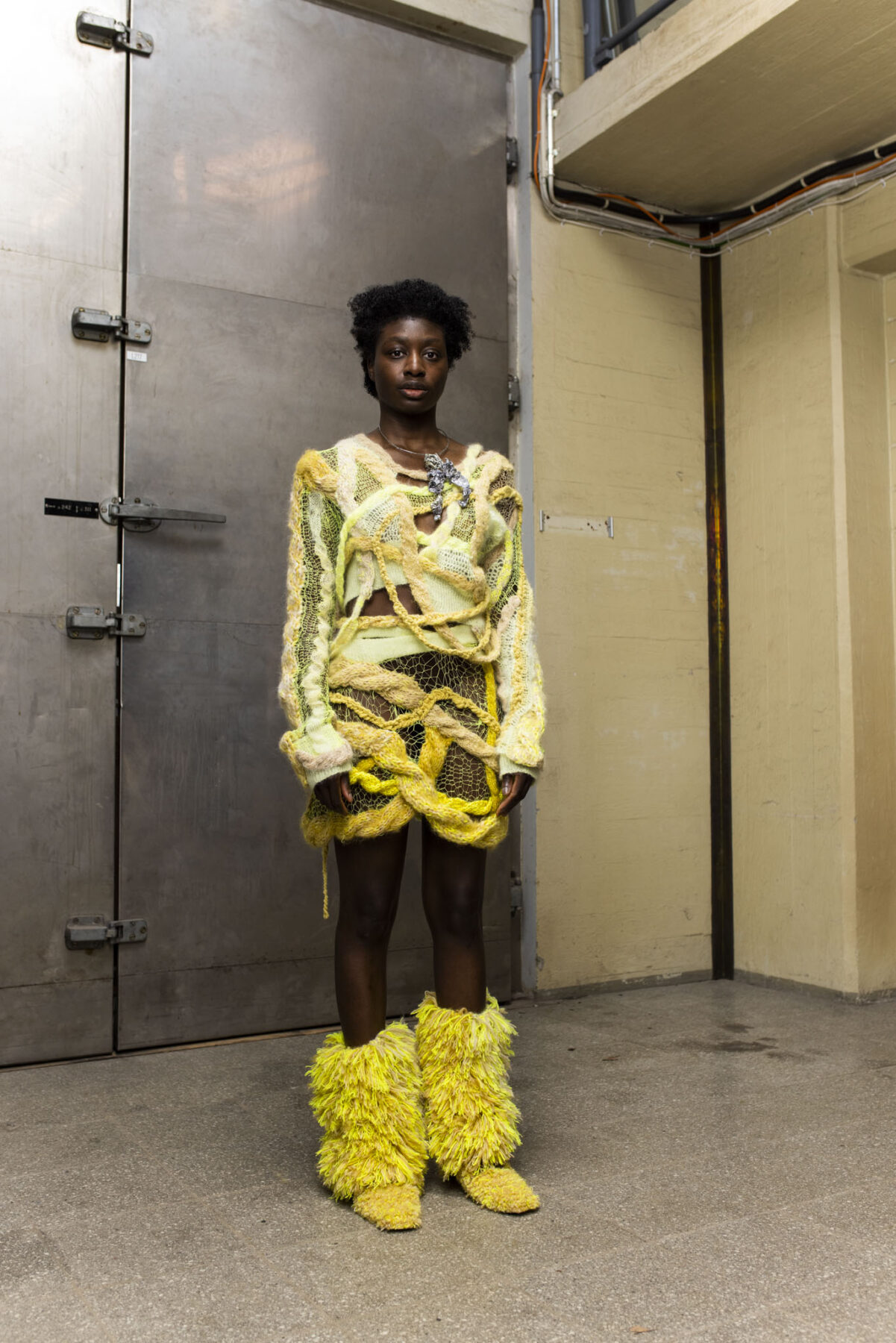 SP_05
SP_05

Saimi Parikka MA Graduate collection Photographer: Sofia Okkonen
SP_05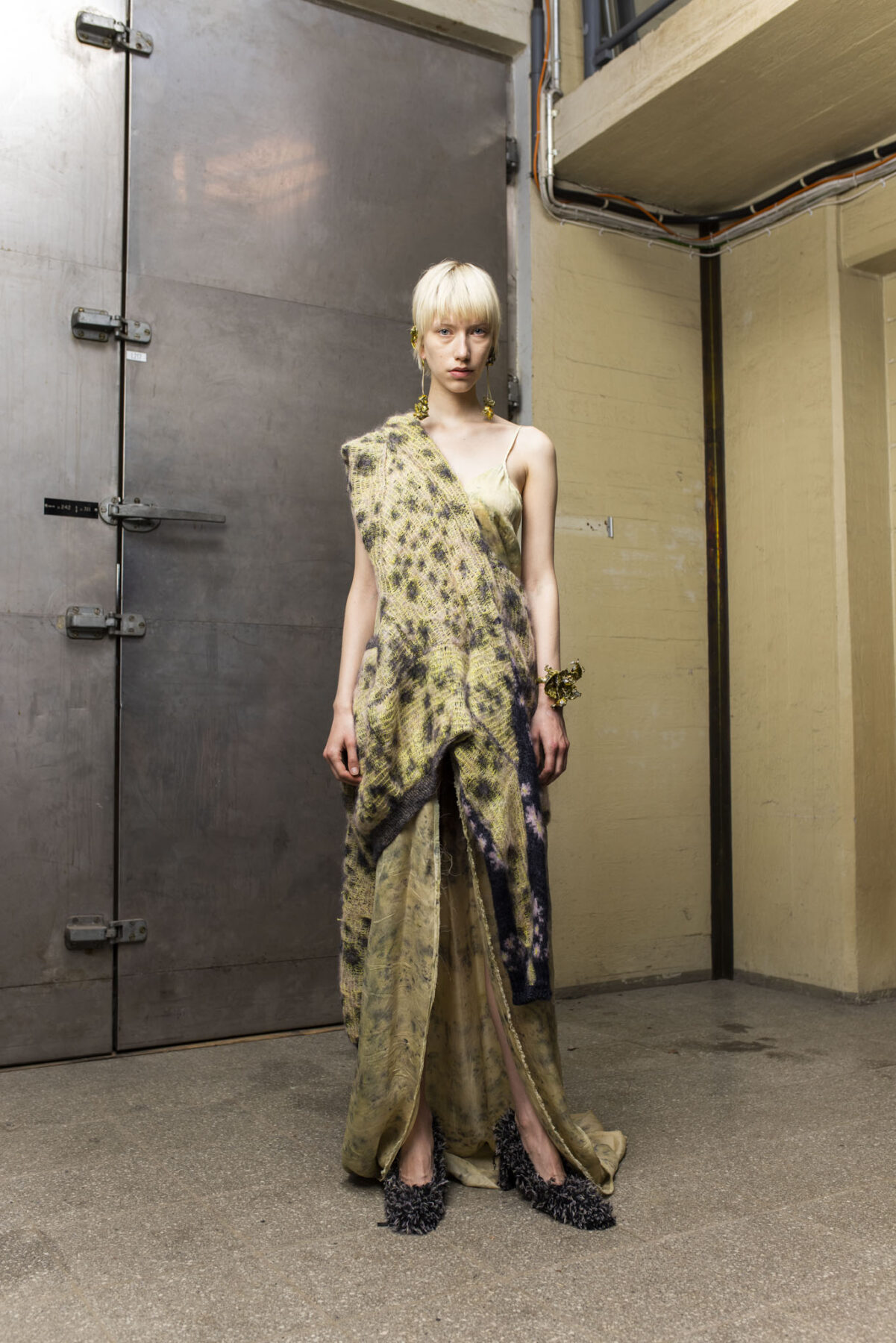 SP_06
SP_06

Saimi Parikka MA Graduate collection Photographer: Sofia Okkonen
SP_06Ultra-Slow Fashion
In her knitwear collection, Saimi Parikka studies the themes of ultra-slow fashion, emotional connection to the garments, comfort, and nature. She approaches these themes with self-processed Finnish sheep wool from sheep to yarn, natural dyes and slow handicraft textile techniques. Pictures of surrounding nature serve as inspiration and guidelines for knit structures.
– With this collection, I aim to find beauty, sustainability, and a peace of mind through the idea of ultra-slow fashion. I search for a deeper connection to these textiles and garments through grounding working methods. With these themes, I wish to comment on the disposable nature of the fashion industry, Parikka explains.
Ultra-slow fashion is a protest against the accelerating pace of the world and fashion. The repetitive, calming movement of hand knitting is proven to positively affect mental well-being and also a lovely counterbalance to everyday life’s overstimulation and hecticness.
– First, I made small pieces, such as cable knit tubes, and then draped or combined them. The possibility of focusing on one piece at a time and repeating this makes the calming effect of knitting possible to achieve. This way of working also gave me the freedom to play with yarns and later with how to combine these pieces into garments.
The collection also embraces craft and the DIY fashion culture. Parikka’s background is in textile design and the collection is very much material based.
– For me as a designer, it is very inspiring to combine DIY craft hobby culture with fashion. Through DIY fashion, the connection to the garment is very different. When successful, the time and effort put into the work creates a unique personal feeling to the end result. I feel this worked exceptionally well with the self-made wool yarn and garments made from that.
Contact information:
Saimi Parikka
+358405625576
Riikka Kiili
(ba)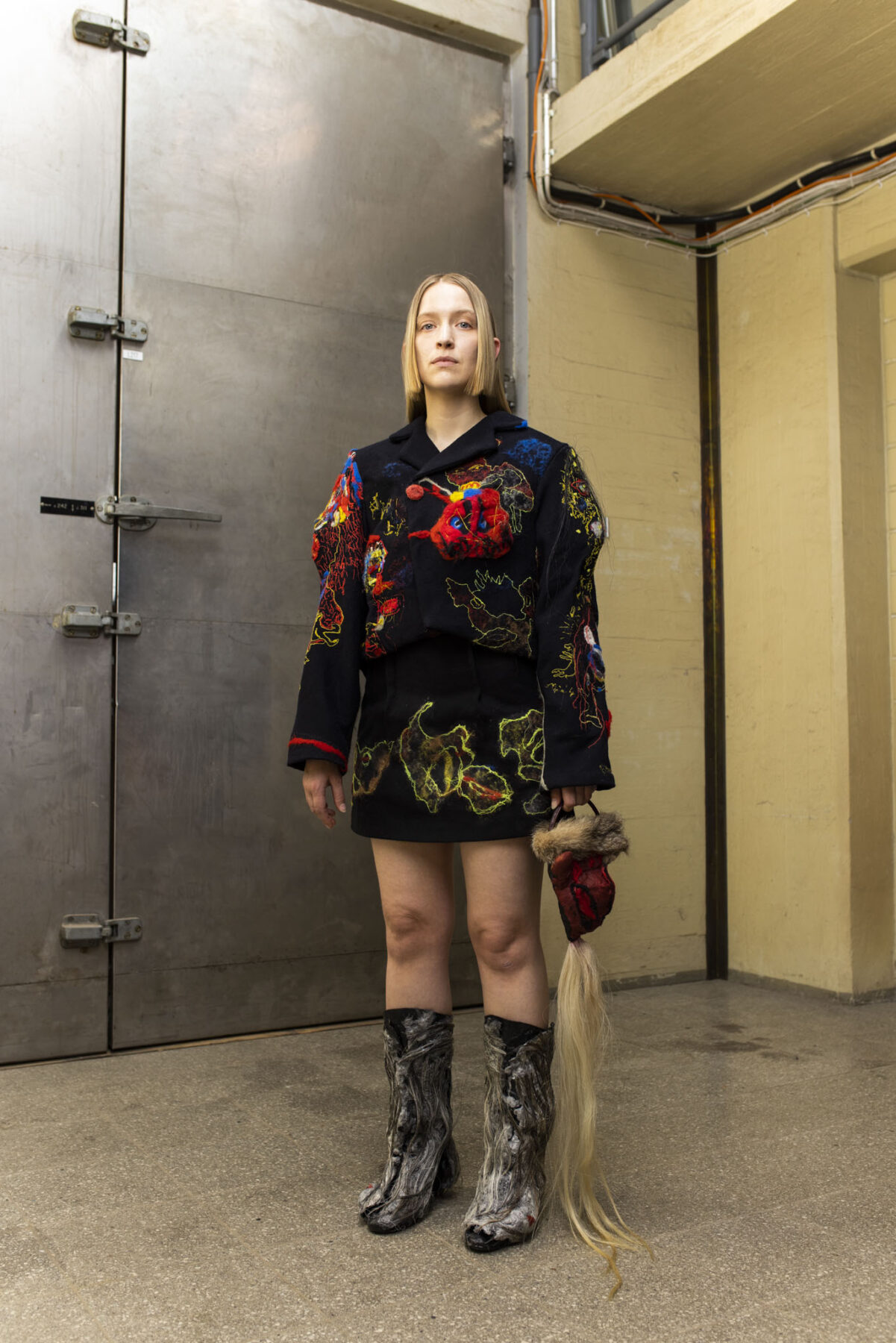 RK_01
RK_01

Riika Kiili BA Graduate collection Photographer: Sofia Okkonen
RK_01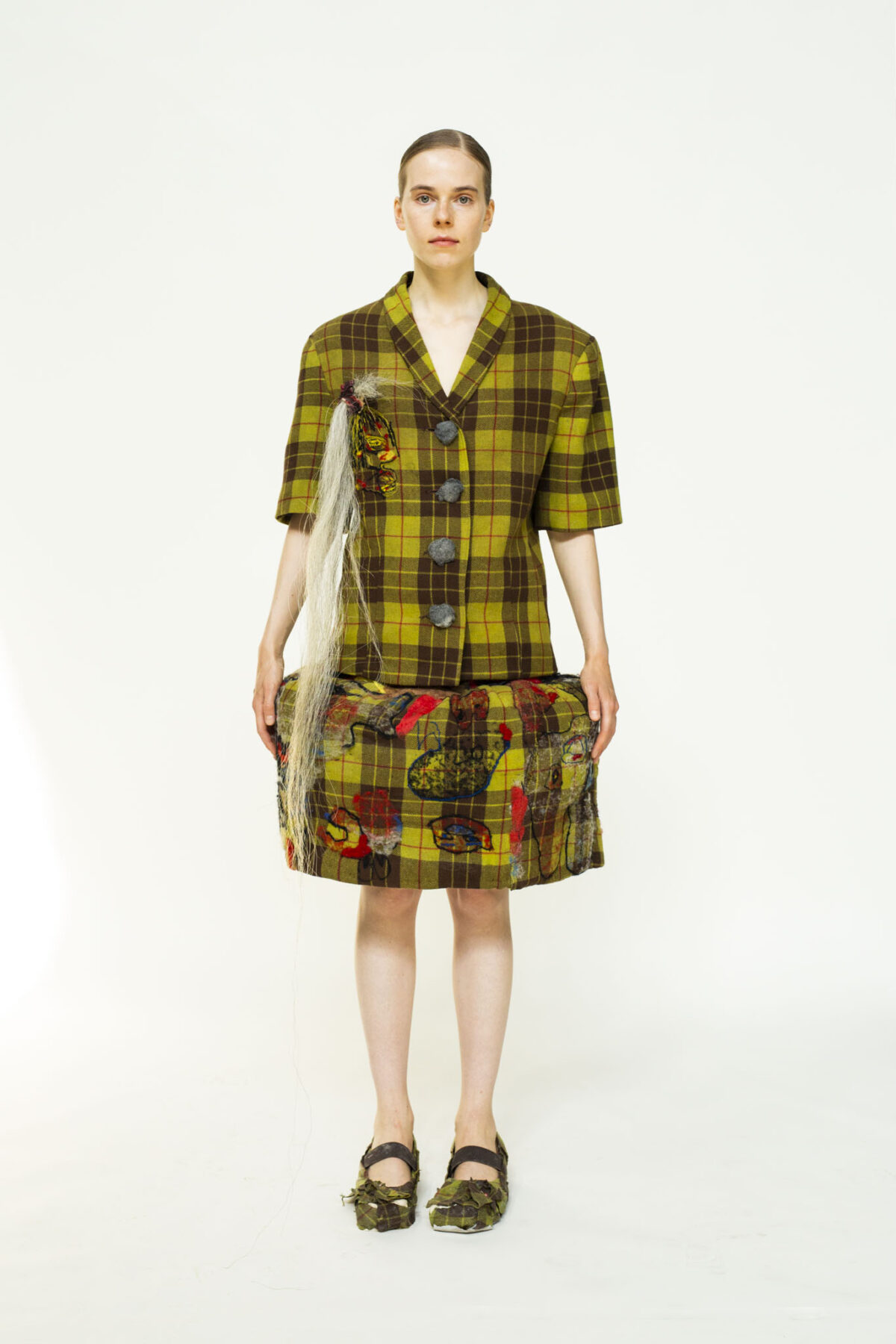 RK_02
RK_02

Riika Kiili BA Graduate collection Photographer: Sofia Okkonen
RK_02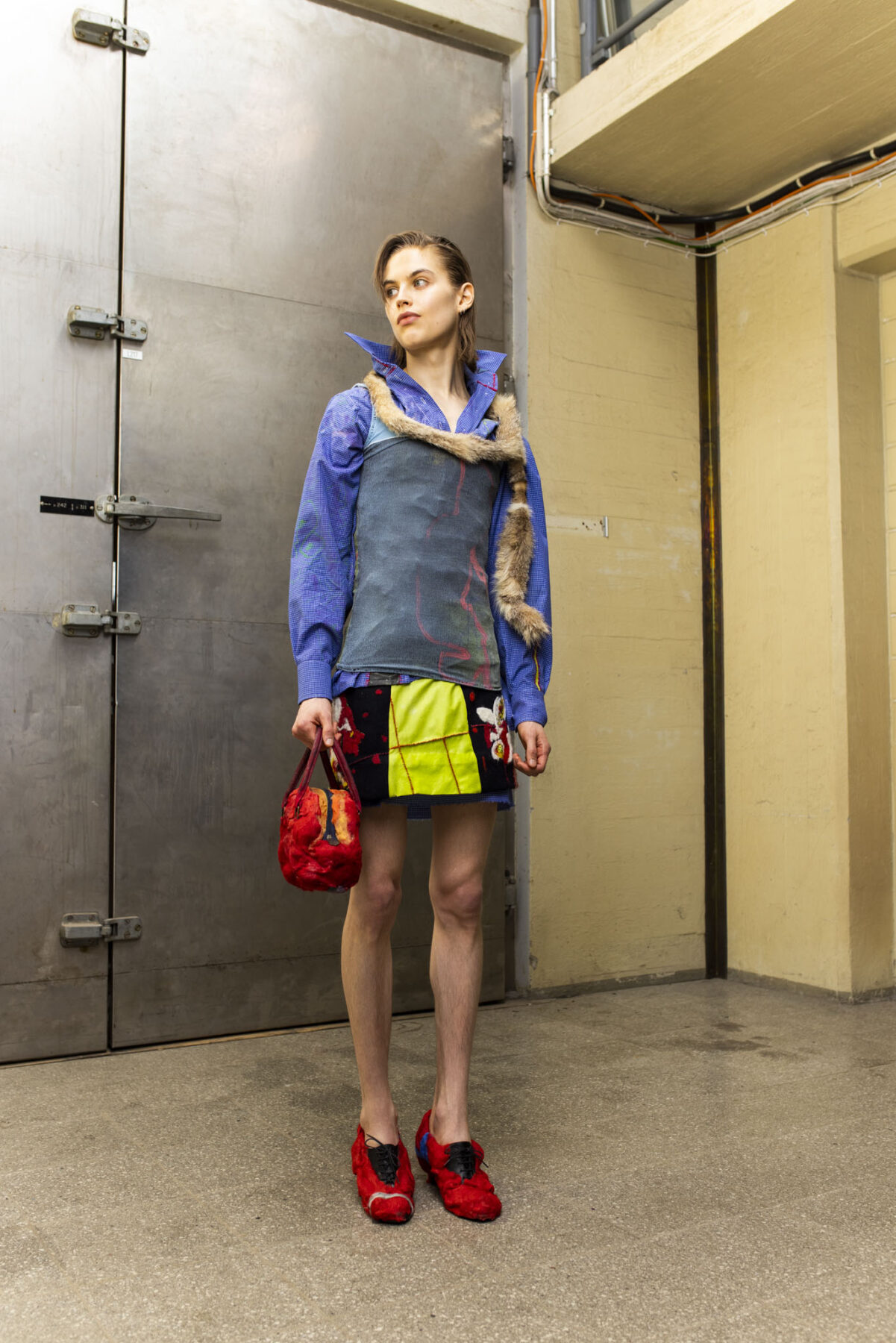 RK_03
RK_03

Riika Kiili BA Graduate collection Photographer: Sofia Okkonen
RK_03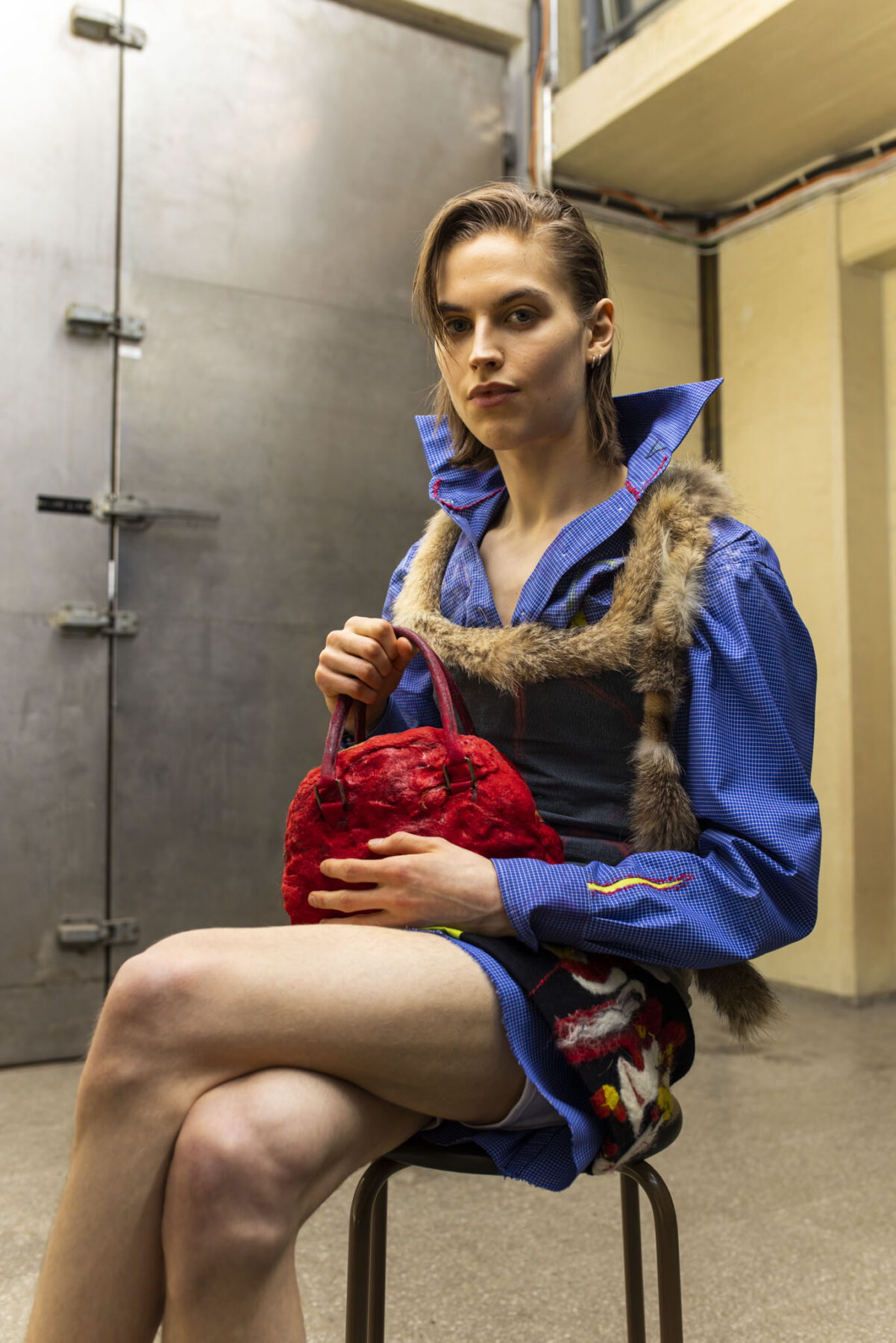 RK_04
RK_04

Riika Kiili BA Graduate collection Photographer: Sofia Okkonen
RK_04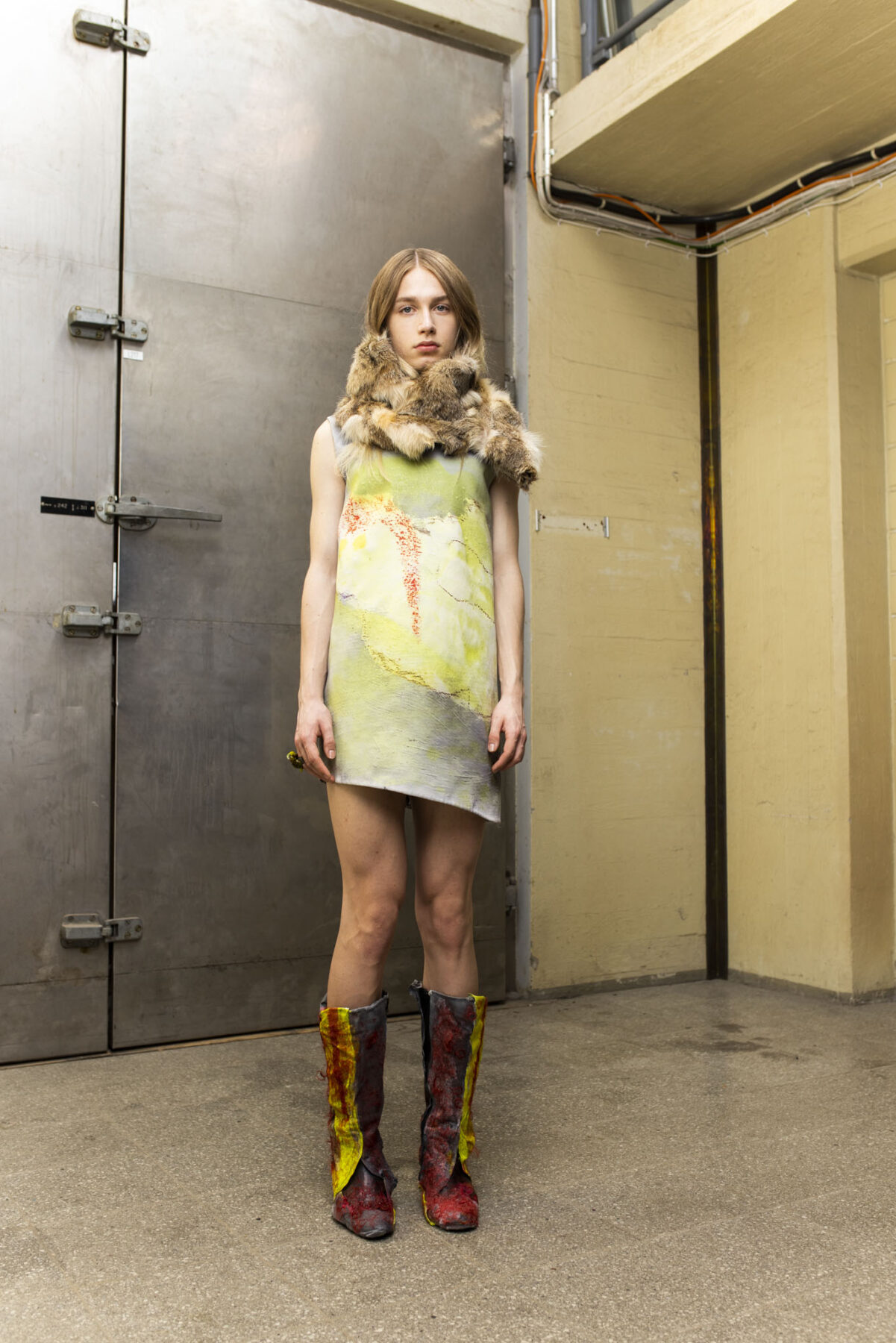 RK_05
RK_05

Riika Kiili BA Graduate collection Photographer: Sofia Okkonen
RK_05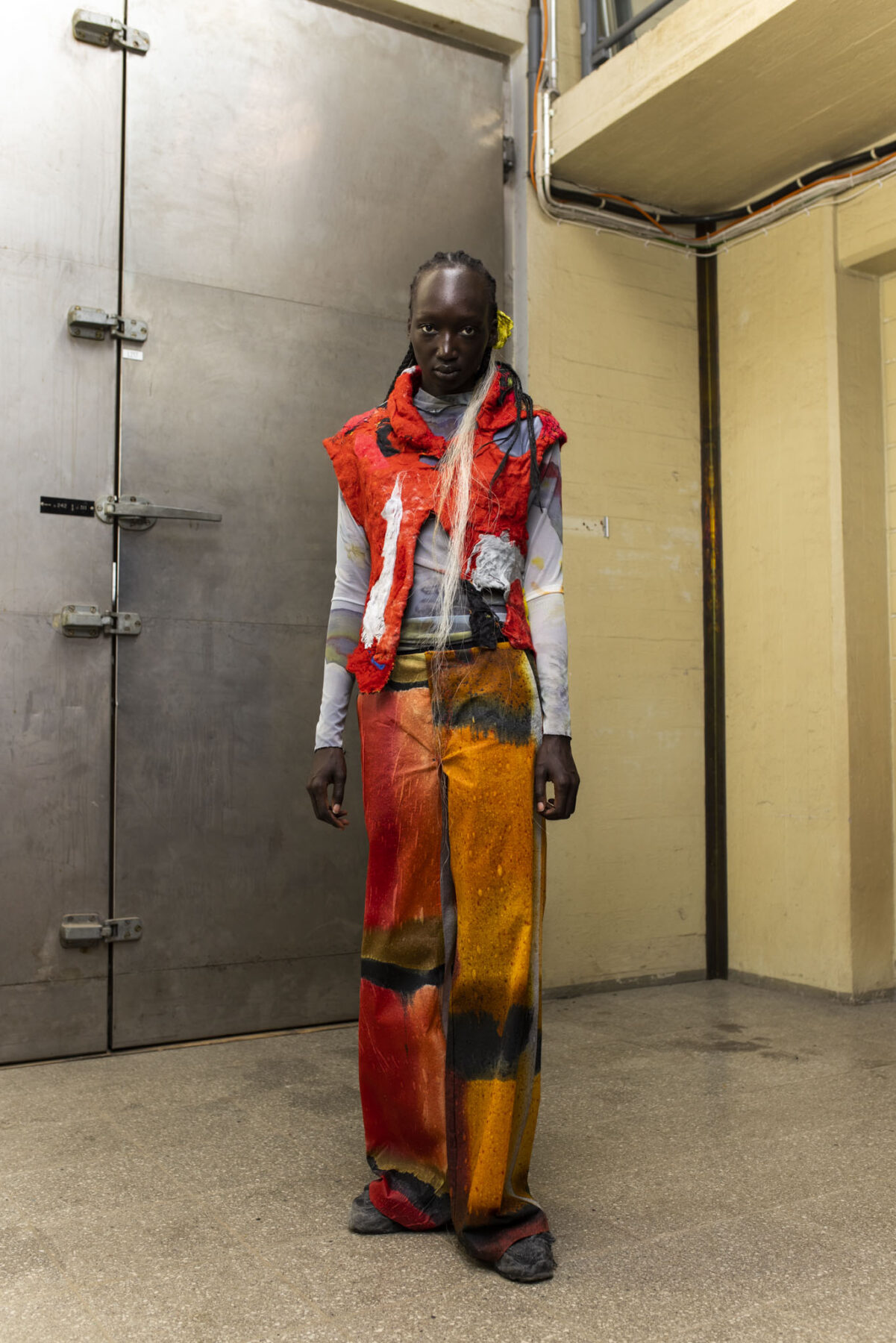 RK_06
RK_06

Riika Kiili BA Graduate collection Photographer: Sofia Okkonen
RK_06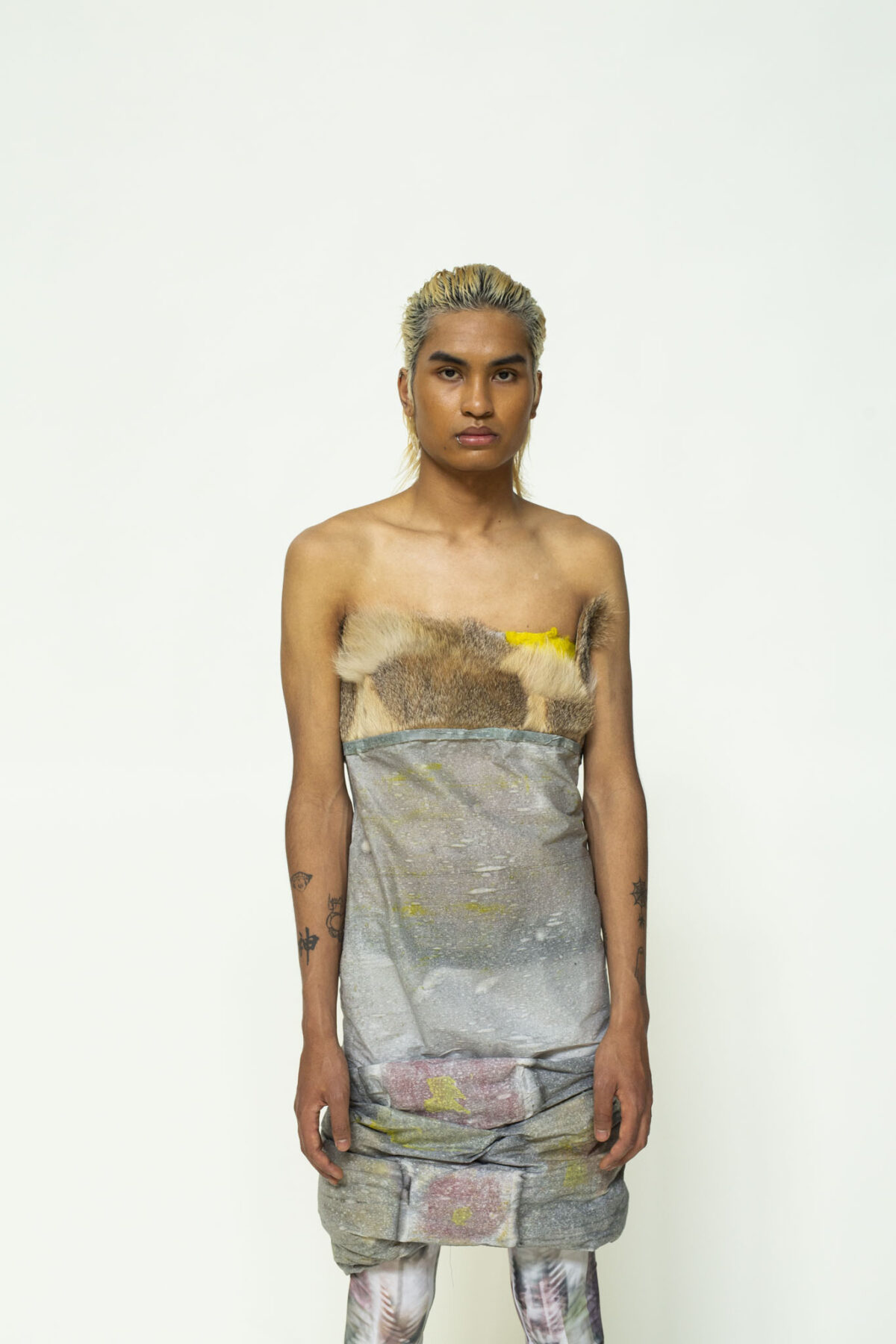 RK_07
RK_07

Riika Kiili BA Graduate collection Photographer: Sofia Okkonen
RK_07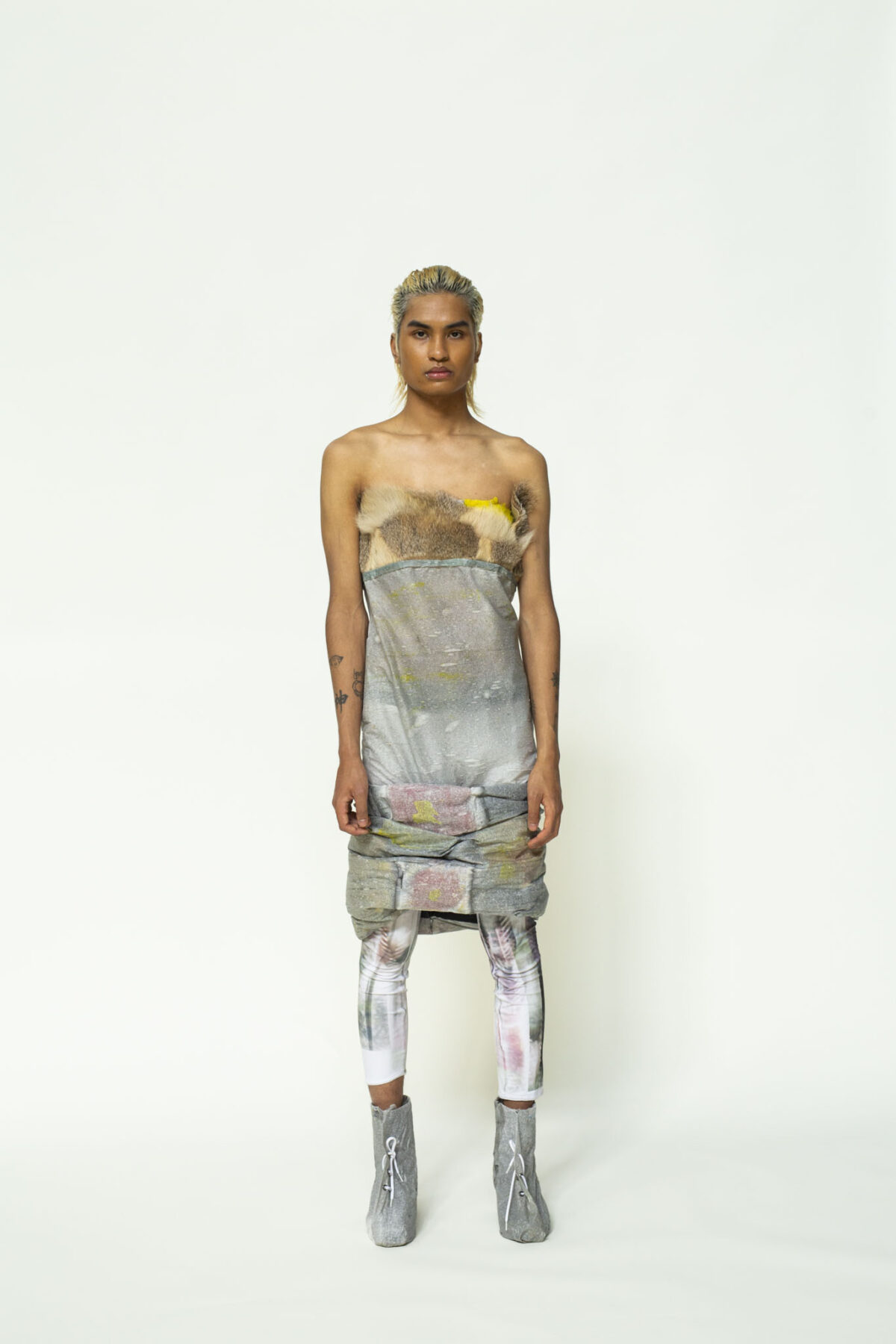 RK_08
RK_08

Riika Kiili BA Graduate collection Photographer: Sofia Okkonen
RK_08Characters with a character
In her collection, Y Kiili explores the concept of pareidolia: the intersection of illusion, emotions and perceptions at the edge of reality. The collection is a playful and colorful exploration of the psyche and how characters Kiili sees everywhere transform into patterns and prints on garments.
Pareidolia is a cognitive bias. It is the tendency to perceive meaningful shapes in places where there are, in fact, none. It happens when we see illusionary fairy tale animals in cloud formations, sad faces in cliff fissures, or when the seemingly dull letterboxes become excited. Kiili says that it is a state in which we get in touch with our senses and the environment in a unique way.
– It is a meeting point between reality and emotions. This is evident in the collection, but I am also looking into how I could make use of pareidolia more generally as a fashion designer. The final shape and feel of the clothes are formed piece by piece, shape by shape, in an intuitive manner that is guided by the figures and the materials, Kiili explains the central idea of the collection.
The designer’s creative process is experimental and process-oriented, and it is led by an openness to material and mental experiences. The different figures are found through playfulness and freedom of experience.
The same applies to material development. For the graduate collection, Kiili created most materials herself, including new innovative and ecological materials from wood cellulose. In addition, she also sculpted figures on the surfaces of knitted and woven materials.
– My process has been a fascinating adventure into how my emotions project onto the environment and the surface of the materials. Working with these found characters has not only expanded my design language, but they have also given it greater emotional depth.
Contact information:
Y Kiili
riikkakiili@gmail.com
+358 443051193
@kyykiili
Rasmus Palmunen
(ba)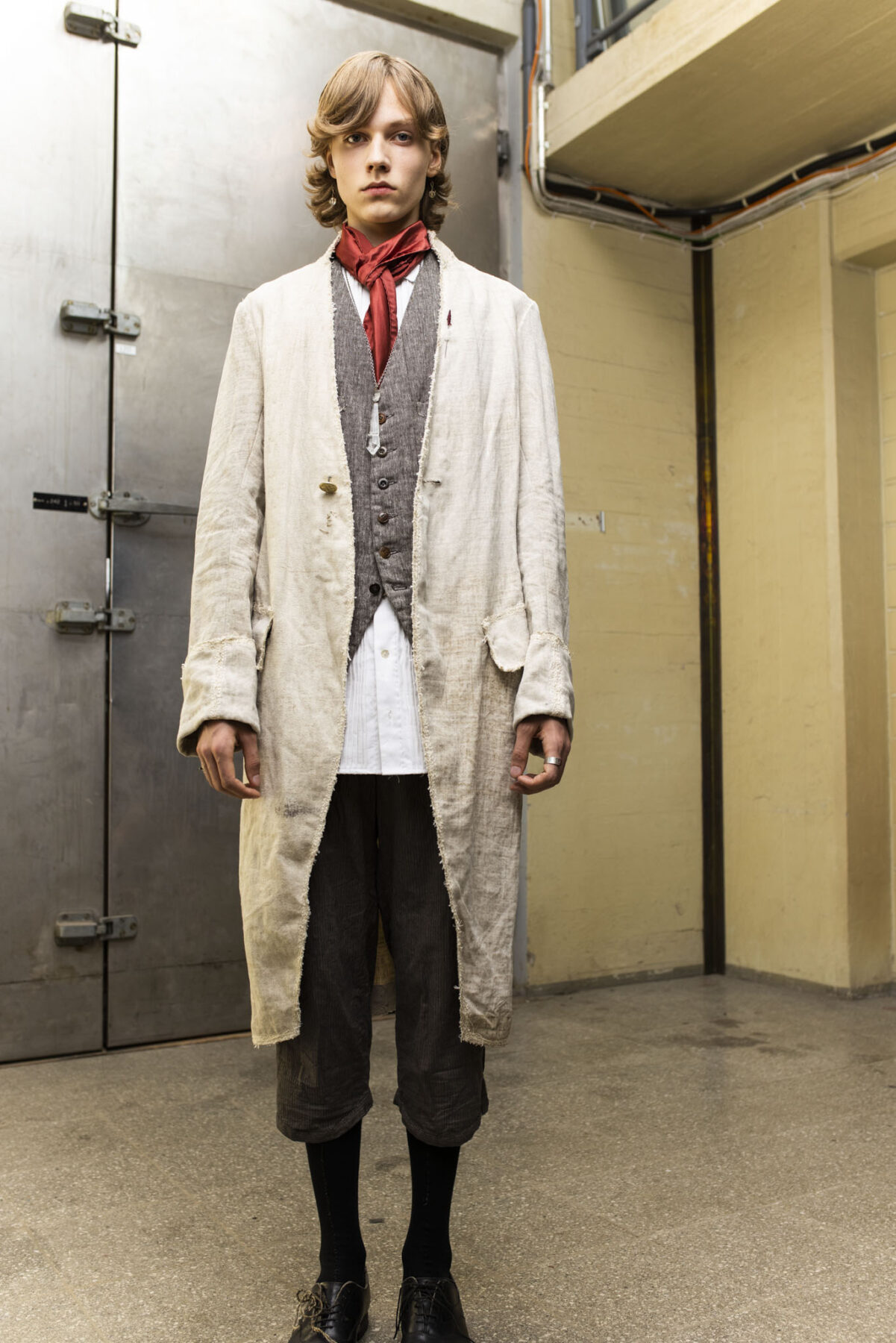 RP_01
RP_01

Rasmus Palmunen BA Graduate collection Photographer: Sofia Okkonen
RP_01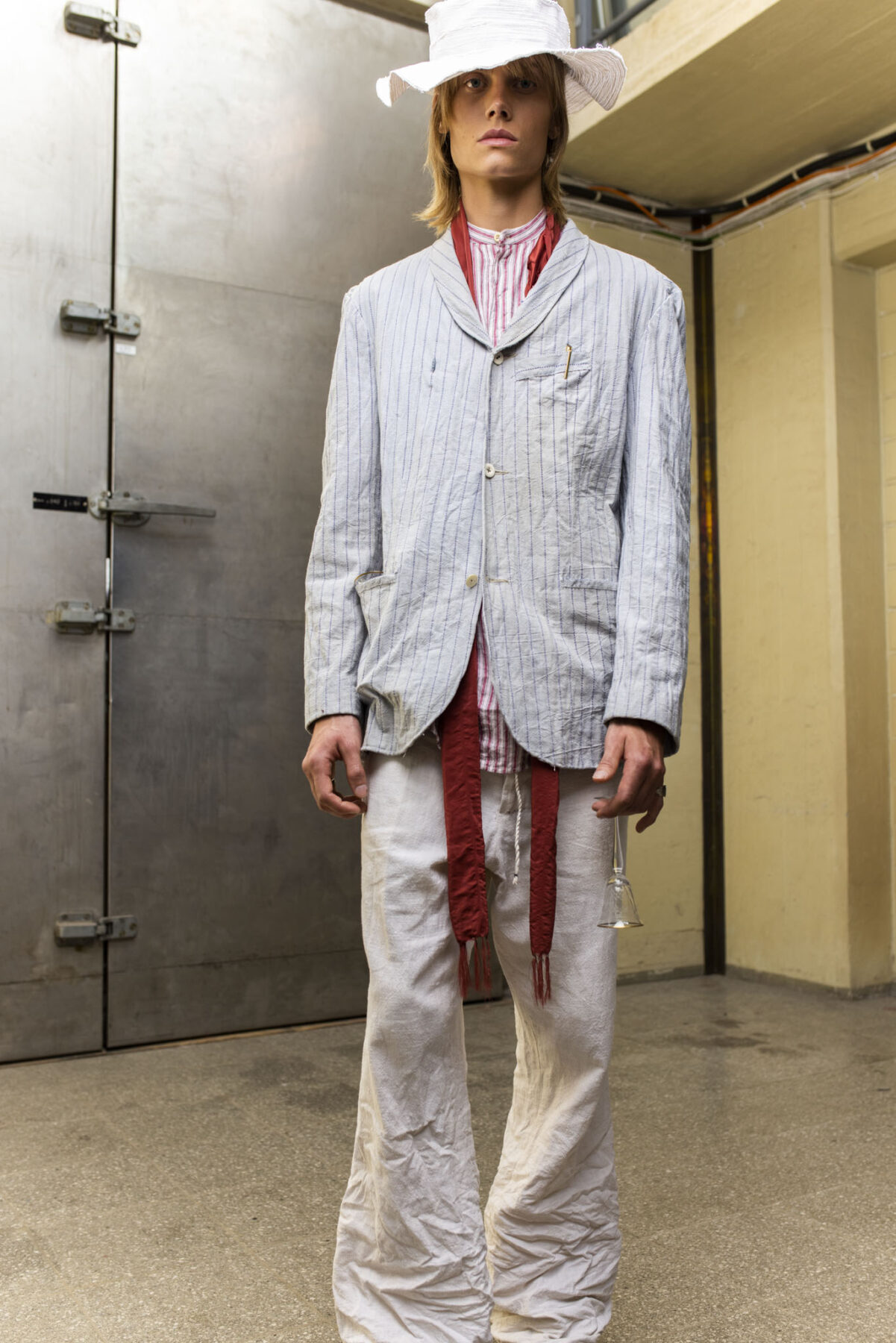 RP_02
RP_02

Rasmus Palmunen BA Graduate collection Photographer: Sofia Okkonen
RP_02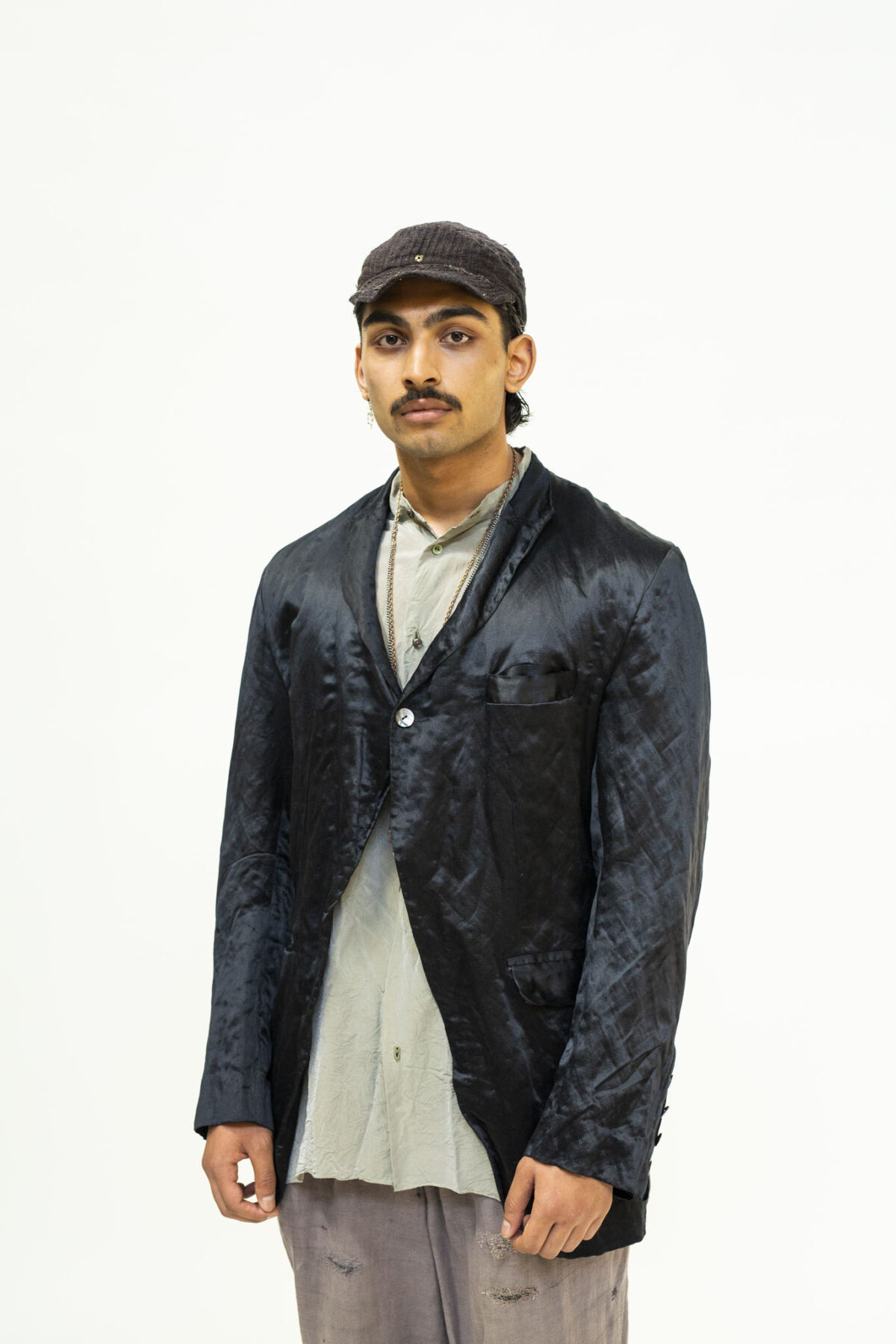 RP_03
RP_03

Rasmus Palmunen BA Graduate collection Photographer: Sofia Okkonen
RP_03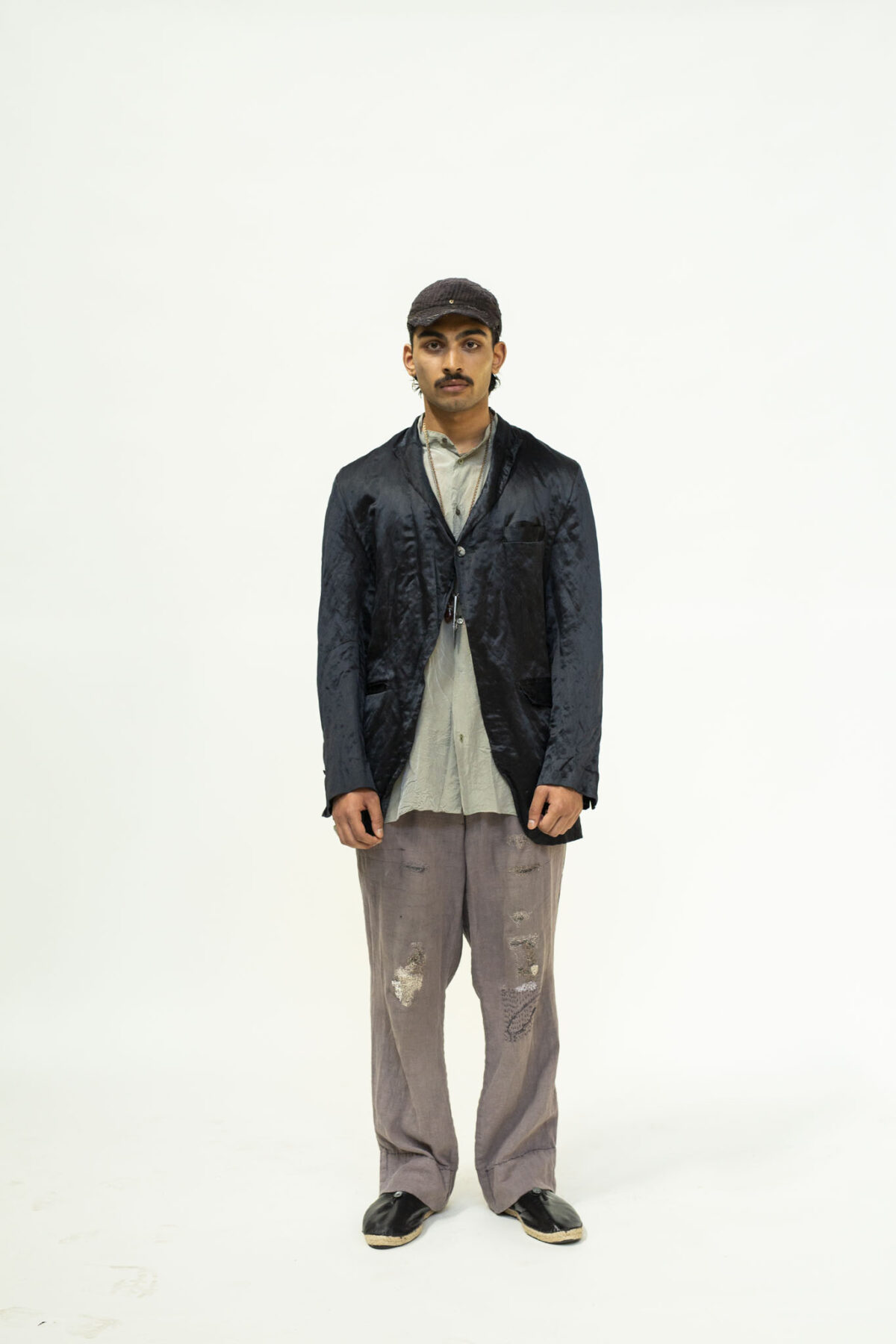 RP_04
RP_04

Rasmus Palmunen BA Graduate collection Photographer: Sofia Okkonen
RP_04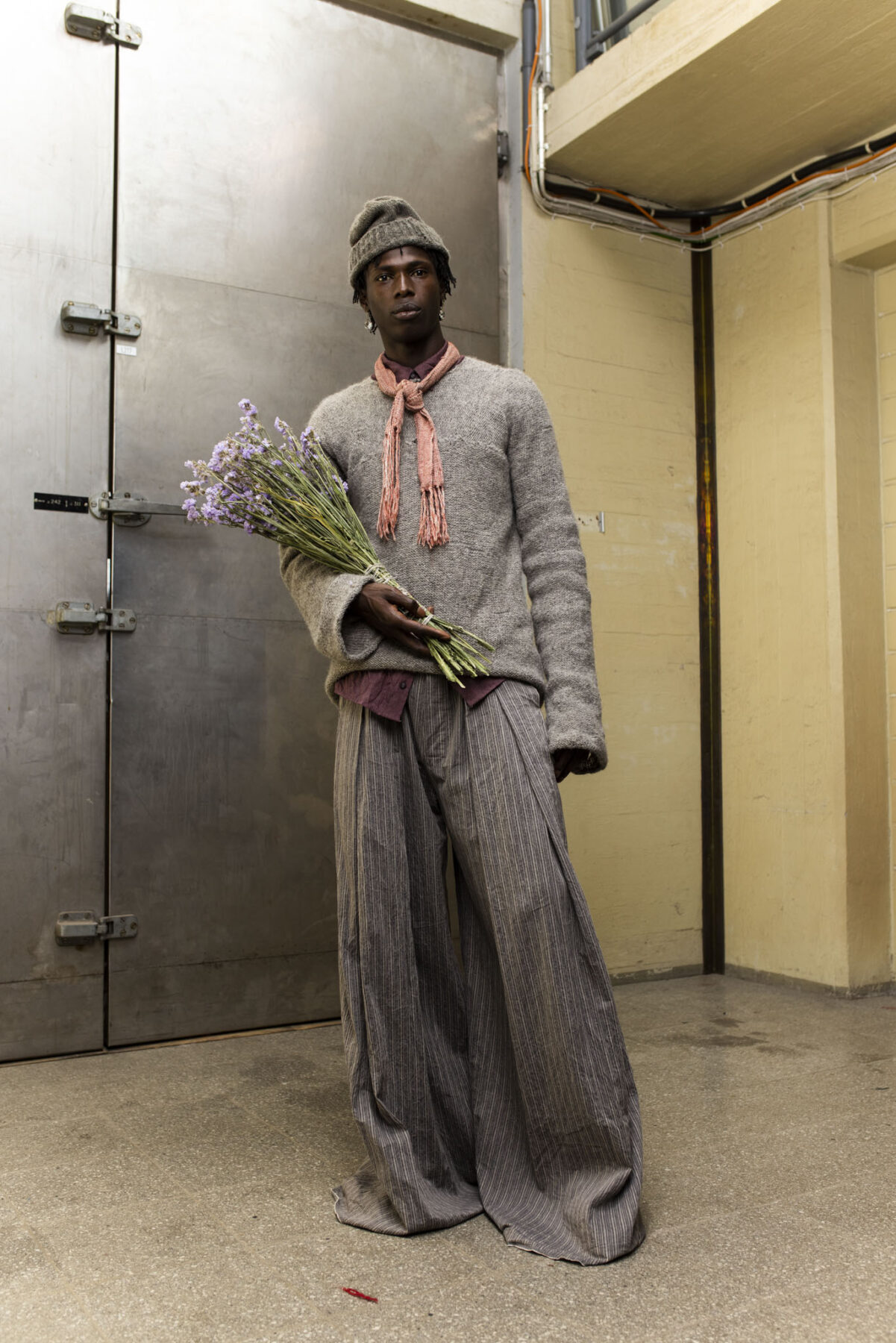 RP_05
RP_05

Rasmus Palmunen BA Graduate collection Photographer: Sofia Okkonen
RP_05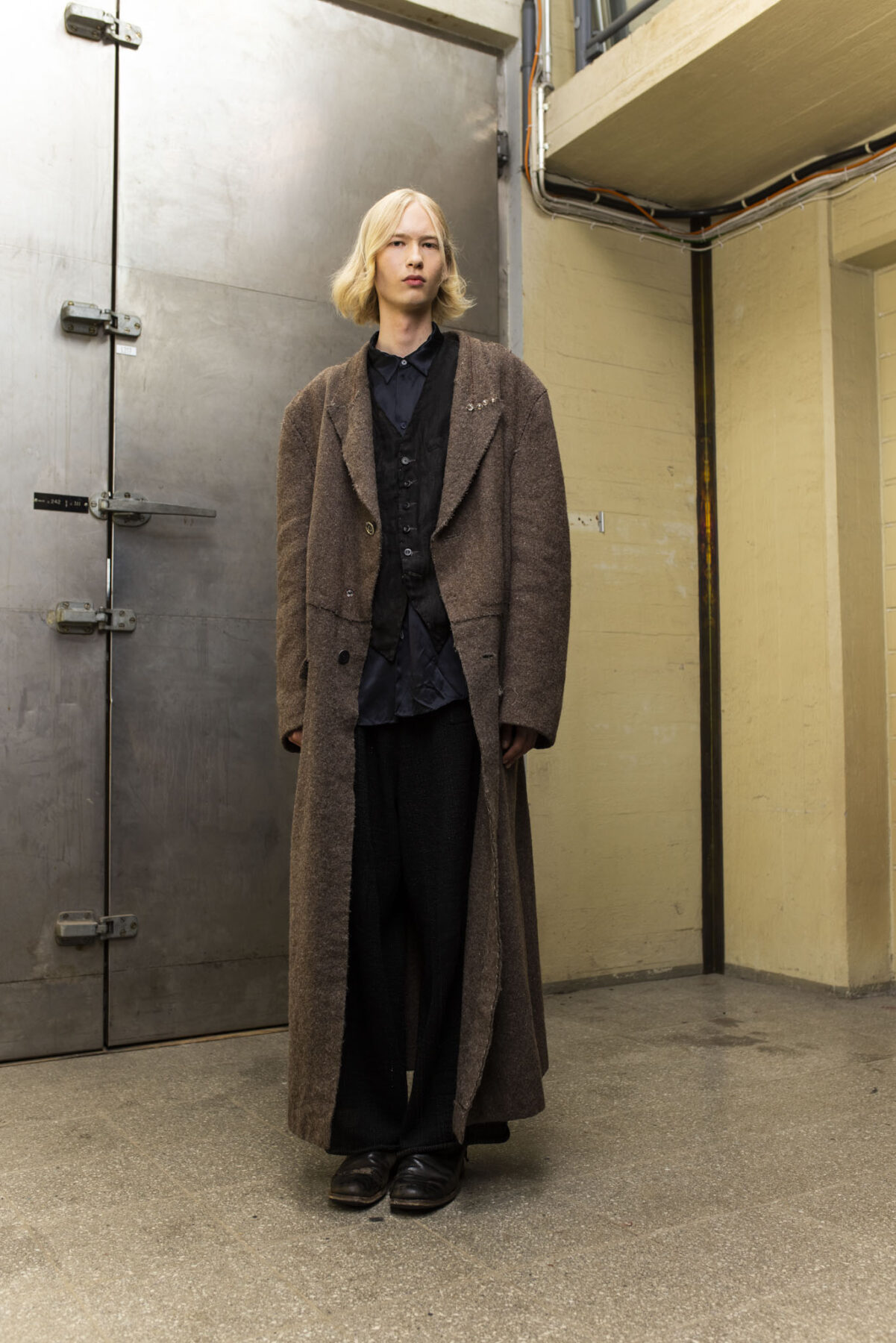 RP_06
RP_06

Rasmus Palmunen BA Graduate collection Photographer: Sofia Okkonen
RP_06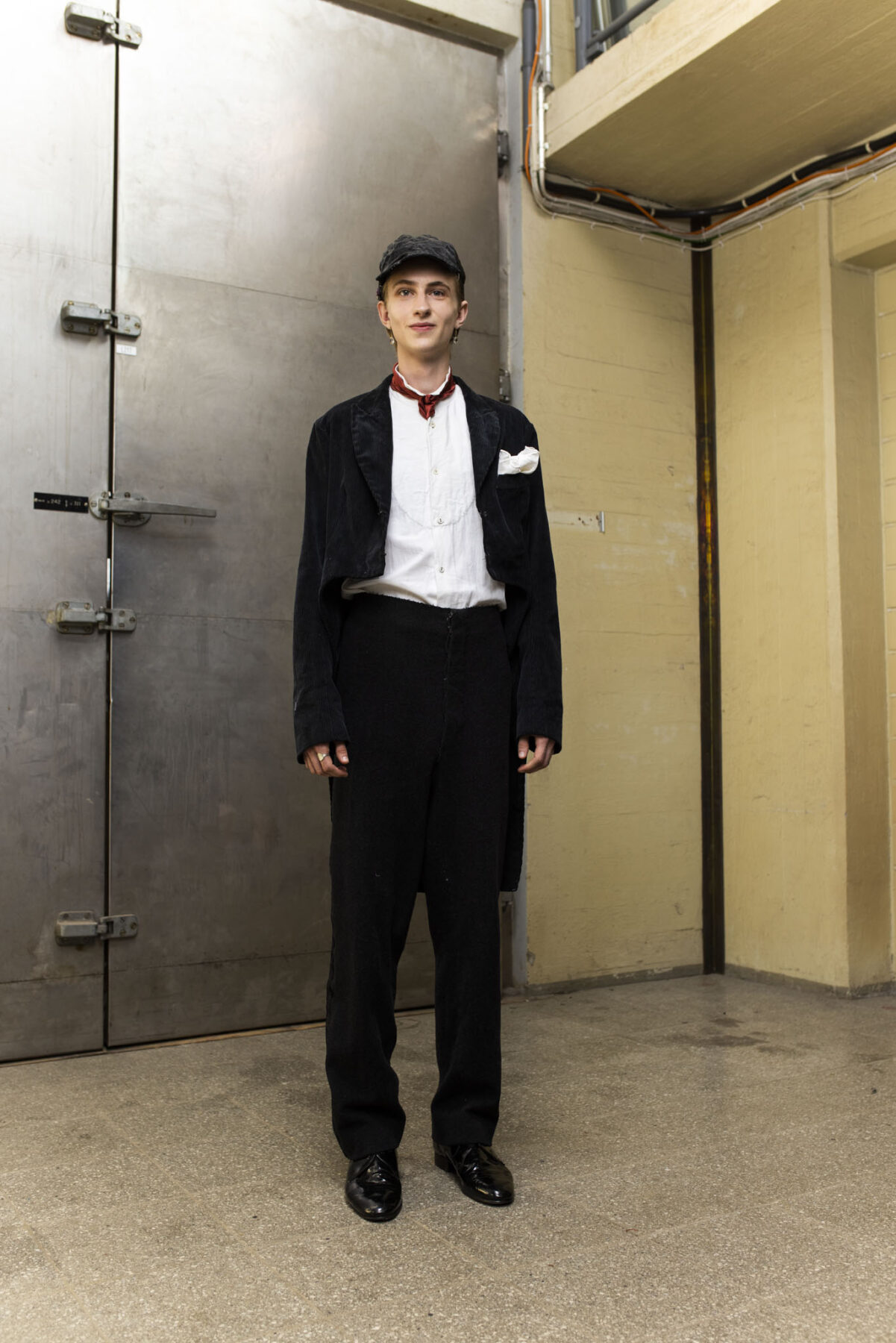 RP_07
RP_07

Rasmus Palmunen BA Graduate collection Photographer: Sofia Okkonen
RP_07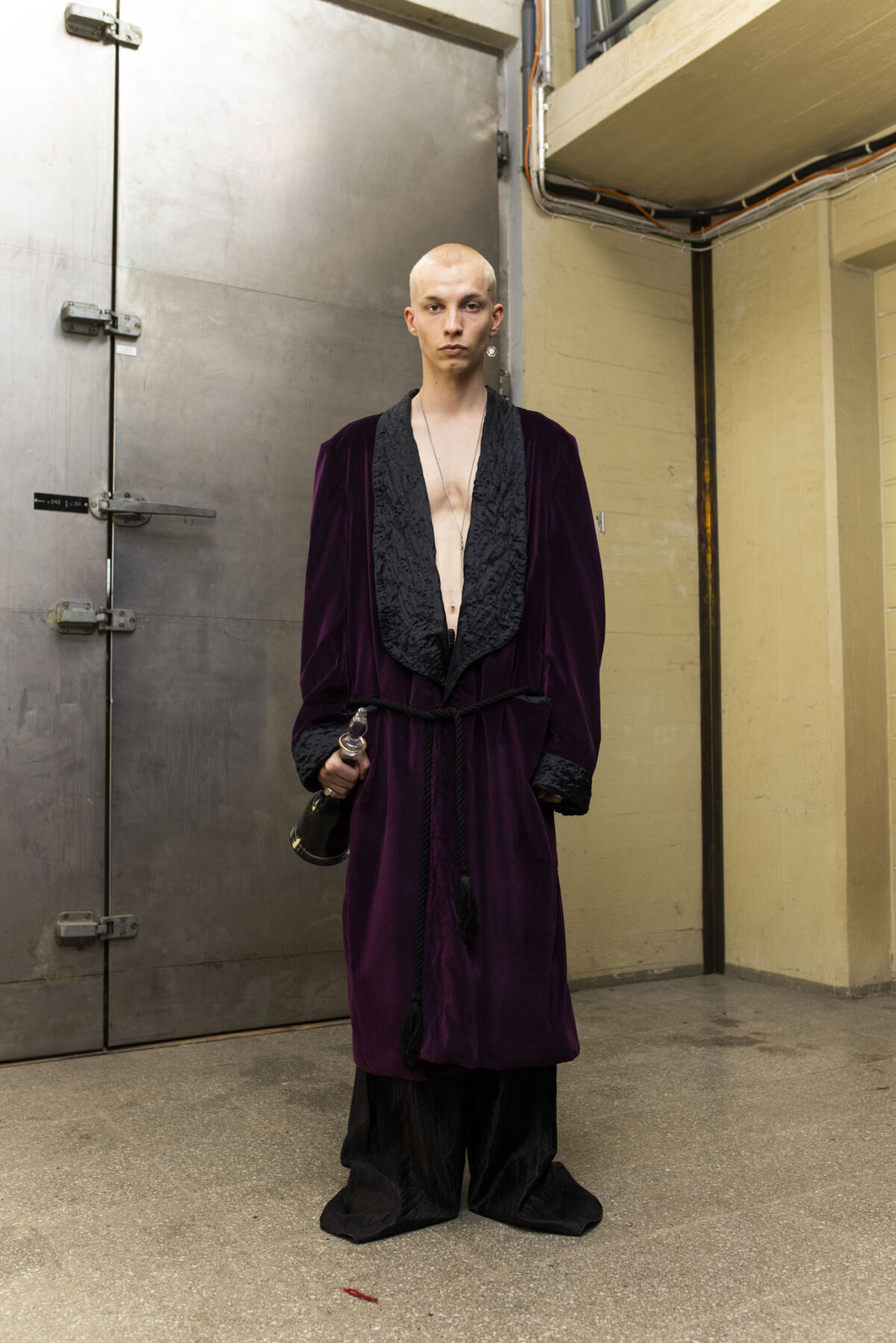 RP_08
RP_08

Rasmus Palmunen BA Graduate collection Photographer: Sofia Okkonen
RP_08My kind of etiquette
My kind of etiquette is a collection about finding one’s most enjoyable way of working. It is about finding one’s place in the world of traditional western menswear and thinking about it in the present. It is about creating an etiquette based on personal preferences.
The design process relies heavily on self-reflection on the matters of what feels good and what doesn’t. It especially relies on the ways of incorporating hand sewing and other timely ways of working into the garments. It is about finding the balance between things that make a garment.
– I don’t want my clothes to look like they are made in a factory, Palmunen explains and continues that in the contemporary world of fashion, crafts-based methods should be more appreciated and valued.
The collection has many references to historical garments from the beginning of the 20th century all the way to the 18th century. Drawing from and fusing together the styles and garments of the upper class and the working class, Palmunen wants to showcase the rich history of western menswear and to bring some of it to the modern day.
– I have always thought that to break the rules you must know them first, and the difference between knowing and understanding falls down to the same principle. There is a big difference between knowing and understanding and without comprehension the references lack depth.
Alongside a knowledge-driven mentality, Palmunen also emphasises craftmanship – and designing as you go. In fact, the whole collection is made without using prototypes. Their absence enables the showing of parts of the creative process in the finished garments that otherwise would go unnoticed. It also makes visible the creative problem-solving methods that cannot be achieved in any other way.
– In my opinion the true essence of craftmanship only comes out when the fit or the structure of a garment doesn’t work, and you simply have to solve the problem right then and there.
Contact information:
Rasmus Palmunen
+358 456722045
@rasmuspalmunen
Petra Lehtinen
(ma)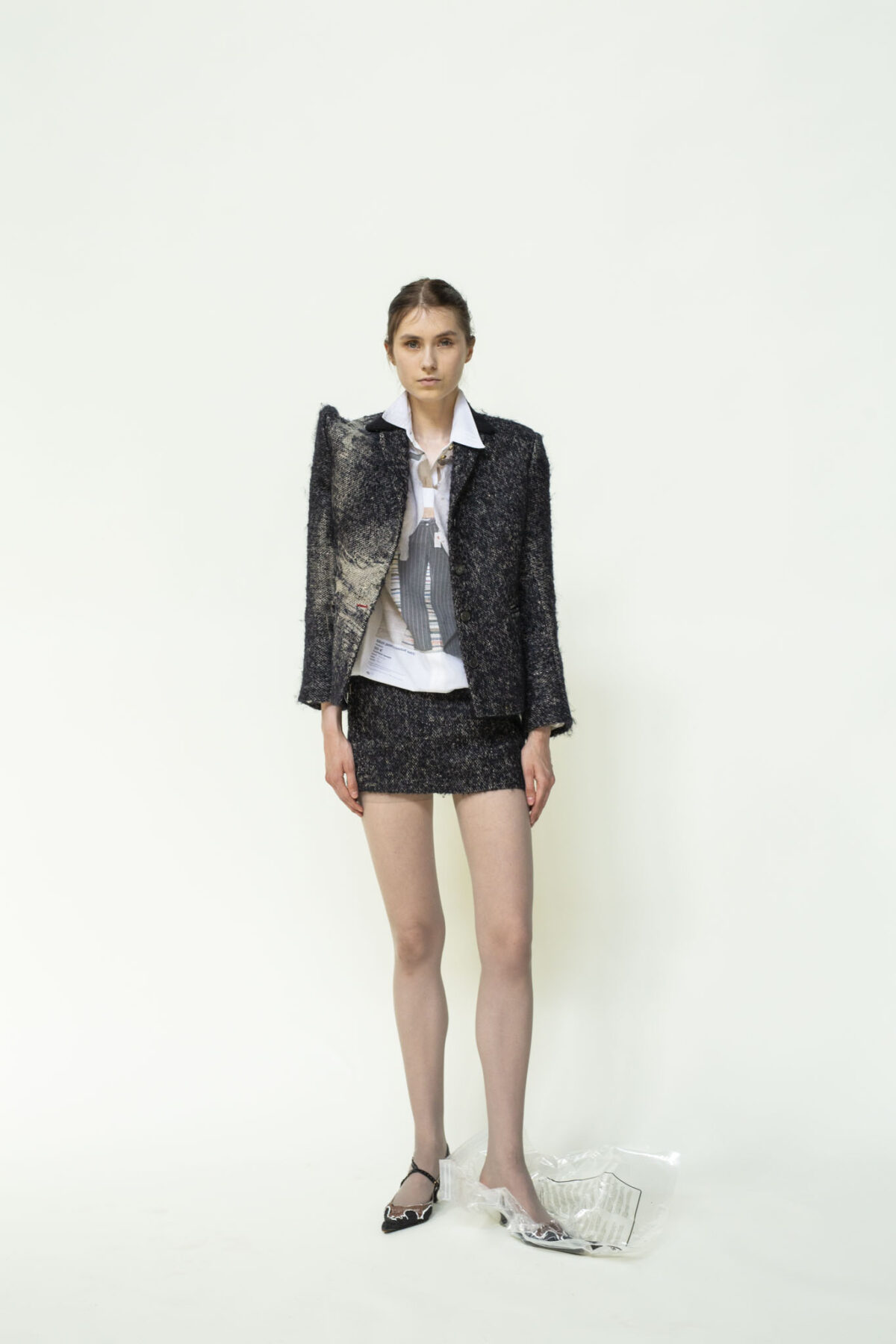 PL_01
PL_01

Petra Lehtinen MA Graduate collection Photographer: Sofia Okkonen
PL_01 PL_02
PL_02

Petra Lehtinen MA Graduate collection Photographer: Sofia Okkonen
PL_02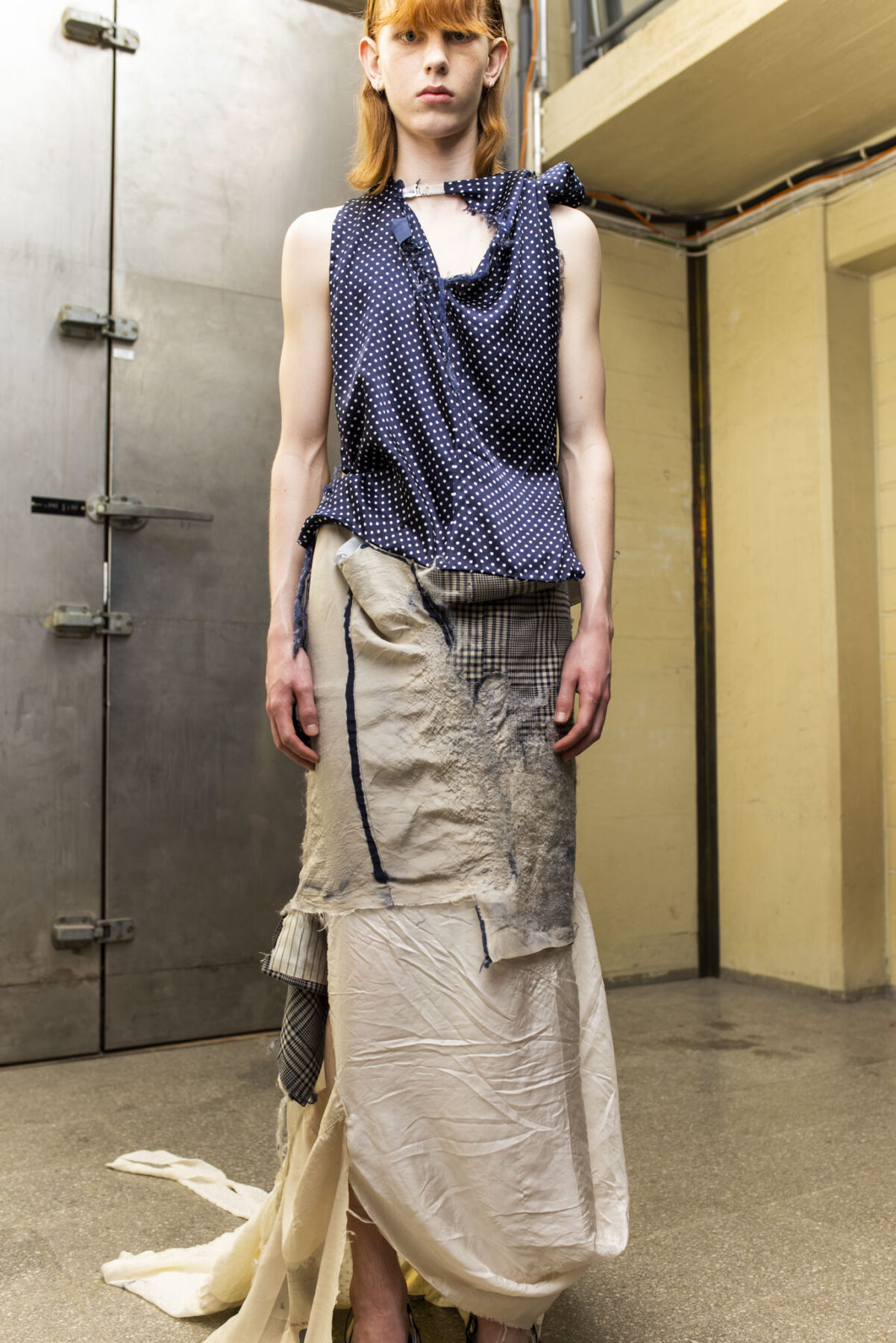 PL_03
PL_03

Petra Lehtinen MA Graduate collection Photographer: Sofia Okkonen
PL_03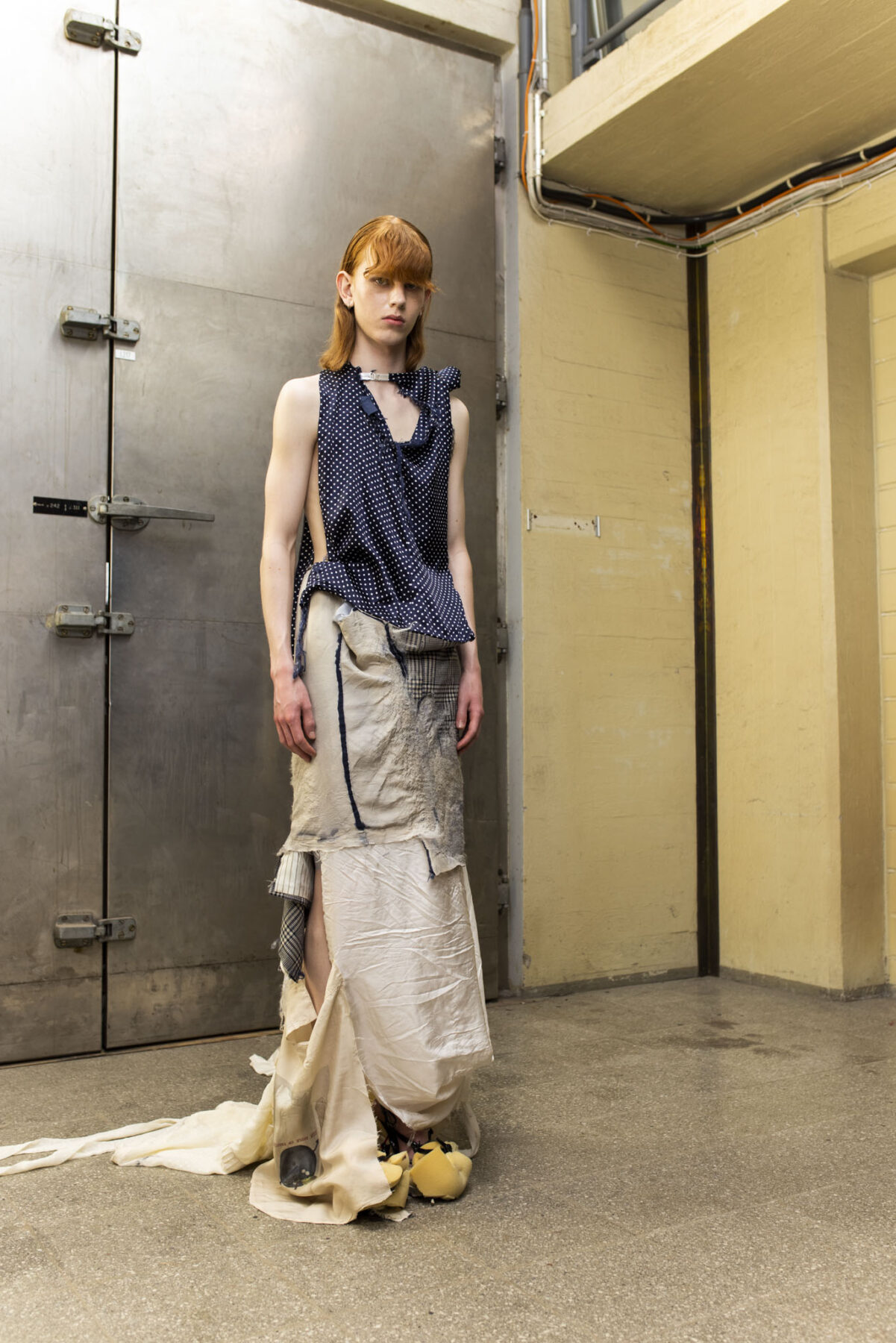 PL_04
PL_04

Petra Lehtinen MA Graduate collection Photographer: Sofia Okkonen
PL_04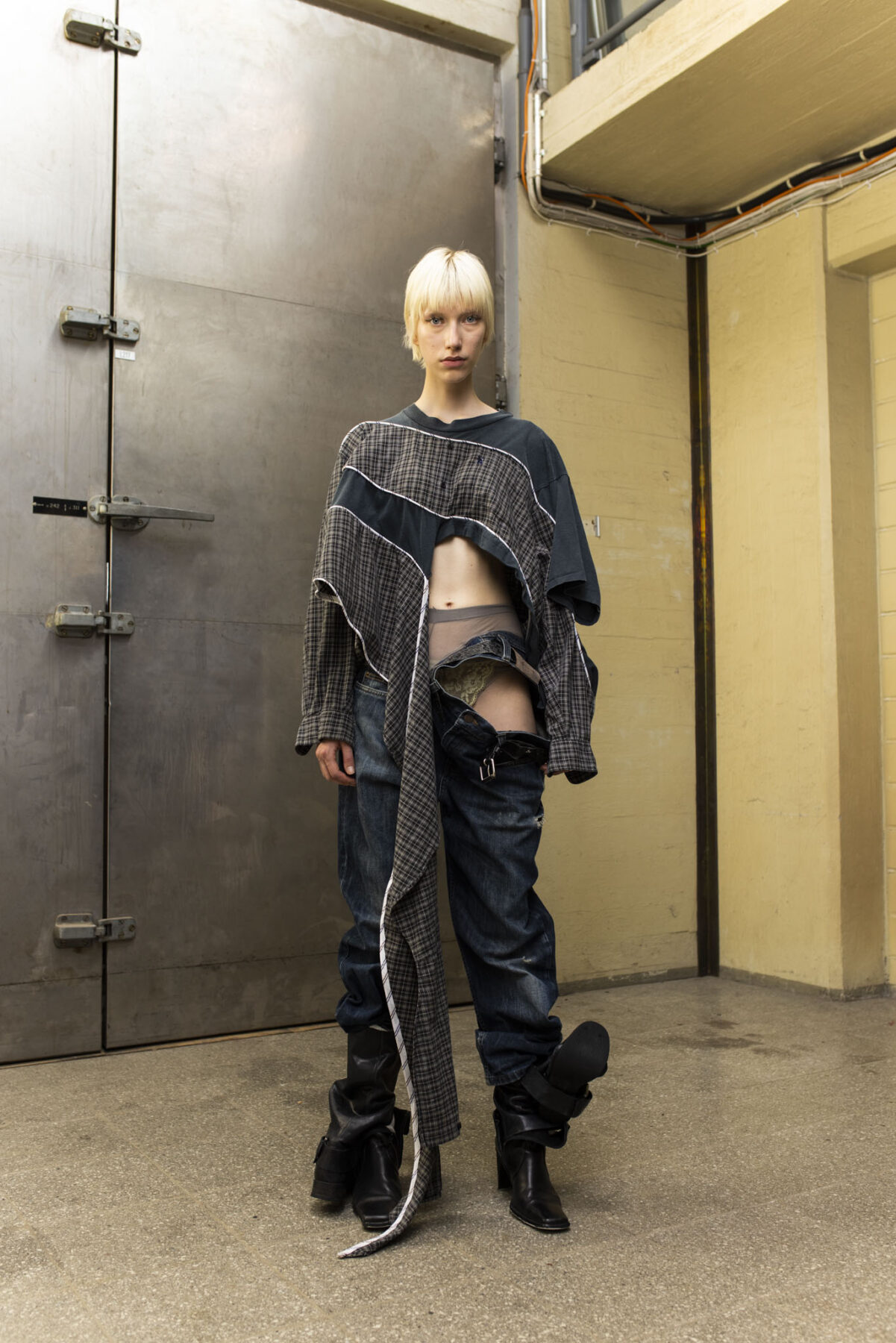 PL_05
PL_05

Petra Lehtinen MA Graduate collection Photographer: Sofia Okkonen
PL_05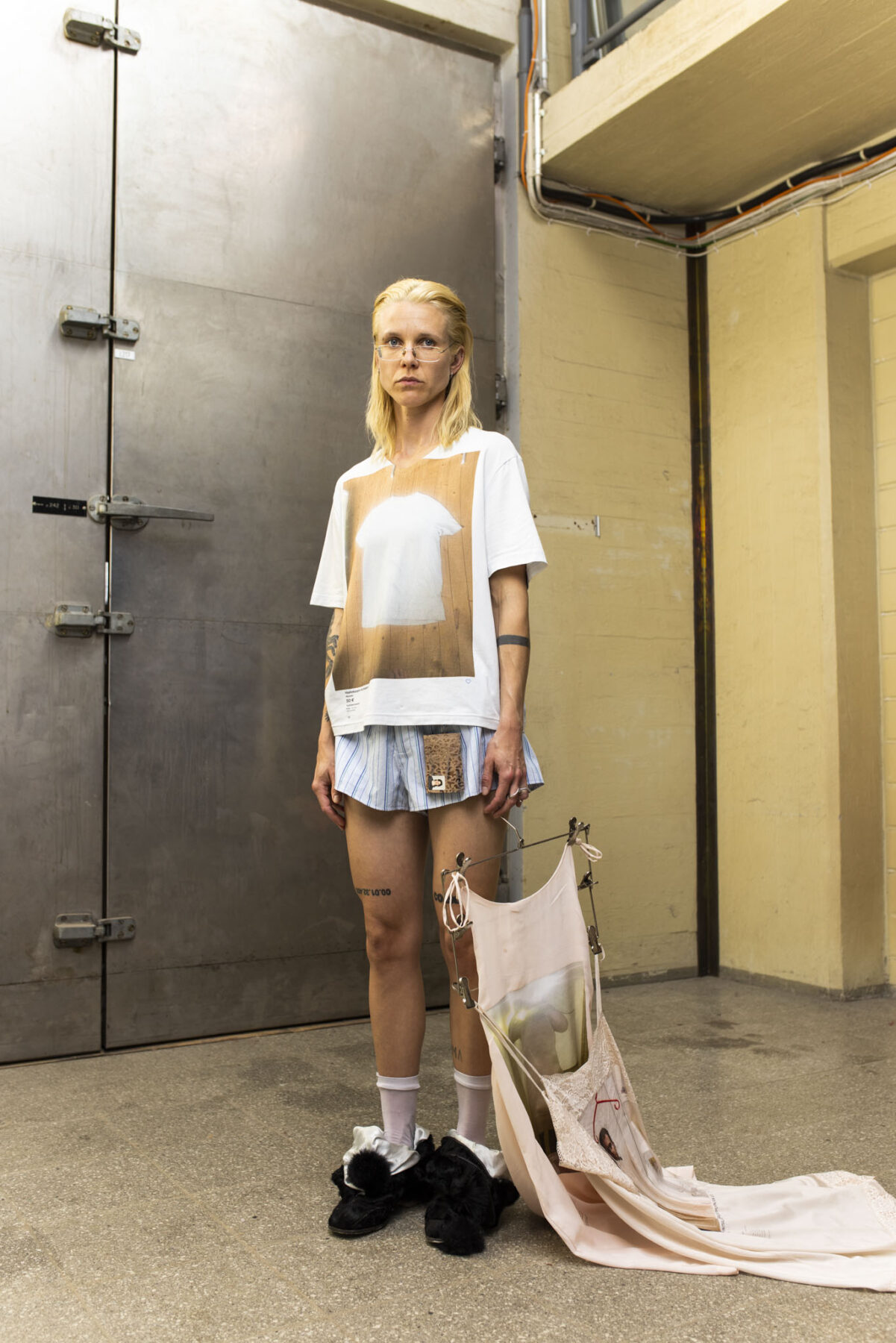 PL_06
PL_06

Petra Lehtinen MA Graduate collection Photographer: Sofia Okkonen
PL_06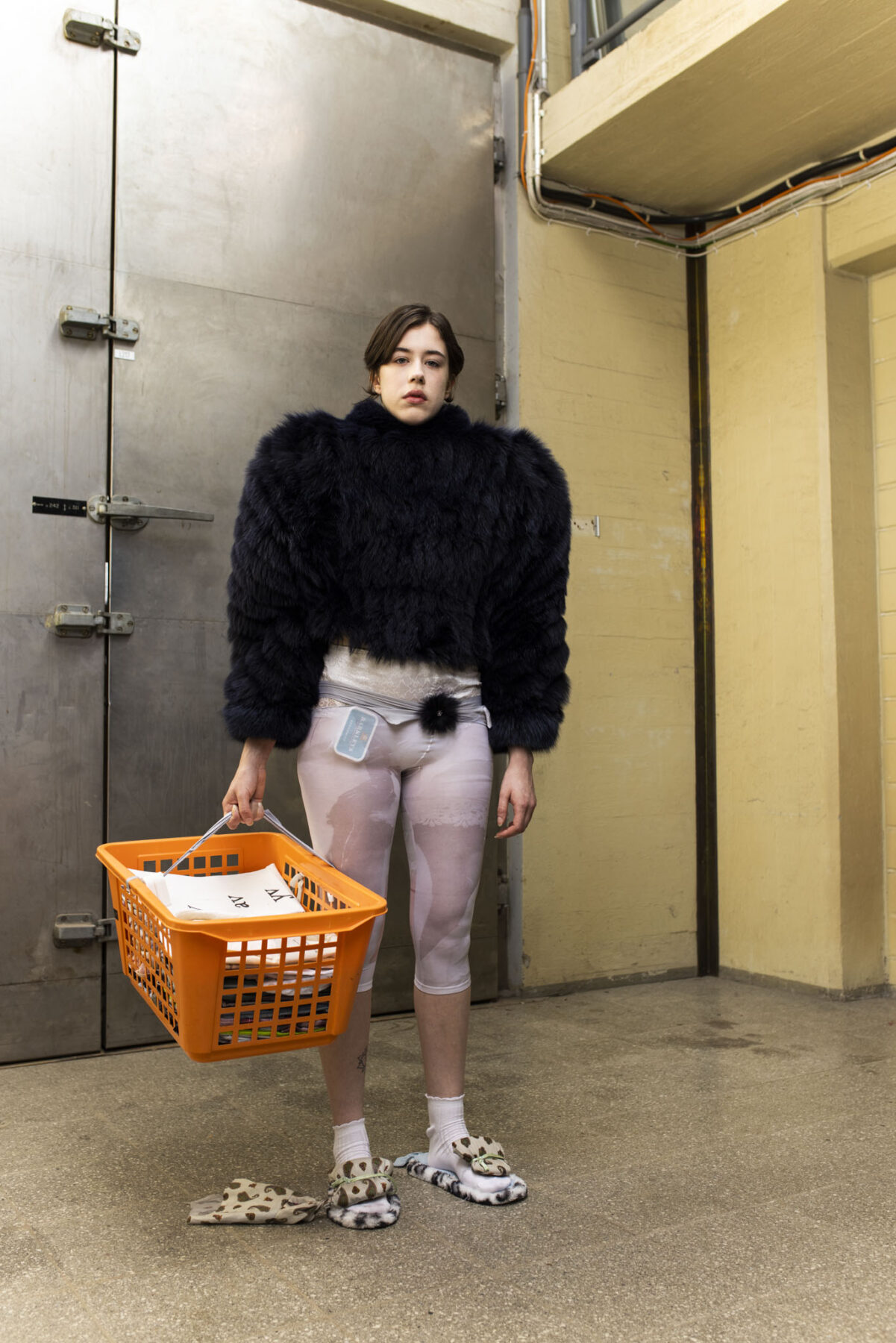 PL_07
PL_07

Petra Lehtinen MA Graduate collection Photographer: Sofia Okkonen
PL_07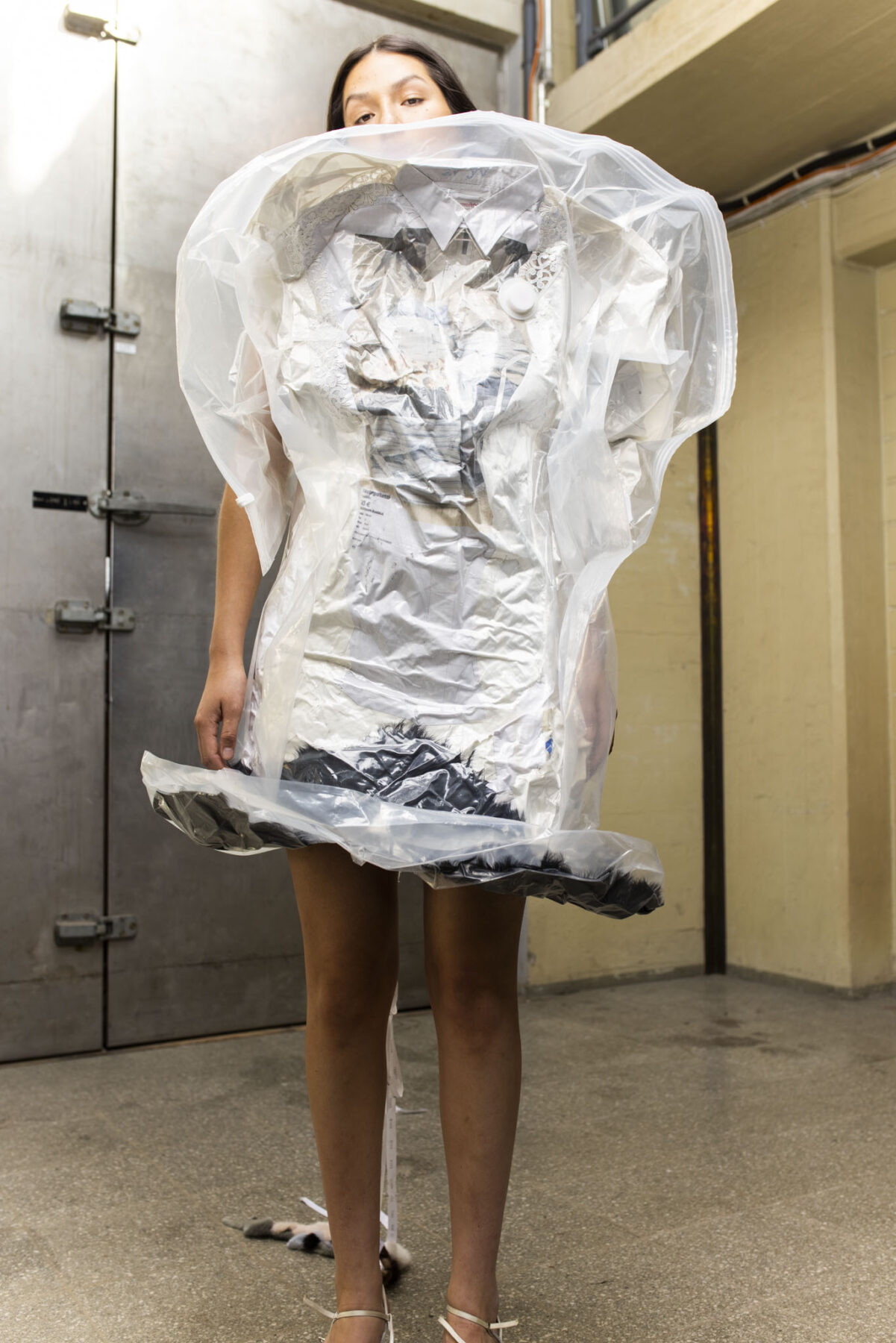 PL_08
PL_08

Petra Lehtinen MA Graduate collection Photographer: Sofia Okkonen
PL_08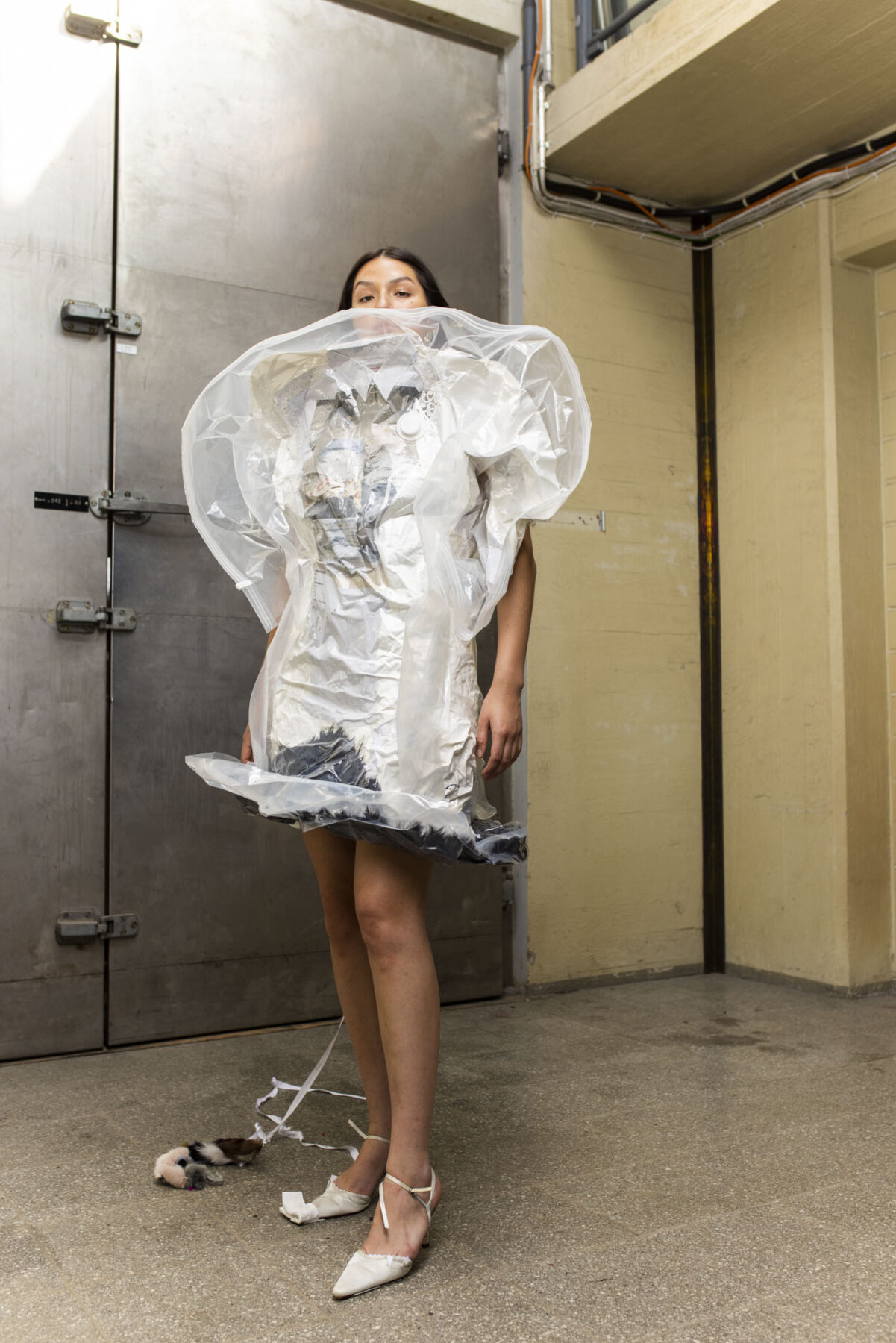 PL_09
PL_09

Petra Lehtinen MA Graduate collection Photographer: Sofia Okkonen
PL_09av yv
Petra Lehtinen’s graduate collection “av yv” (meaning: an online marketplace shorthand term in Finnish and translates as “preliminary reservations, direct message”) explores garments that are removed from the wardrobe, but which are still kept by storing them in personal storage spaces. By studying the significance of archives in fashion, the concept of the collection is to bring clothes back from the archives, and to transform them from being unnecessary and space-consuming to being important by naming them as an actual archive. This act has guided Lehtinen’s creative process while also serving all the material for the new collection.
– Despite my initial intention to sell or repurpose clothes, they persisted in storage, lingering in bags and vacuum-sealed pouches, shuttling from one storage location to another during my relocations. This collection delves into capturing the intricate relationship that consumers, especially myself, have with garments in the era of mass consumption, Lehtinen explains.
Lehtinen sees the absurdity of contemporary consumption culture as worth documenting. Inspired by art movements like Nouveau Realisme and the Duchampian readymades, the collection involves direct appropriation of reality, such as garments sealed in vacuum bags. Lehtinen also drew inspiration from individual garments from the archive and how clothes are typically combined and layered in them. One of the designer’s once cherished objects was a silk shirt with an apple print and the text “SILK APPLE IN PARADISE”. It also engendered Lehtinen’s method of a “serpent-cut technique”, where archive pieces are combined with a spiralling cut.
– I identify with the sentiment expressed by the artist Andrea Zittel who finds satisfaction in self-made creative constraints. Similarly, my work questions what freedom really means as it is framed by capitalist society – perhaps the only way to be free is to make our own rules and criteria that fit within the rules already placed upon us.
By choosing to work with readymade materials, Lehtinen’s aim was to redirect the time designers usually spend browsing through fabric suppliers to the creative work and problem-solving. The time-wise aspect also connected to the concept of the archive by acknowledging that it has actually taken years to subconsciously collect the items in it.
Contact information:
Petra Lehtinen
+358 4021 89320
@linssi.lohan
C.B
(ba)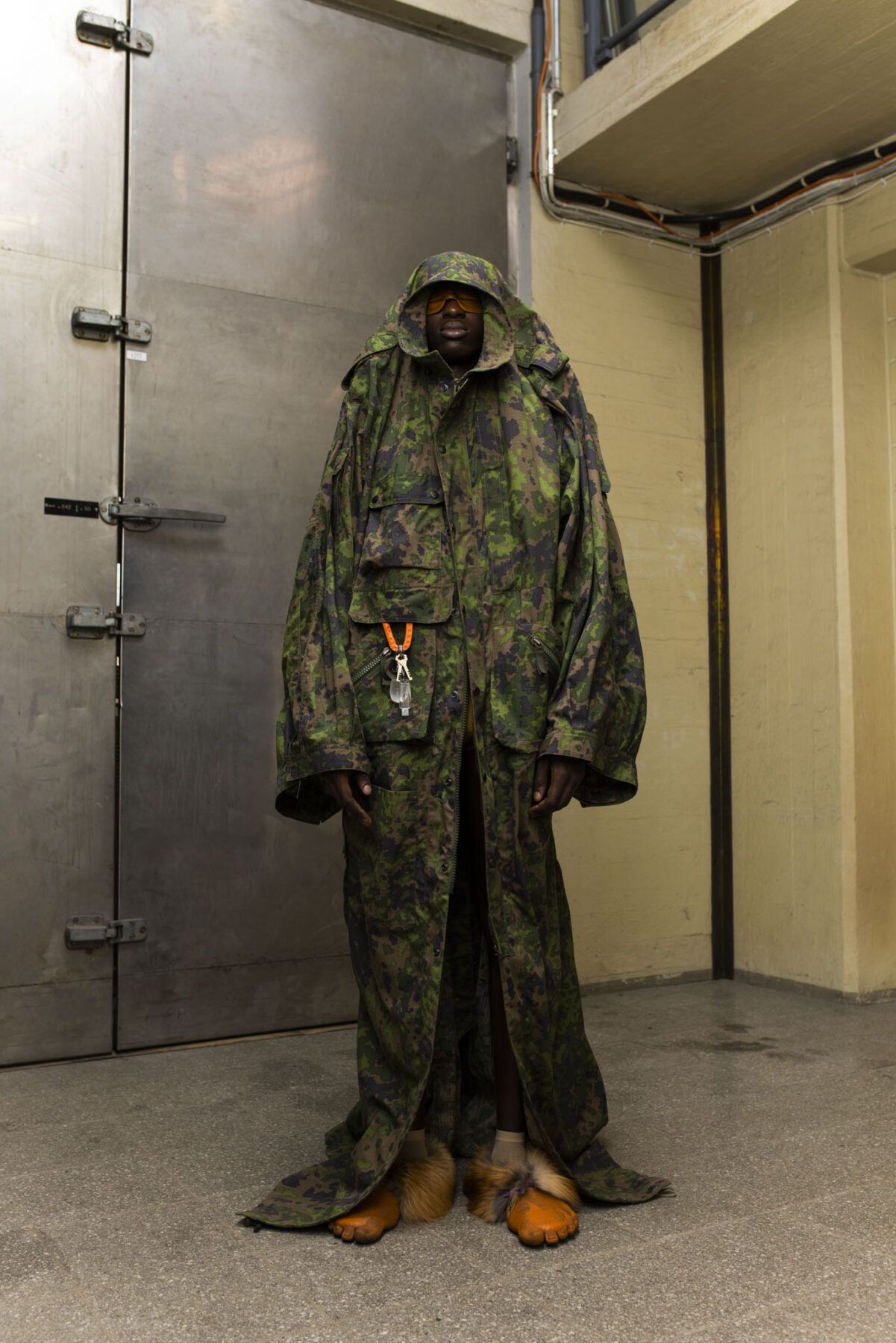 CB_01
CB_01

Casus Belli BA Graduate collection Photographer: Sofia Okkonen
CB_01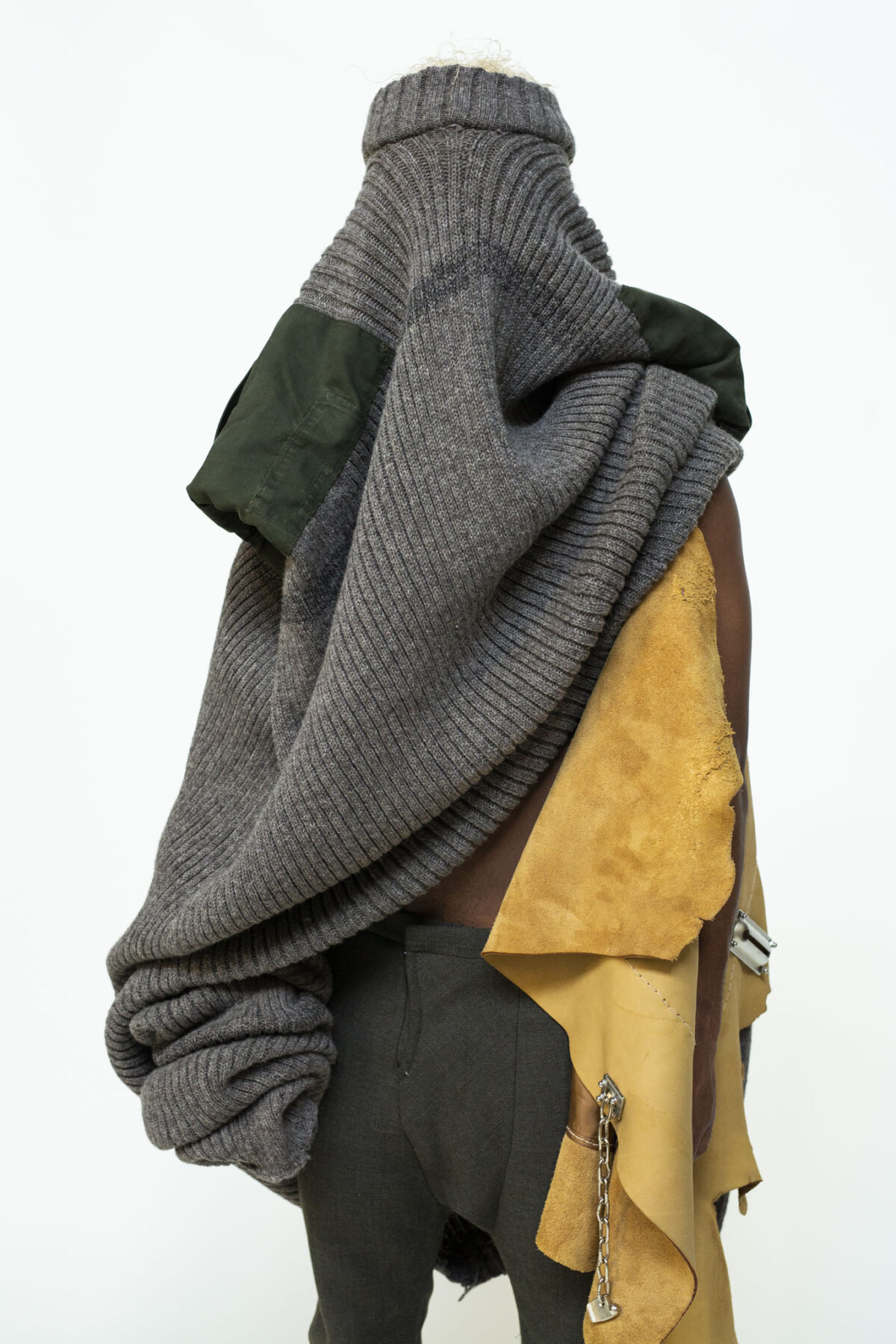 CB_02
CB_02

Casus Belli BA Graduate collection Photographer: Sofia Okkonen
CB_02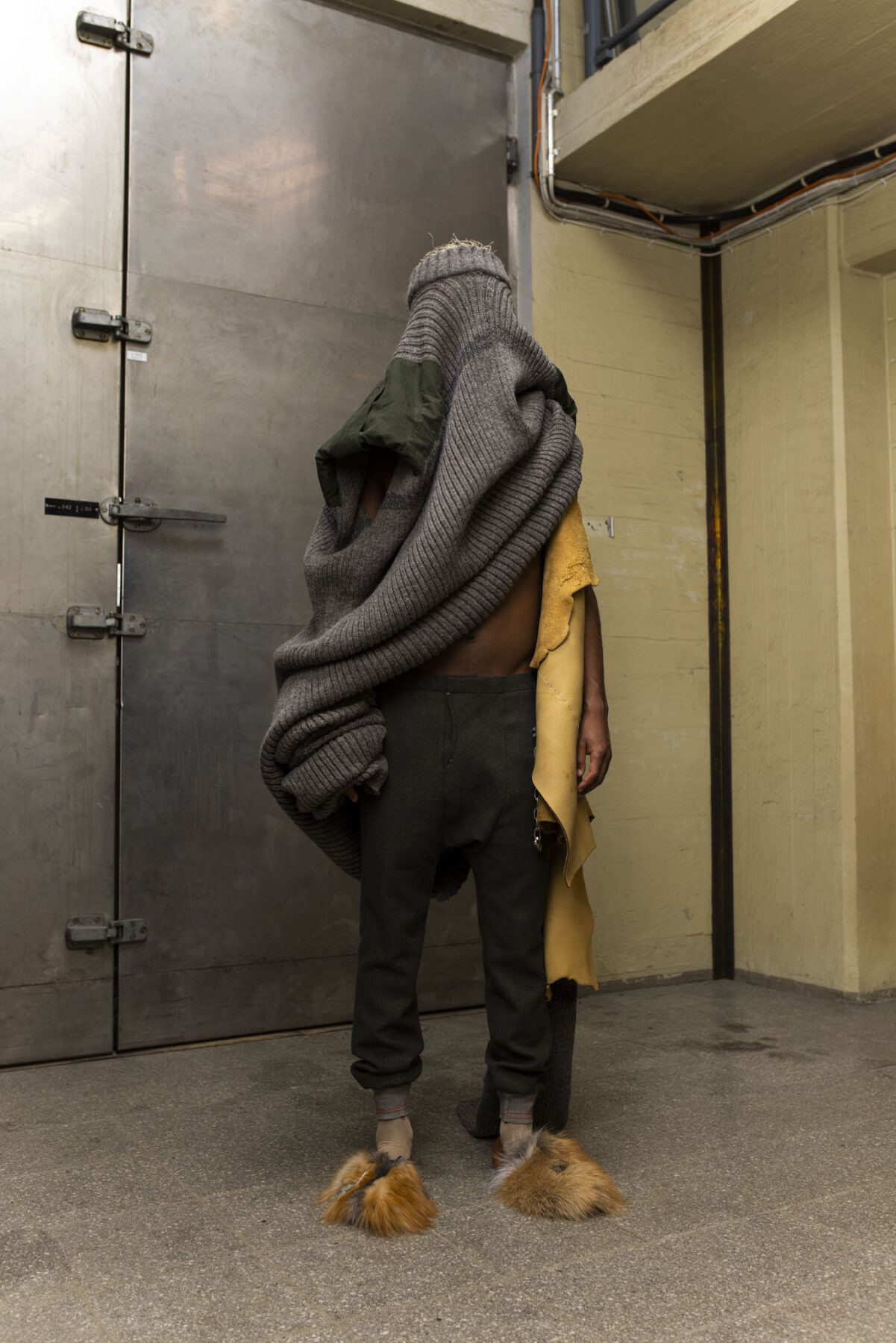 CB_03
CB_03

Casus Belli BA Graduate collection Photographer: Sofia Okkonen
CB_03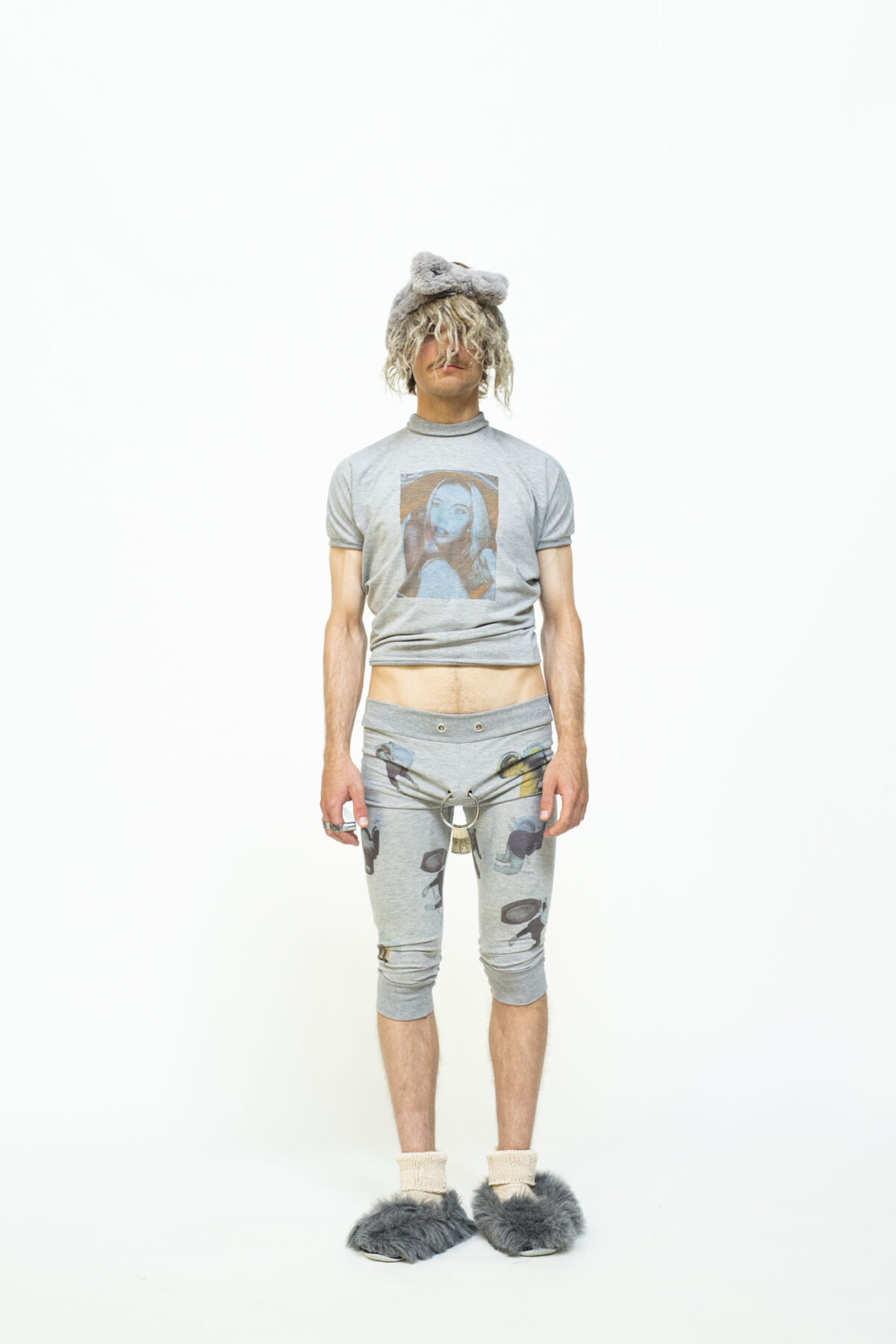 CB_04
CB_04

Casus Belli BA Graduate collection Photographer: Sofia Okkonen
CB_04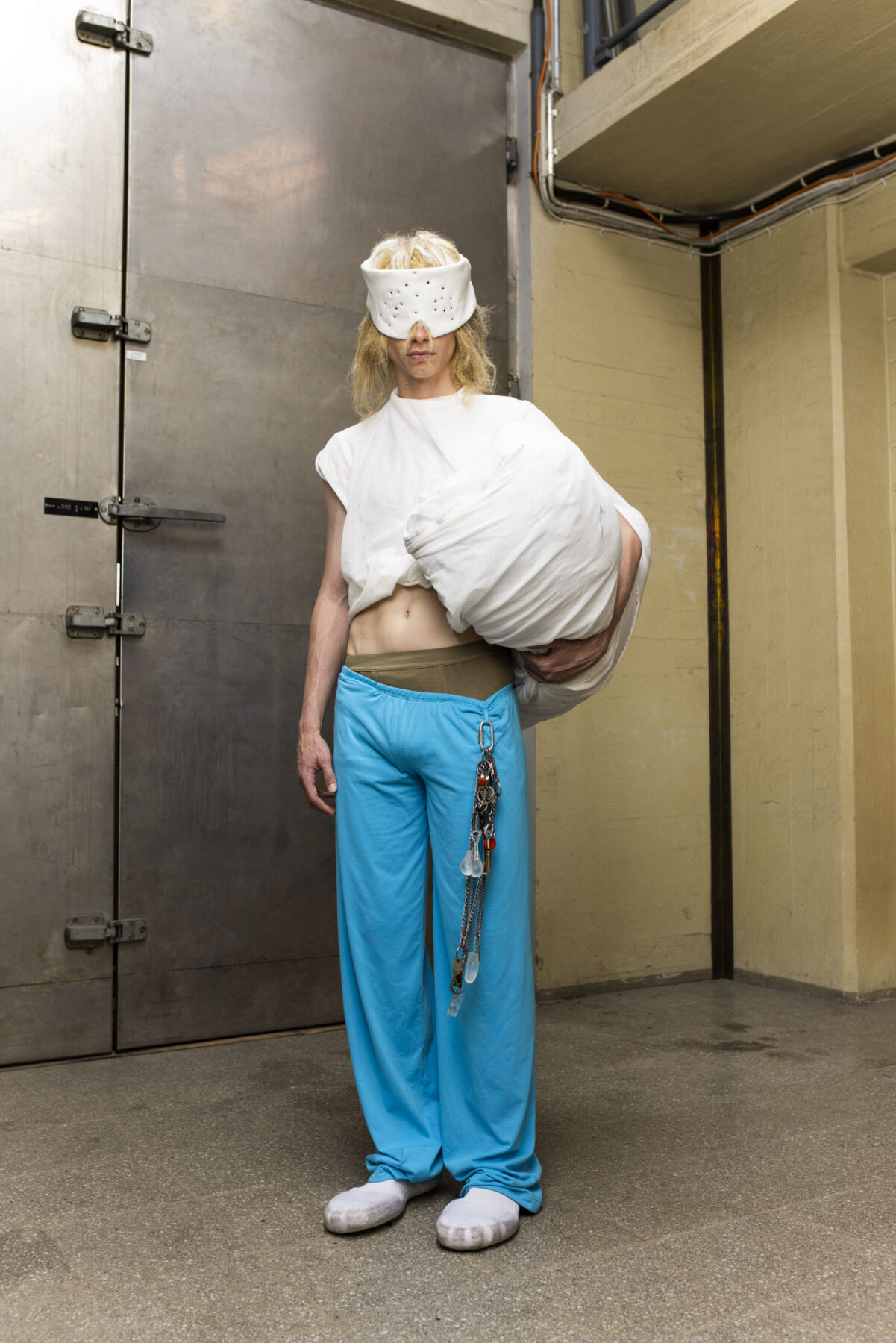 CB_05
CB_05

Casus Belli BA Graduate collection Photographer: Sofia Okkonen
CB_05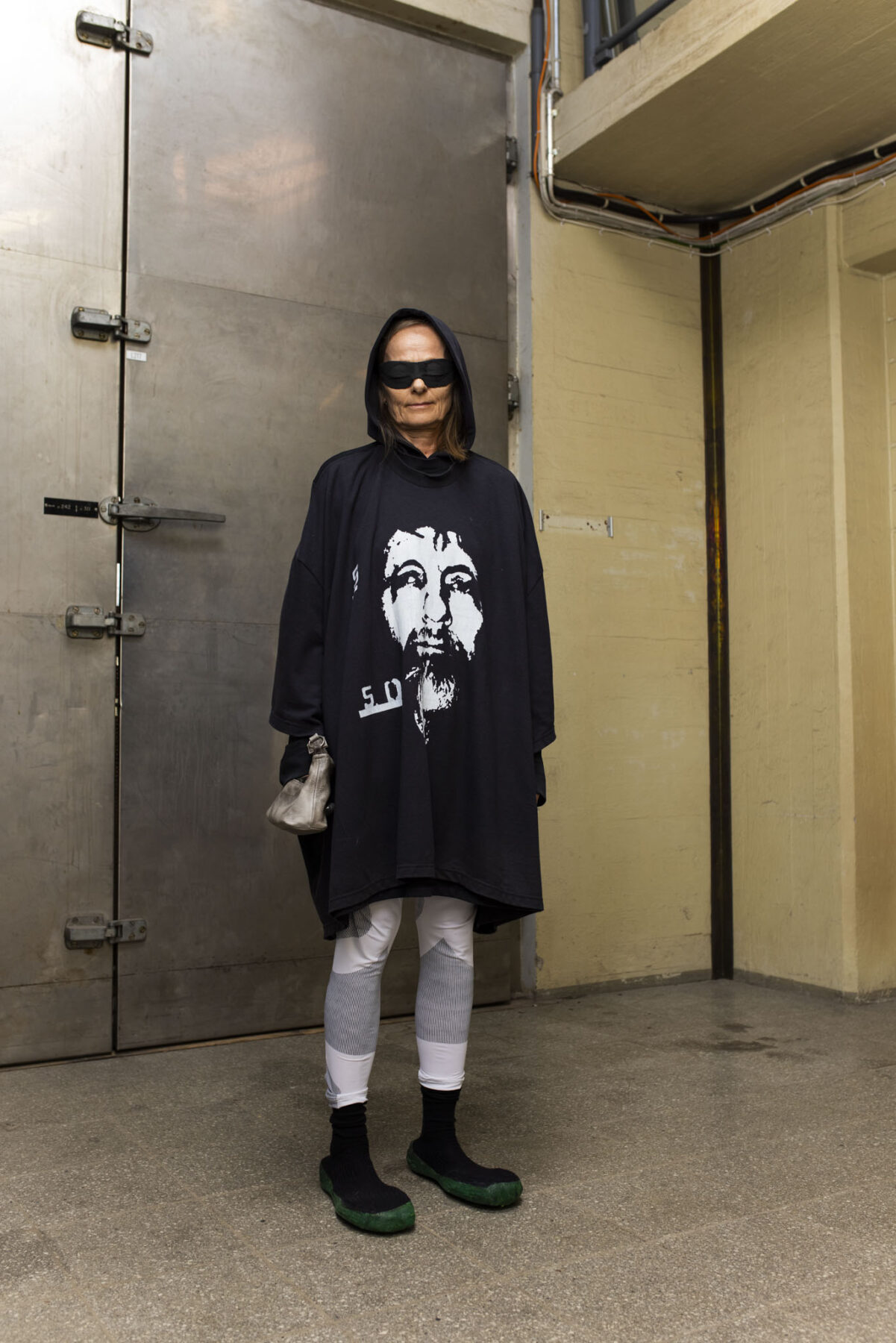 CB_06
CB_06

Casus Belli BA Graduate collection Photographer: Sofia Okkonen
CB_06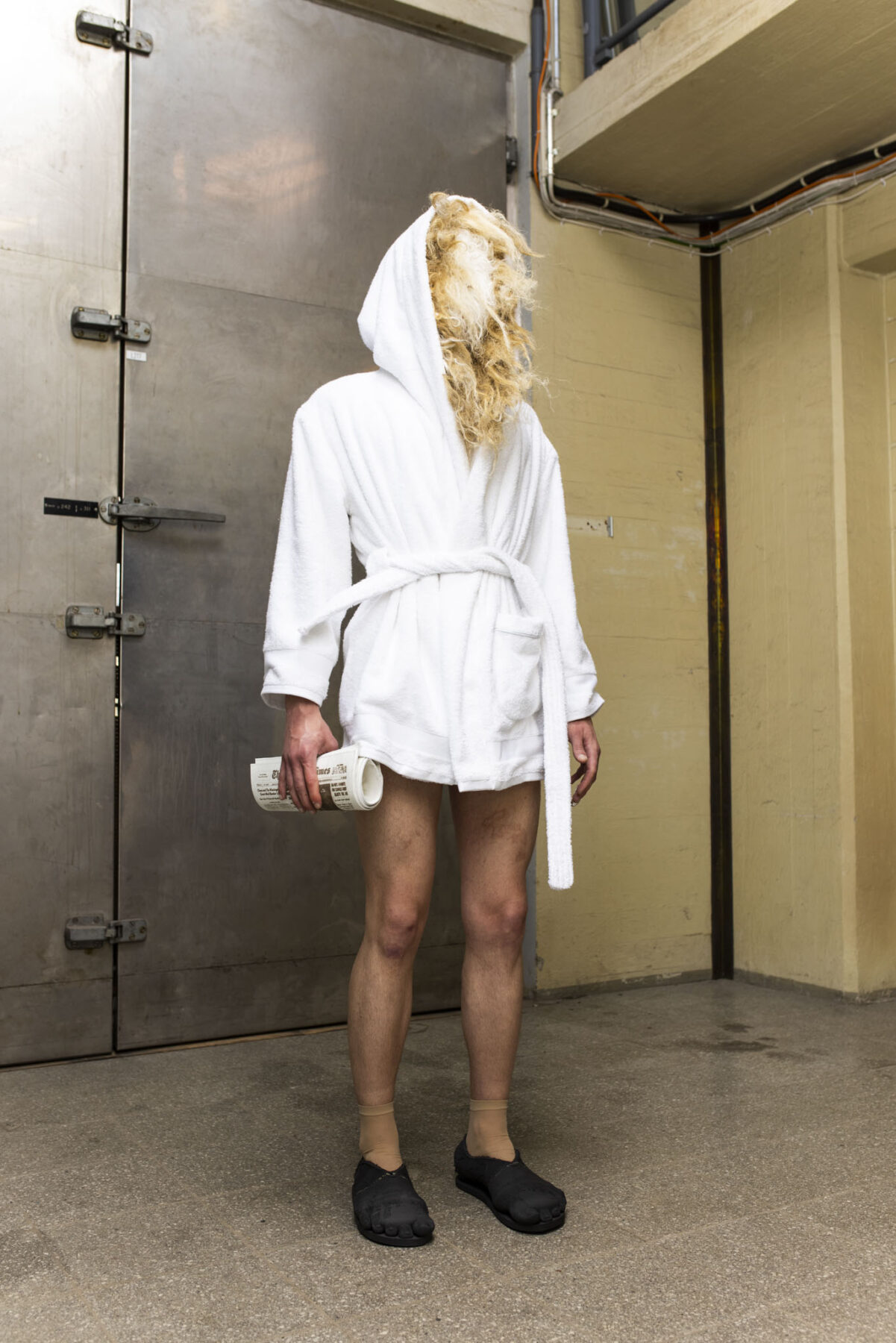 CB_07
CB_07

Casus Belli BA Graduate collection Photographer: Sofia Okkonen
CB_07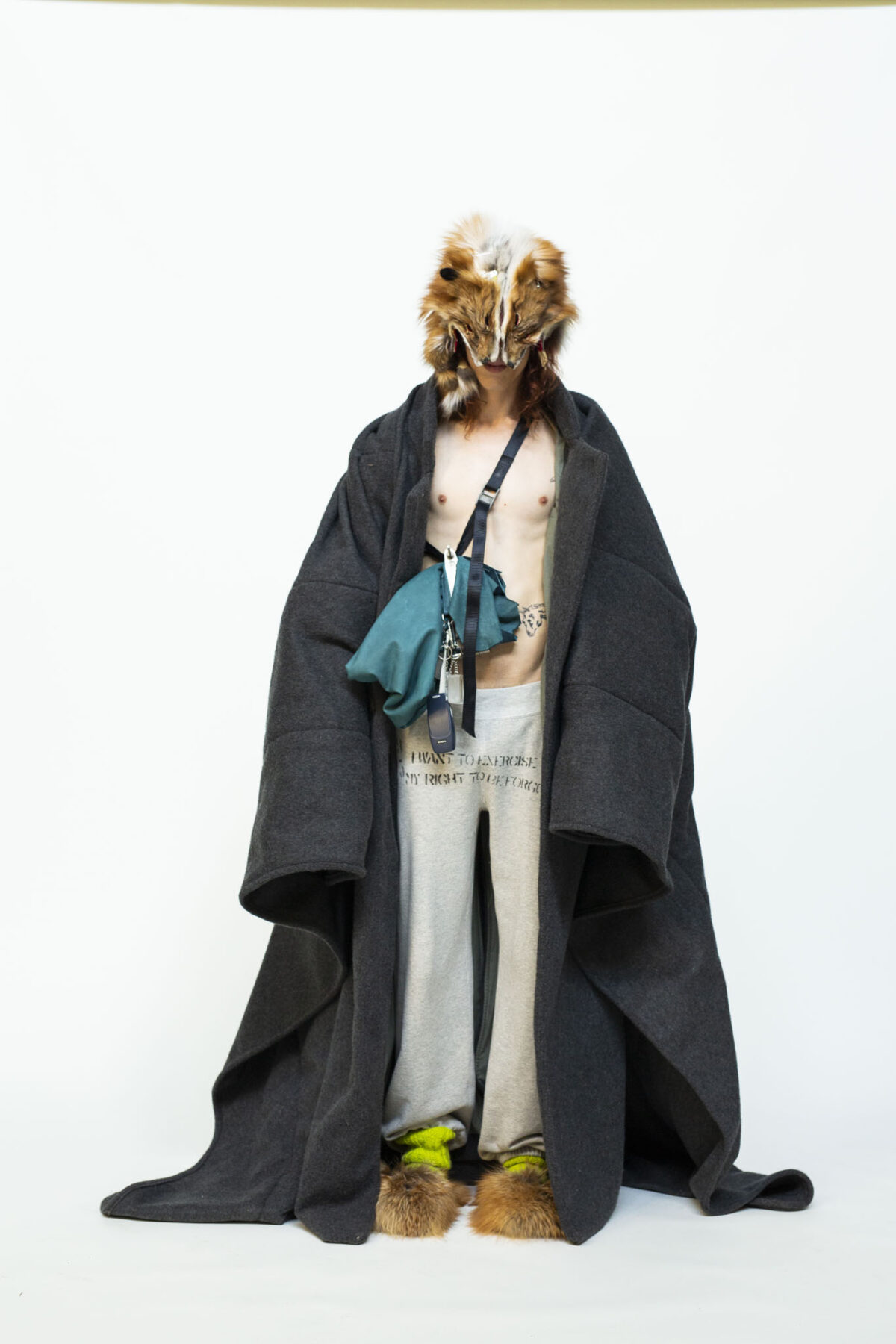 CB_08
CB_08

Casus Belli BA Graduate collection Photographer: Sofia Okkonen
CB_08The [user] that created this work would like for you to forget them
[user] is a comment through fashion about the current poor state of privacy in the modern digital world. It aims to paint a picture of an environment where the struggle for one’s privacy usually occurs. Ironically, that place is the home, the supposed epicenter of individual privacy.
– The fight for one’s privacy is not an epic clash of corresponding powers. It is part of a daily routine, a mundane thing even. The feel of the fabrics, the thoughtlessness of a jacket thrown over the most comfortable clothes when quickly going out to do daily chores, hoping not to be seen, work as a perfect metaphor for the digital dance of privacy, the designer says.
The fabrics in the collection were chosen according to how they represent the mundane nature of everyday clothing.
– I have not been too meticulous with finishings, and all details have a purpose that serve the message about the need to preserve privacy in contemporary digitalized culture.
To the designer, one of the main points of privacy is autonomy. The lack of outside control one gains from staying private is liberating, and should be the norm, instead of the pressure to share everything with others in online environments. The designer also believes that one way of simultaneously utilizing digital technologies and enhancing privacy and autonomy could be 3D printing.
– 3D-printed objects are one good example of how technology can create autonomy instead of imprisonment. Instead of being at the mercy of commercial companies and the online shopping environment to whom consumers must disclose their personal information such as the home and IP-address as well other personal information regarding the size, gender or fit, one could ideally skip all this and use 3D-printing to manufacture, say, one’s own shoes by printing them at home, privately, the designer explains.
Even though the designer is critical of the data leakage that the use of digital technologies often entails, they also see collaboration with technologies as a possibility if done right.
– There is a version of a future where digital platforms and privacy can coexist. I believe that this shift needs different values than the idea of economic growth which guides current decisions. At the moment it seems like an unlikely utopia, but something of that type might work if we want to take a direction for a more humane world where the digital and the private can coexist.
Contact information:
Casus Belli
@user666666777_2
Nhung Huynh
(ba)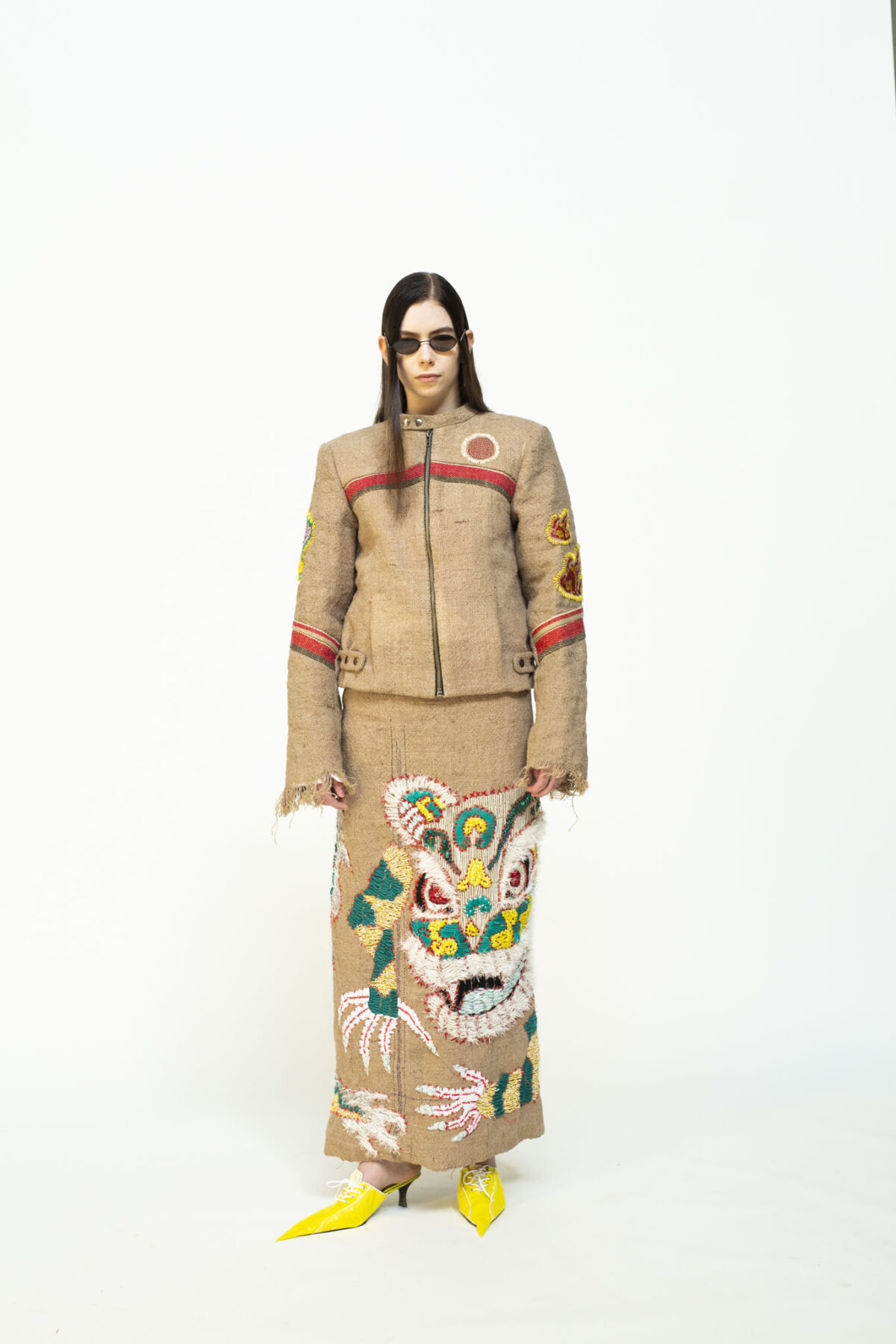 NH_01
NH_01

Nhung Huynh BA Graduate collection Photographer: Sofia Okkonen
NH_01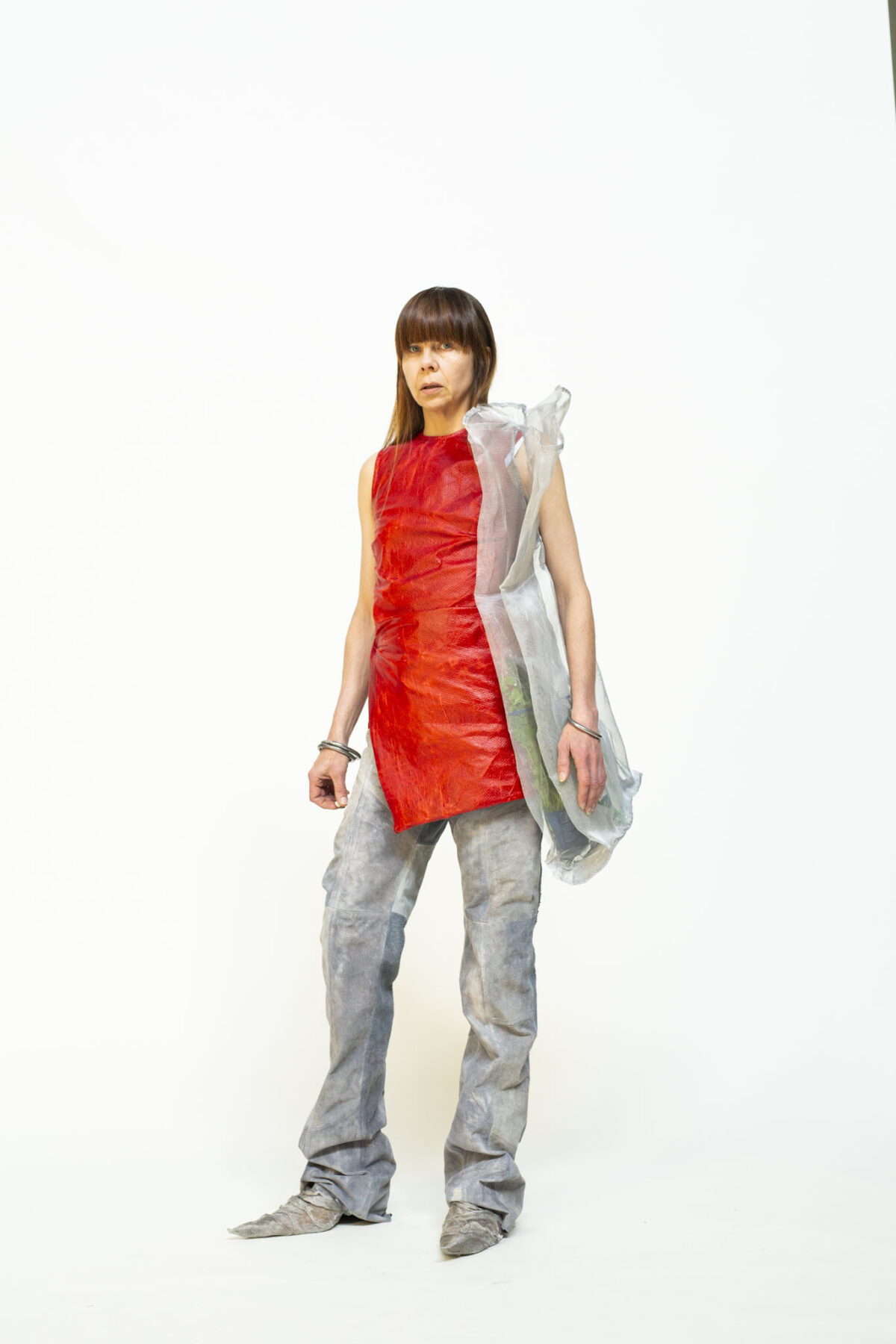 NH_02
NH_02

Nhung Huynh BA Graduate collection Photographer: Sofia Okkonen
NH_02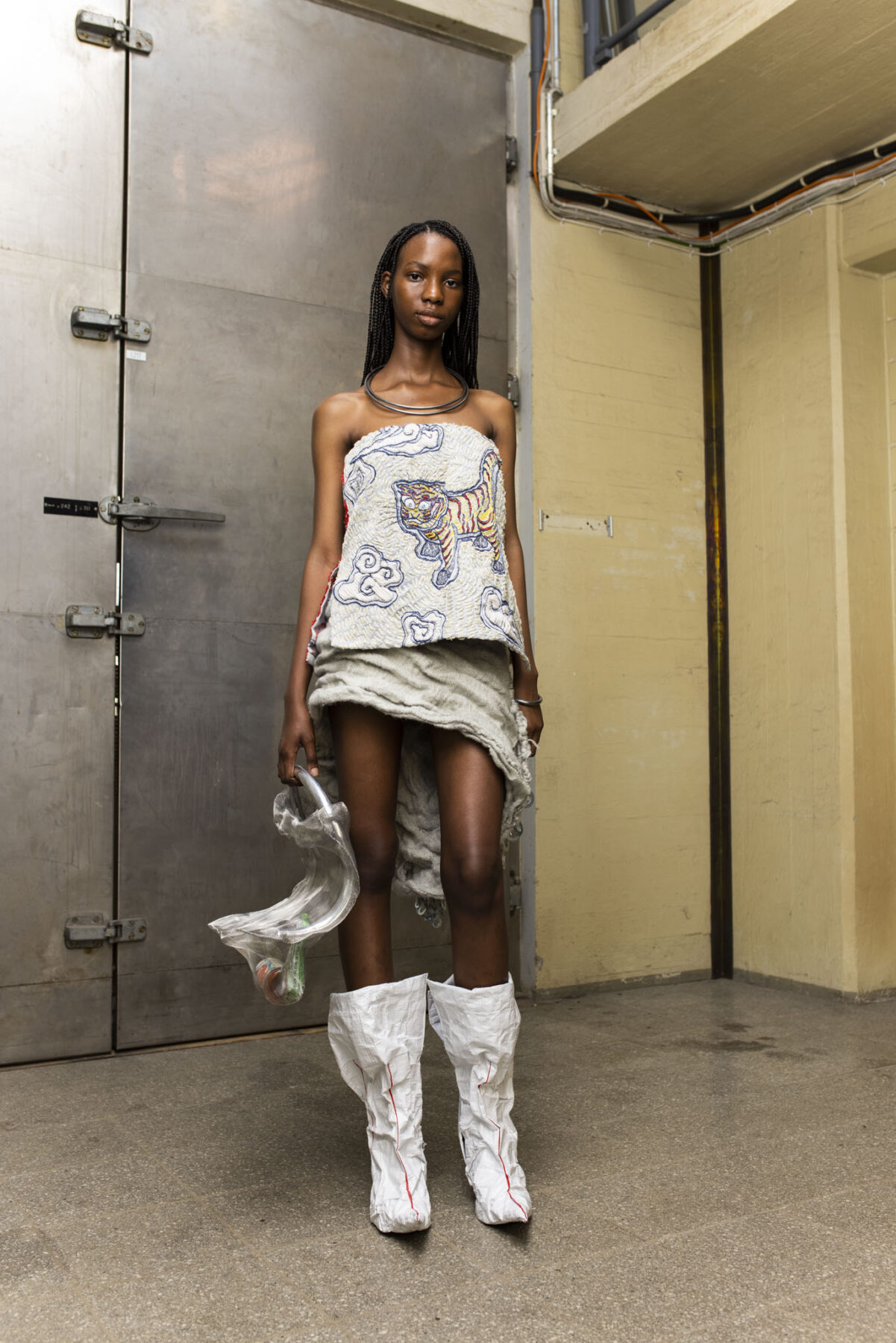 NH_03
NH_03

Nhung Huynh BA Graduate collection Photographer: Sofia Okkonen
NH_03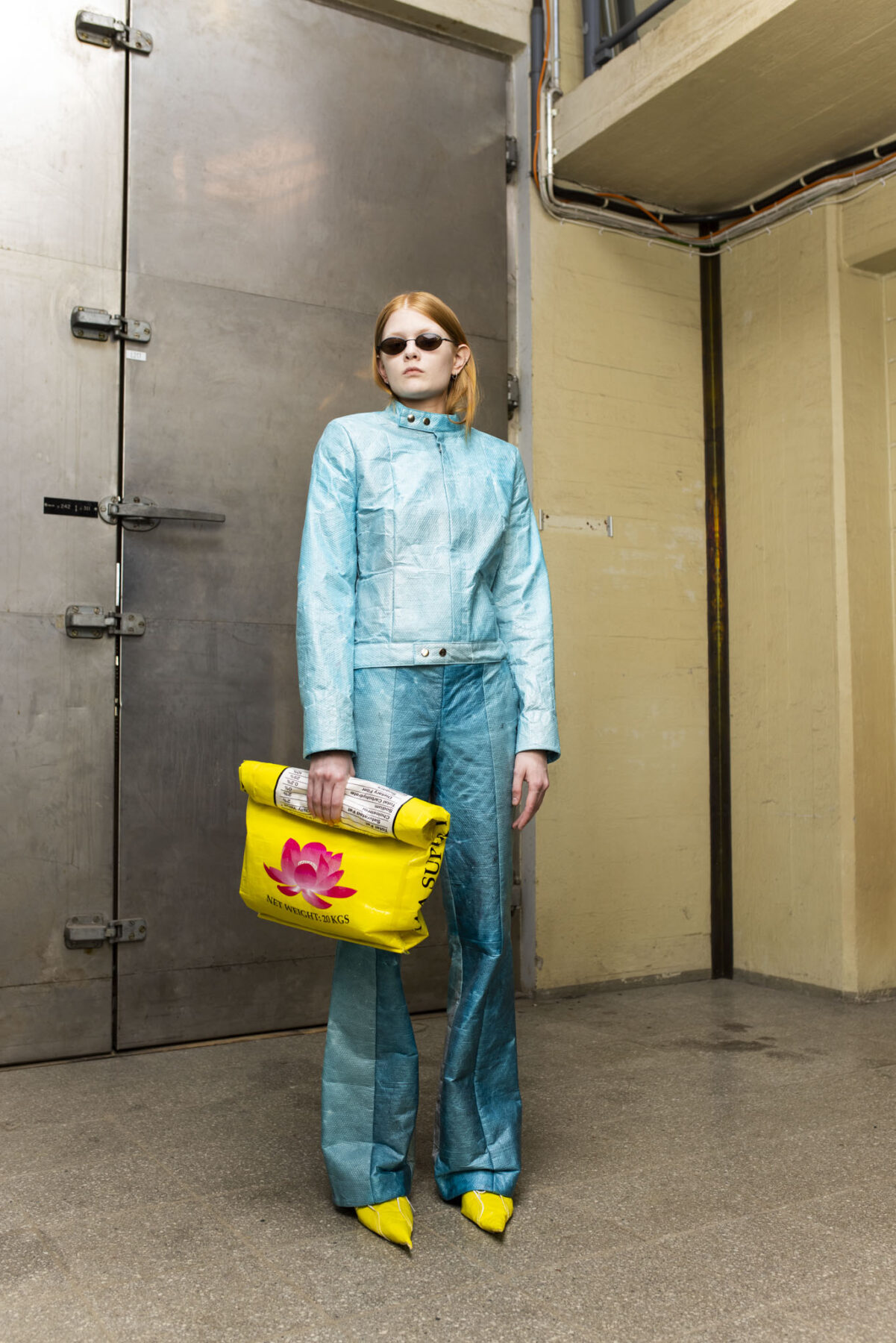 NH_04
NH_04

Nhung Huynh BA Graduate collection Photographer: Sofia Okkonen
NH_04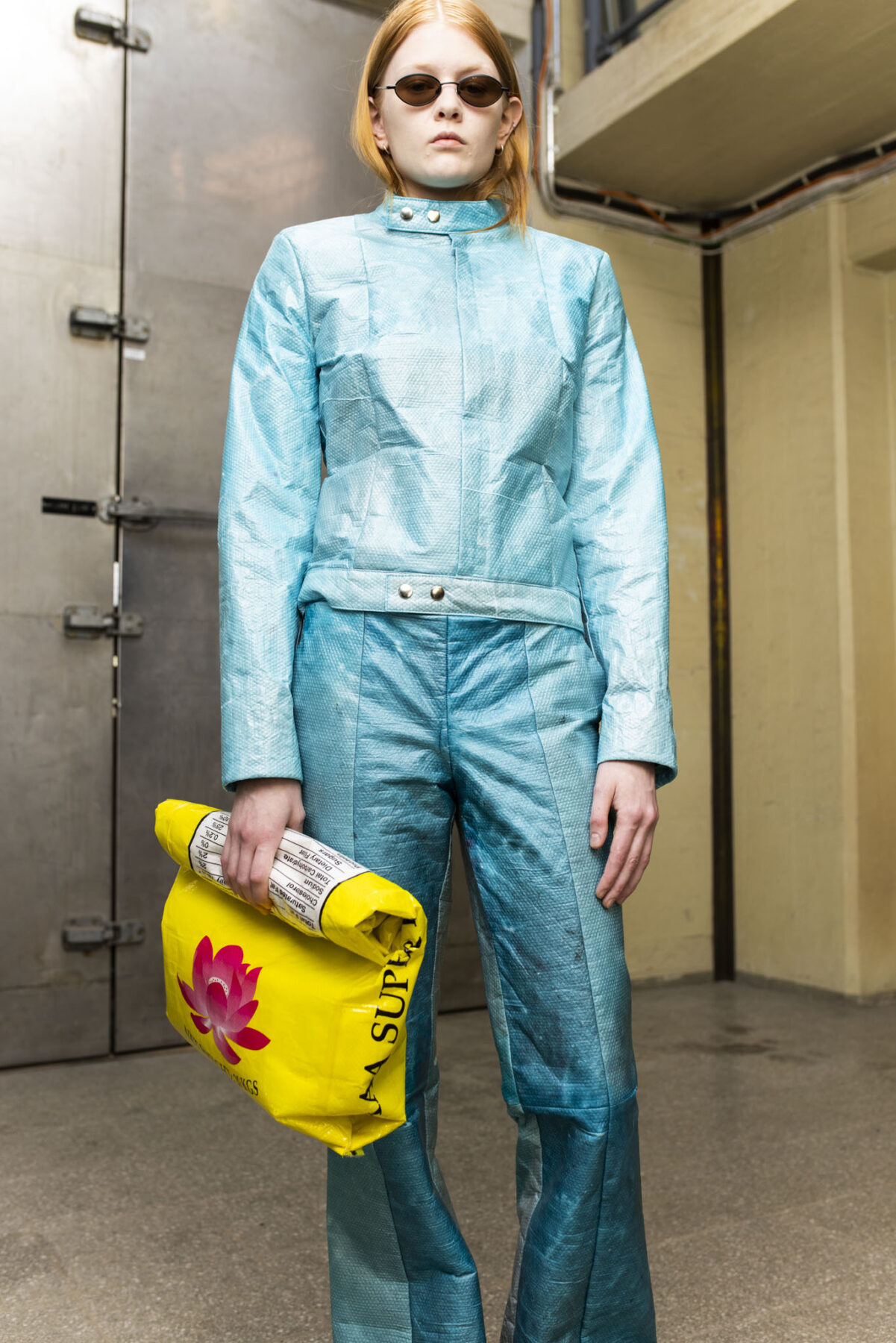 NH_05
NH_05

Nhung Huynh BA Graduate collection Photographer: Sofia Okkonen
NH_05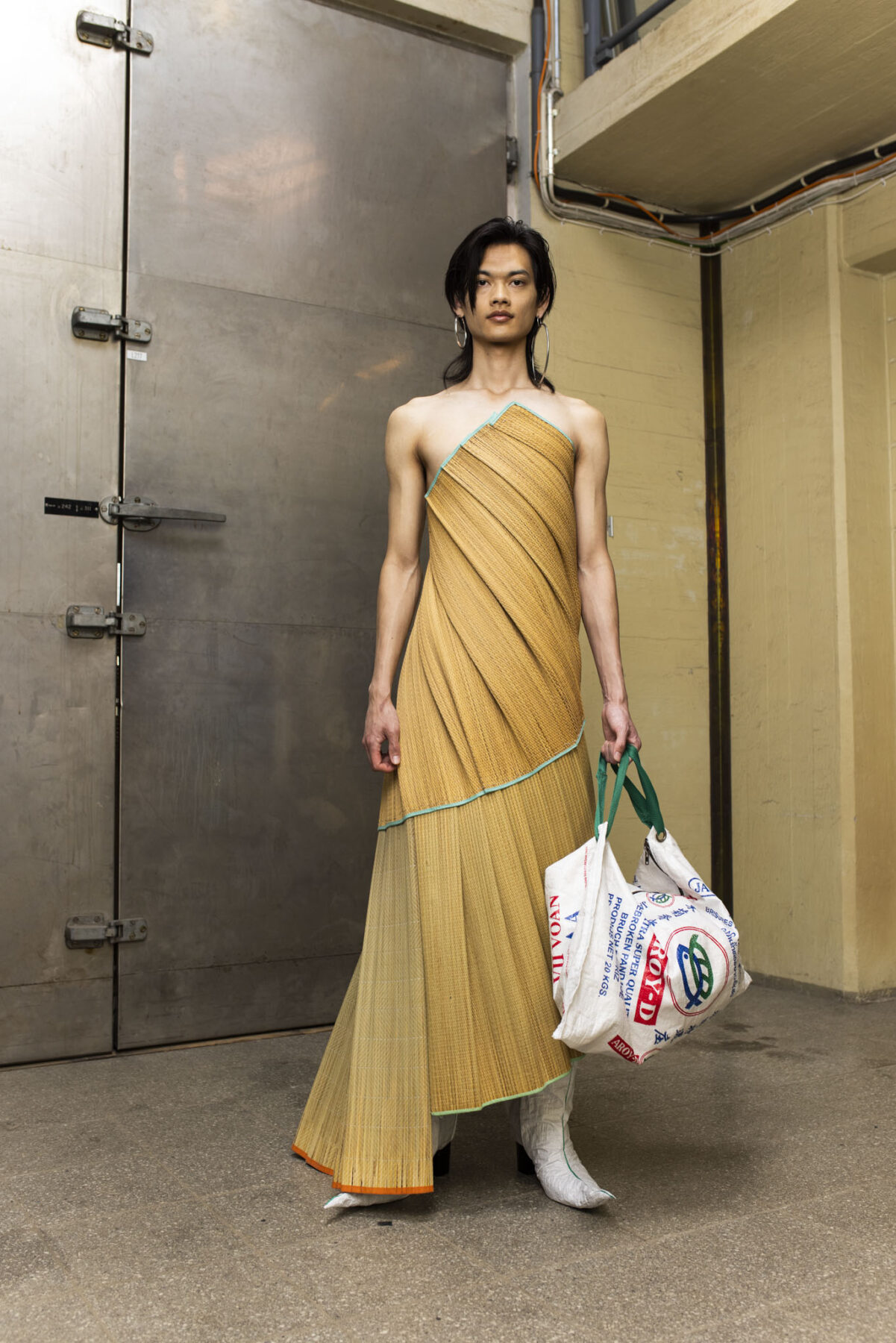 NH_06
NH_06

Nhung Huynh BA Graduate collection Photographer: Sofia Okkonen
NH_06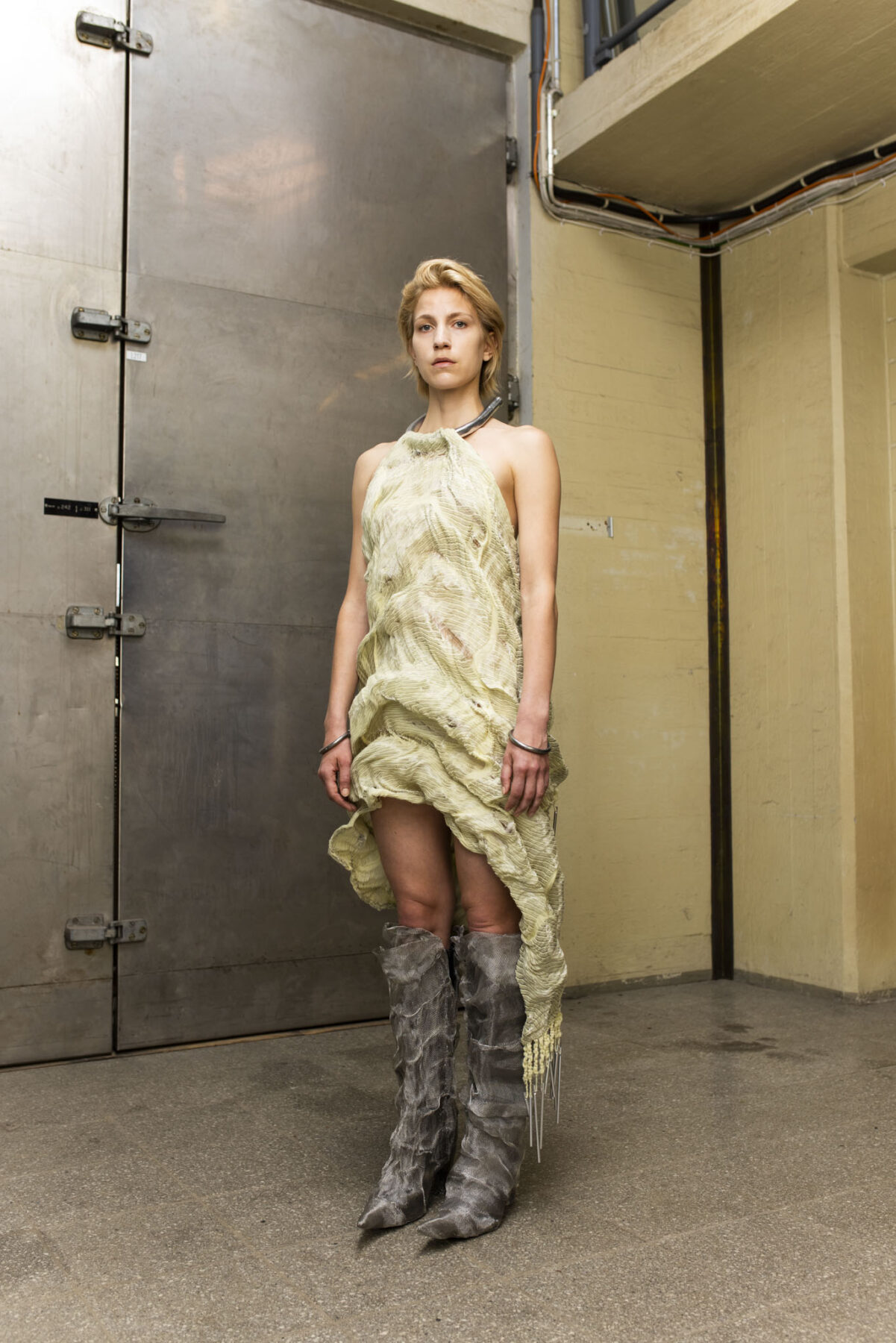 NH_07
NH_07

Nhung Huynh BA Graduate collection Photographer: Sofia Okkonen
NH_07Risteyksessä – At an Intersection
Nhung Huynh’s graduate collection “Risteyksessä – At an Intersection” presents is a unique vantage point where East meets the West, Finland meets Vietnam, and Rovaniemi meets Helsinki. The work collides modern with tradition by painting a mental image of a busy intersection pulled out from Saigon and planted in Helsinki.
Huynh draws inspiration from her personal experience living at the crossroads of two unique, beautiful, and inspiring cultures: the Vietnamese and the Finnish. In her collection she combines Vietnamese folk art, traditional dress and everyday objects with bold material exploration, innovating a collection that is undoubtedly contemporary fashion.
– I use my work to encourage other second-generation immigrants to bring forth their multicultural backgrounds to create something new. I am not only interested in using the official cultural heritage of the ancestors, but especially in finding everyday things and ideas that easily go unnoticed in both cultures, Huynh explains.
In her work materials play a major role. The designer has handmade or recycled nearly all the materials used in the collection, following the traditions of both Finnish and Vietnamese handcrafts that aim at sustainability through a clever material reuse. She also takes material innovation a step further by creating items from wood fiber cellulose.
– I approach materials without prejudice. This means that I utilize existing things such as rice- and coffee sacks, bamboo mats, and metal wire. I explore how materials behave, what shapes and clothing purposes they could be used for, and, by shaping and processing them, I gain insight into potential uses of them.
The material choices led Hunh to experiment until she found new and unforeseen shapes and characteristics. Her main techniques include handweaving, jacquard and hand embroidery which she carefully matches with modern materials. This is highlighted in the use of metal wire, for example, which gave woven fabrics life and shape. The interplay between materials and Vietnam-inspired designs and patters created the overall design language of the collection.
Contact information:
Nhung Huynh
+35844 9700630
@nymiht
Neža Simčič
(ma)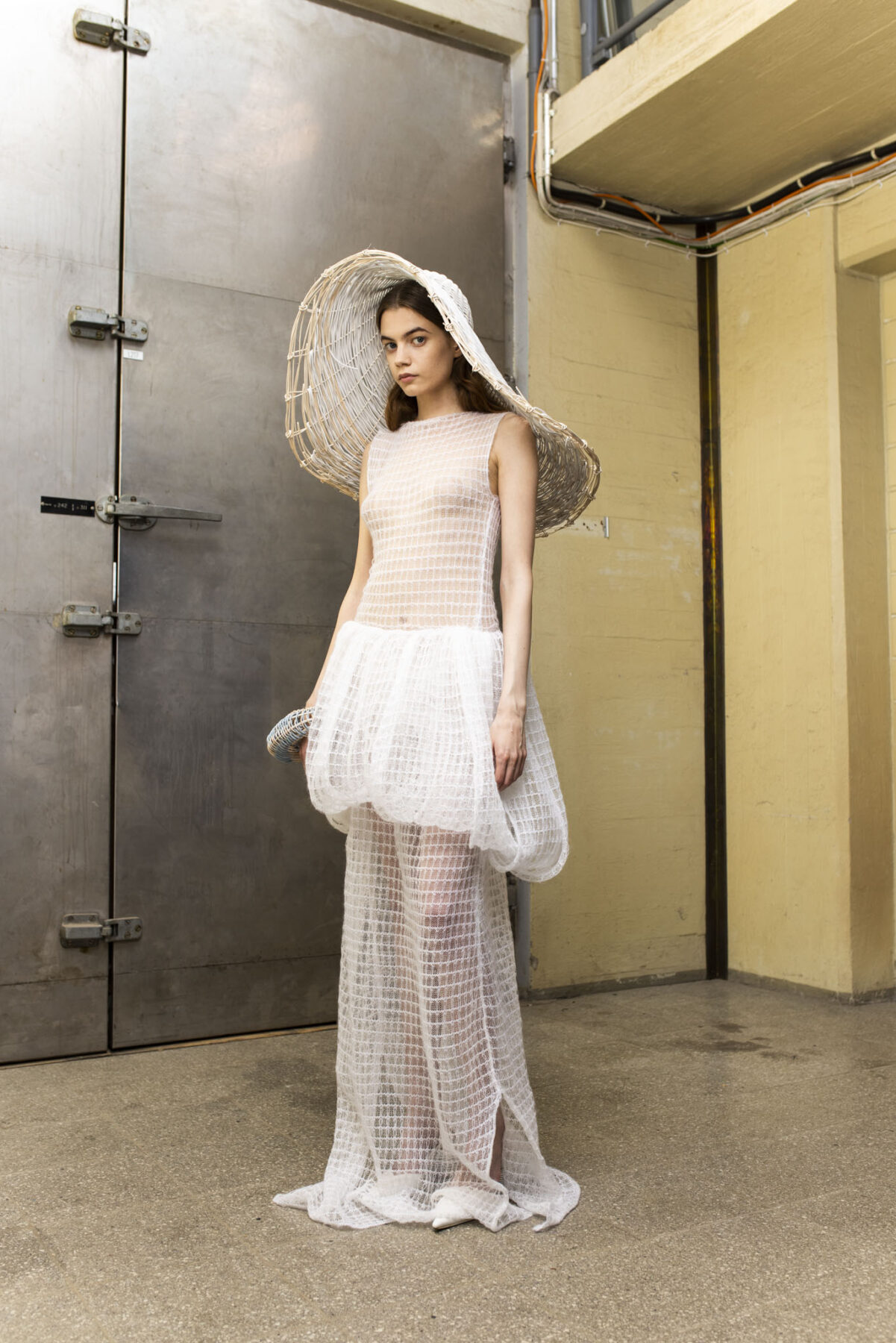 NS_01
NS_01

Neža Simčič MA Graduate collection Photographer: Sofia Okkonen
NS_01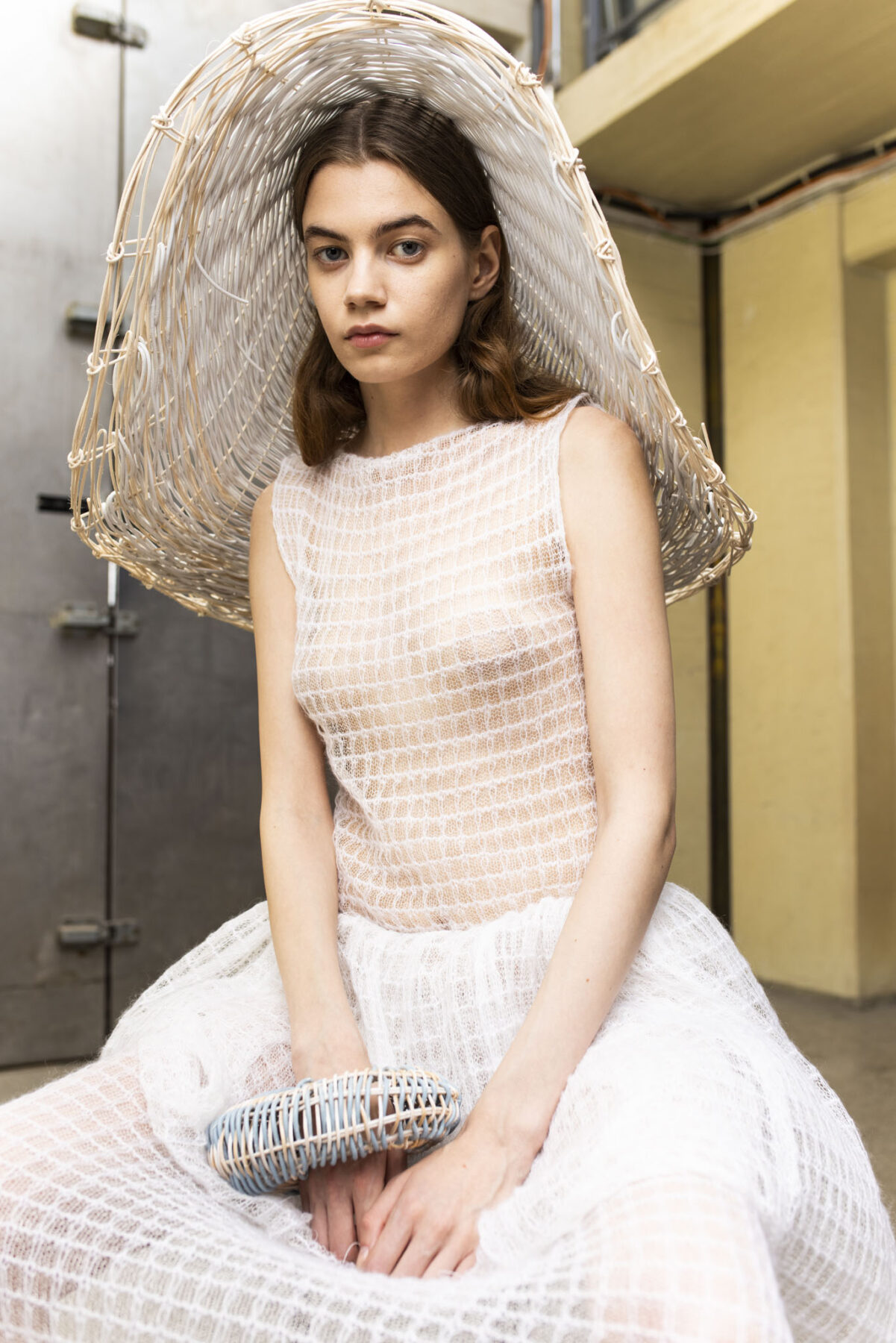 NS_02
NS_02

Neža Simčič MA Graduate collection Photographer: Sofia Okkonen
NS_02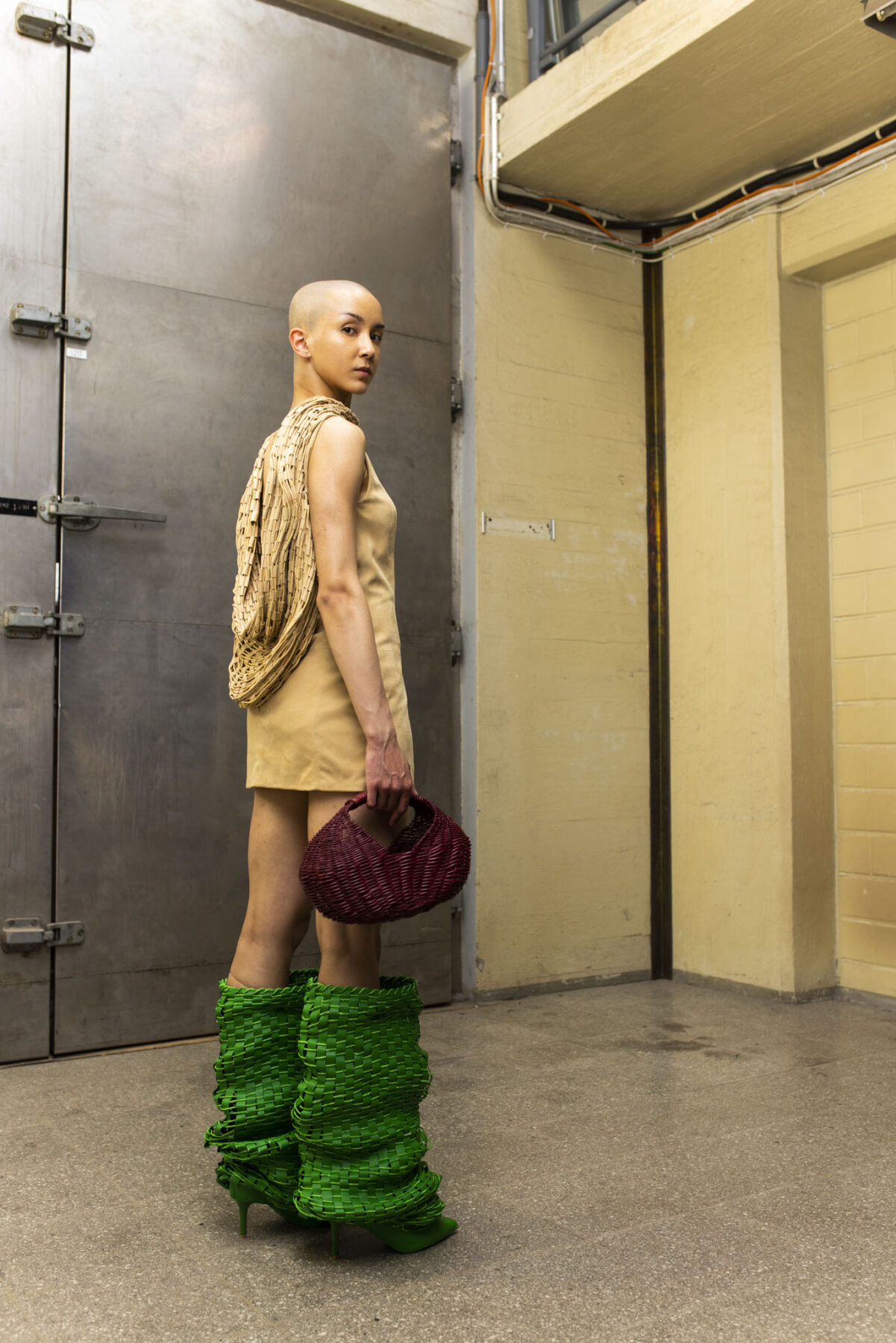 NS_03
NS_03

Neža Simčič MA Graduate collection Photographer: Sofia Okkonen
NS_03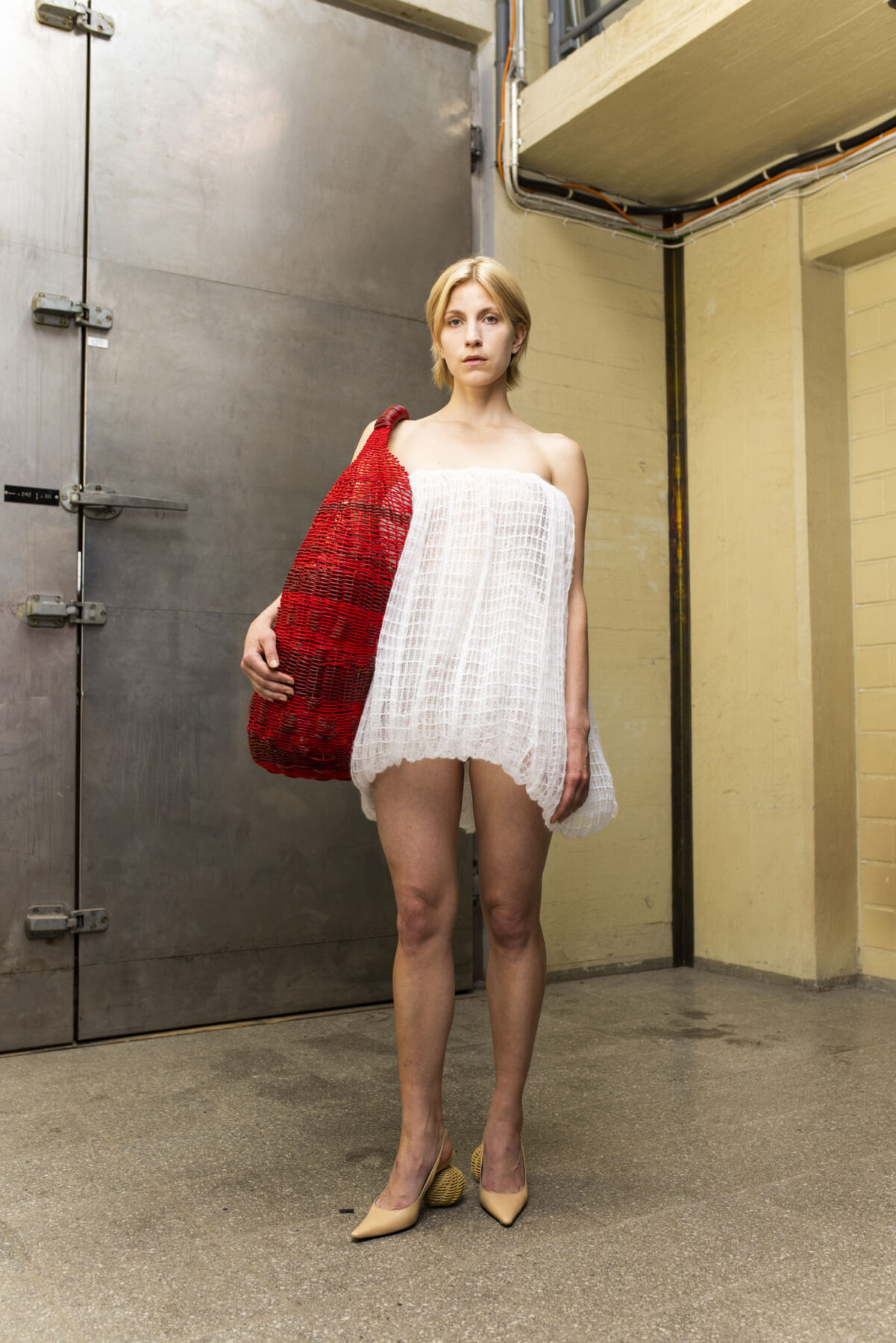 NS_04
NS_04

Neža Simčič MA Graduate collection Photographer: Sofia Okkonen
NS_04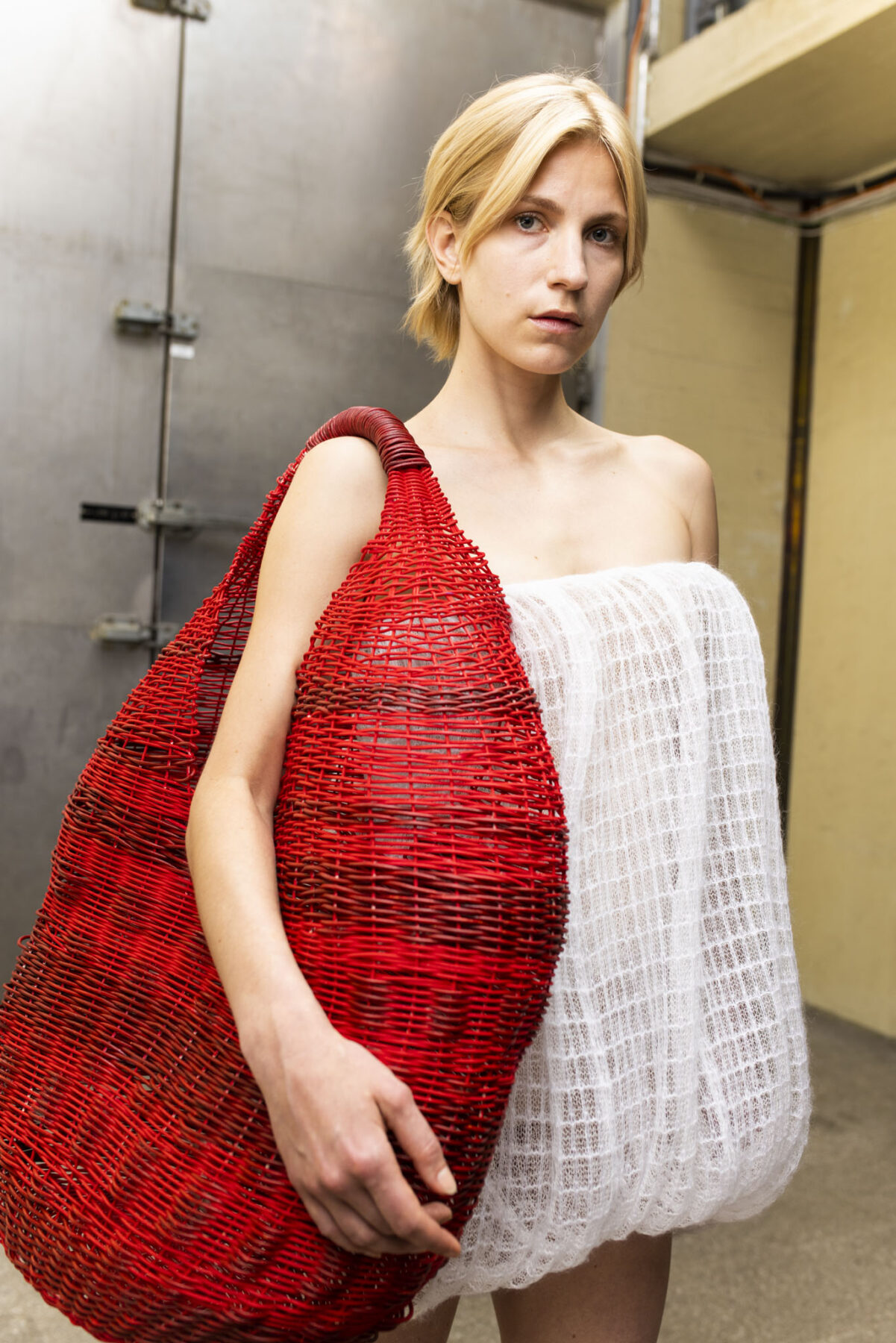 NS_05
NS_05

Neža Simčič MA Graduate collection Photographer: Sofia Okkonen
NS_05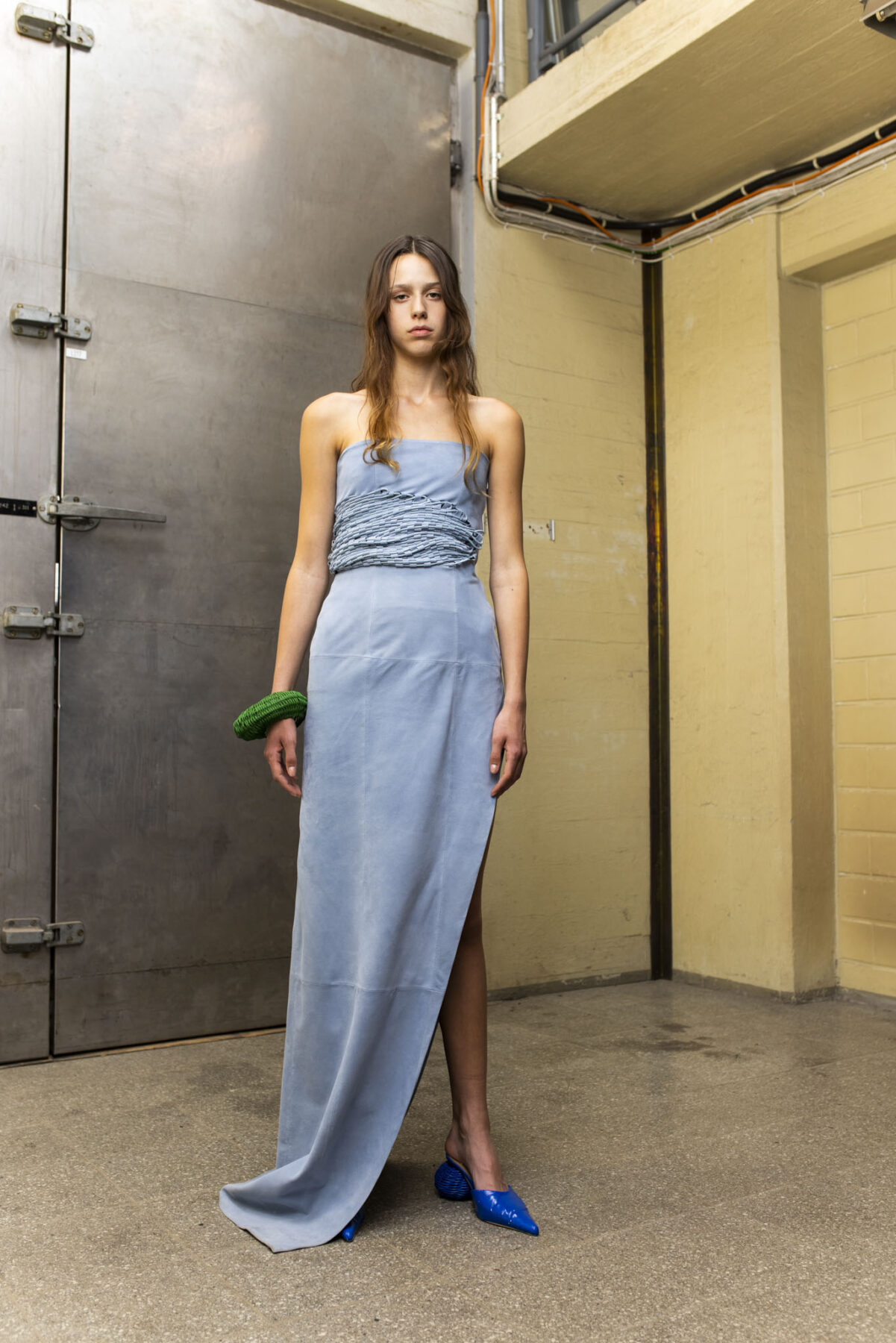 NS_06
NS_06

Neža Simčič MA Graduate collection Photographer: Sofia Okkonen
NS_06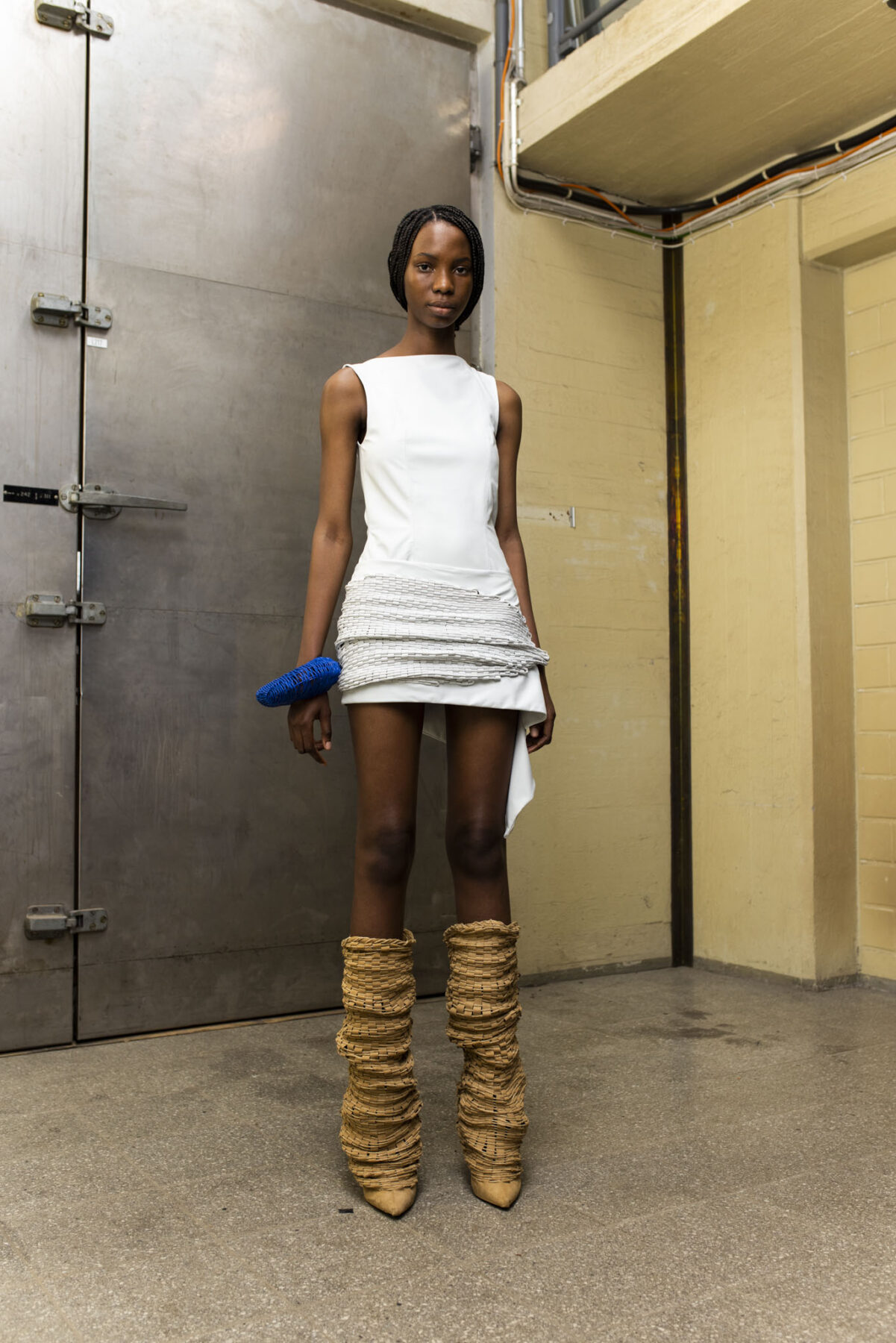 NS_07
NS_07

Neža Simčič MA Graduate collection Photographer: Sofia Okkonen
NS_07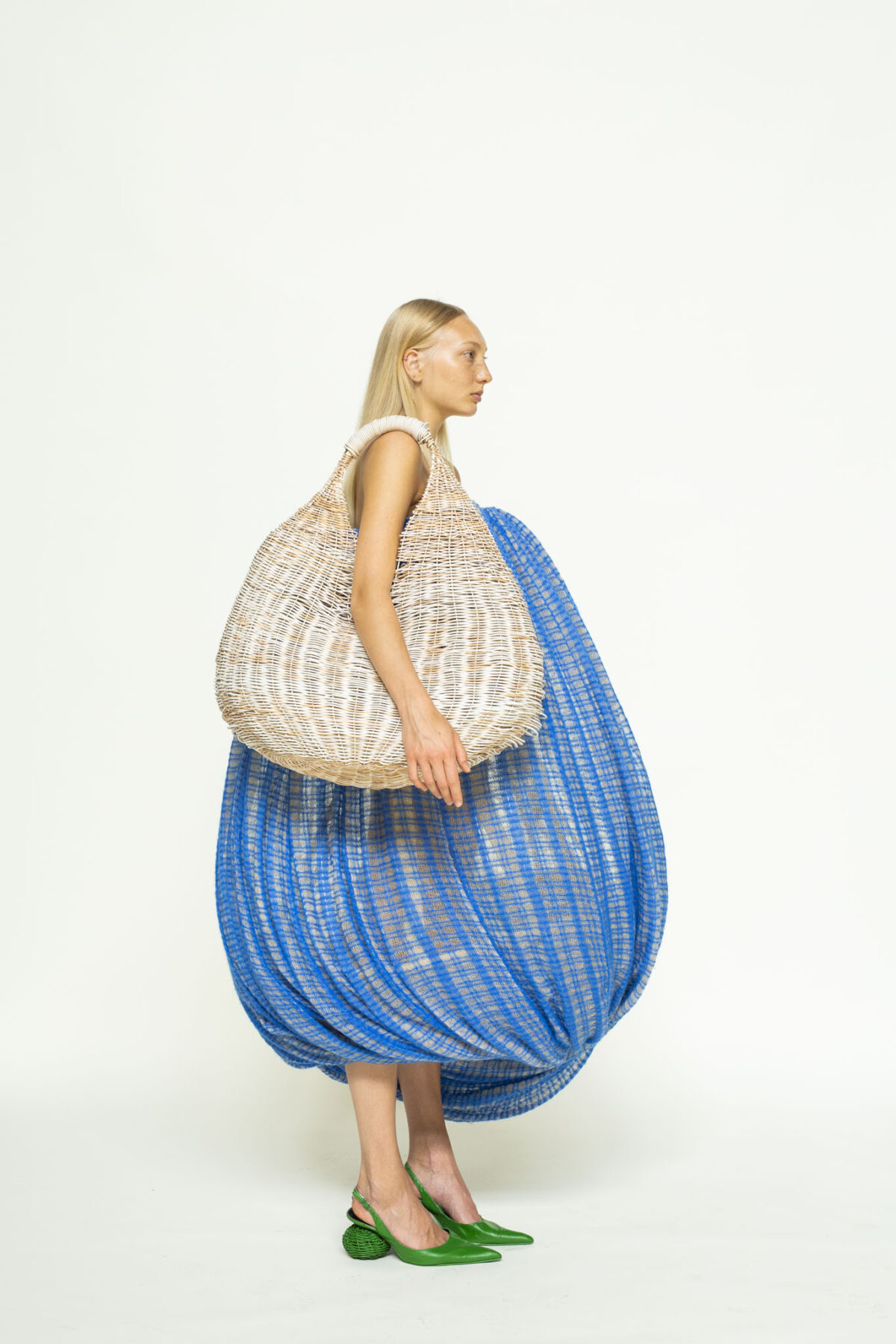 NS_08
NS_08

Neža Simčič MA Graduate collection Photographer: Sofia Okkonen
NS_08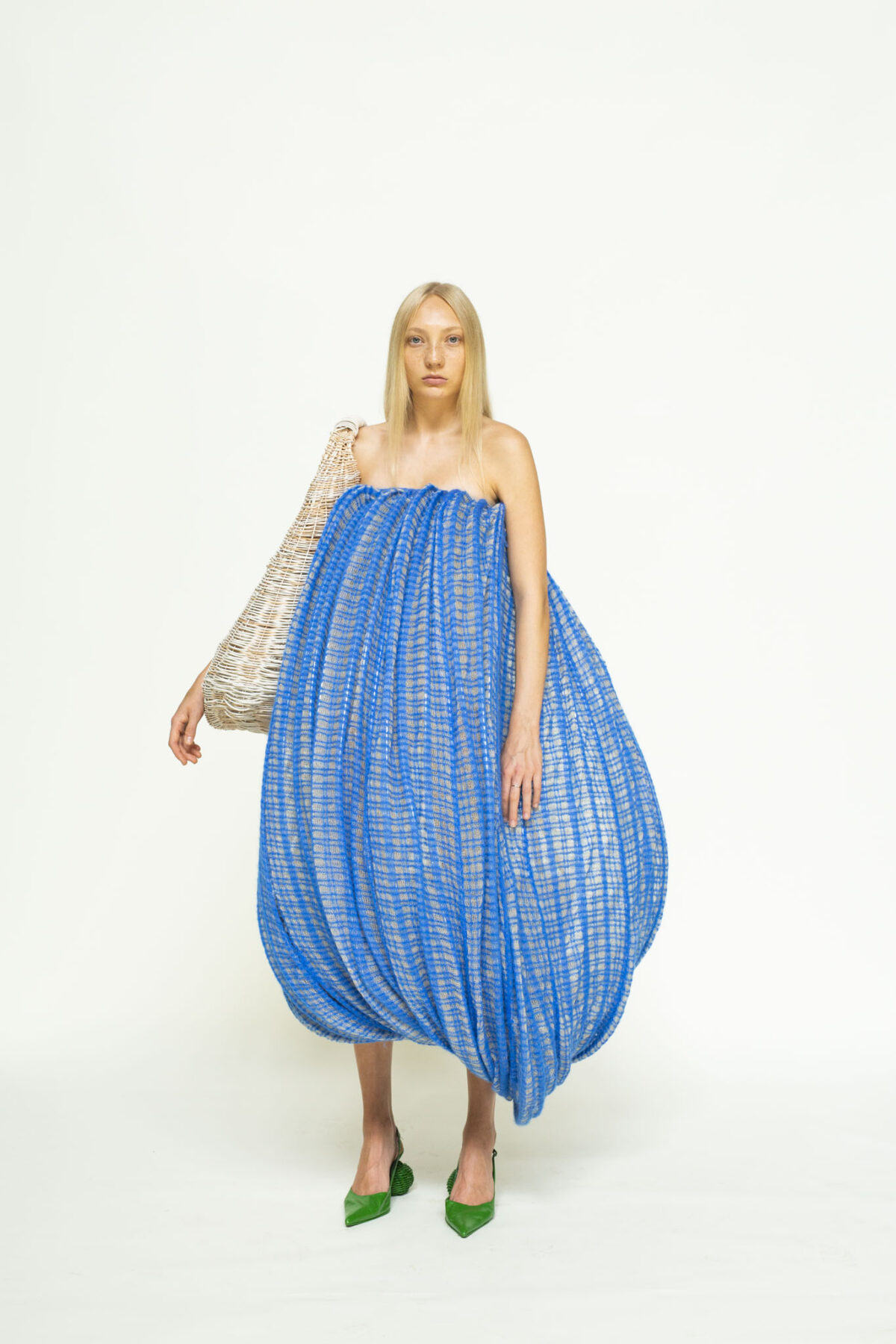 NS_09
NS_09

Neža Simčič MA Graduate collection Photographer: Sofia Okkonen
NS_09Craft as Couture
In her graduate collection, Neža Simčič explores the intricate relationship between cultural sustainability, global Western influence on fashion, and the gradual erosion of traditional textile crafts, with a particular focus on her home country, Slovenia.
The collection aims to underscore the value of preserving traditional crafts not only as a counterbalance to fast fashion but also as a means to bolster cultural diversity, inclusiveness, and community ties.
The garments draw inspiration from Slovenian craft heritage, particularly the ancient tradition of woodenware and basketry, seamlessly integrating these techniques into a modern design context.
– More than anything, I felt the need to express the ideas and culture of a small nation, which has previously been oppressed and overlooked, Simčič says.
Hailing from a background where fashion was not deeply rooted in the culture, Simčič’s first encounters with the artform were through crafts. In this traditional context, couture fashion seemed like an unattainable realm. However, more than anything, she felt a profound need to express the ideas and culture of a small nation, one that was often oppressed and overlooked.
By using craft in the guise of couture, she expresses these ideas. It is a celebration of the idea that one can feel at home even when they don’t feel at home, carrying their ‘cultural passport’ with them through the preservation and reinterpretation of traditional techniques.
– I’ve always admired the high levels of craftsmanship in couture fashion, but it seemed like an unattainable world, detached from my roots and upbringing.
Simčič’s wish was to create a full circle with the collection, recalling her very first encounters with the world of fashion and textiles when her grandmother handed her knitting needles.
– At that time, the outcome was not as important as perfecting the technique. The hands narrated the work through craftsmanship, and the same notion guided me throughout the design process this time. In a way, I was trying to capture the feeling and warmth of home that I could carry with me wherever I go. You feel at home when you don’t feel at home.
Contact information:
Neža Simčič
neza.simcic@aalto.fi
+386 30 302 800
@neza_simcic
Nana Lybeck
(ba)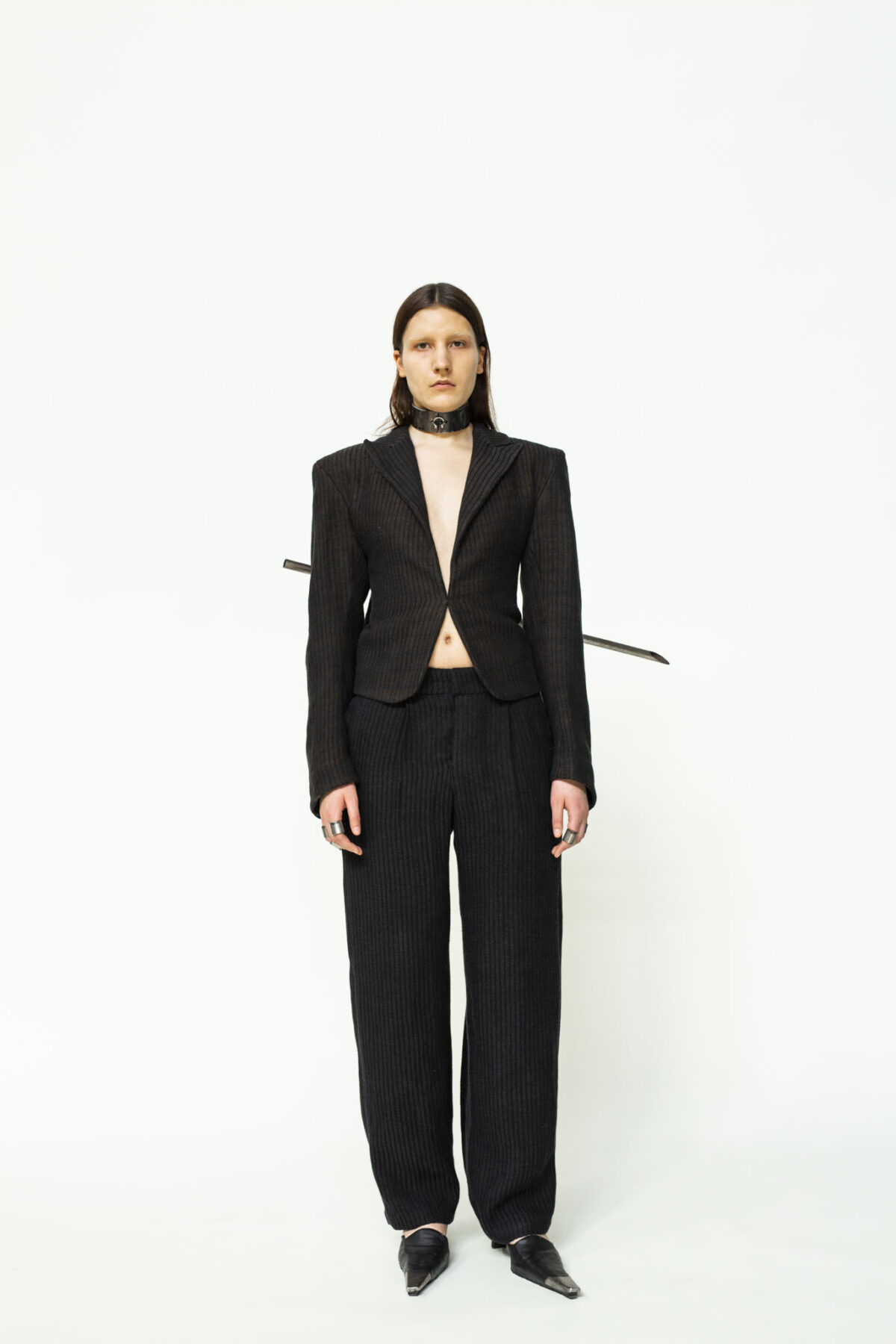 NL_01
NL_01

Nana Lybeck MA Graduate collection Photographer: Sofia Okkonen
NL_01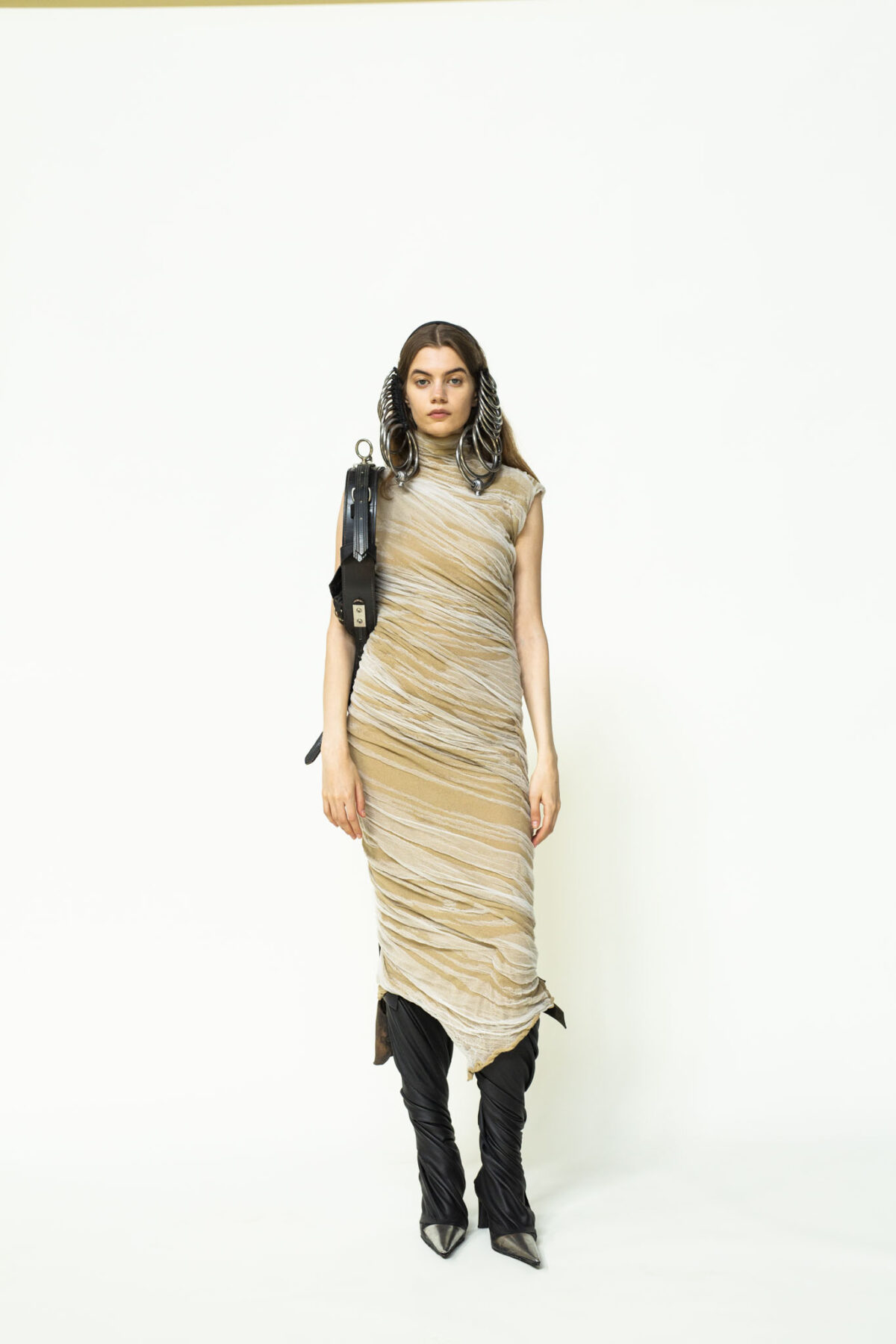 NL_02
NL_02

Nana Lybeck MA Graduate collection Photographer: Sofia Okkonen
NL_02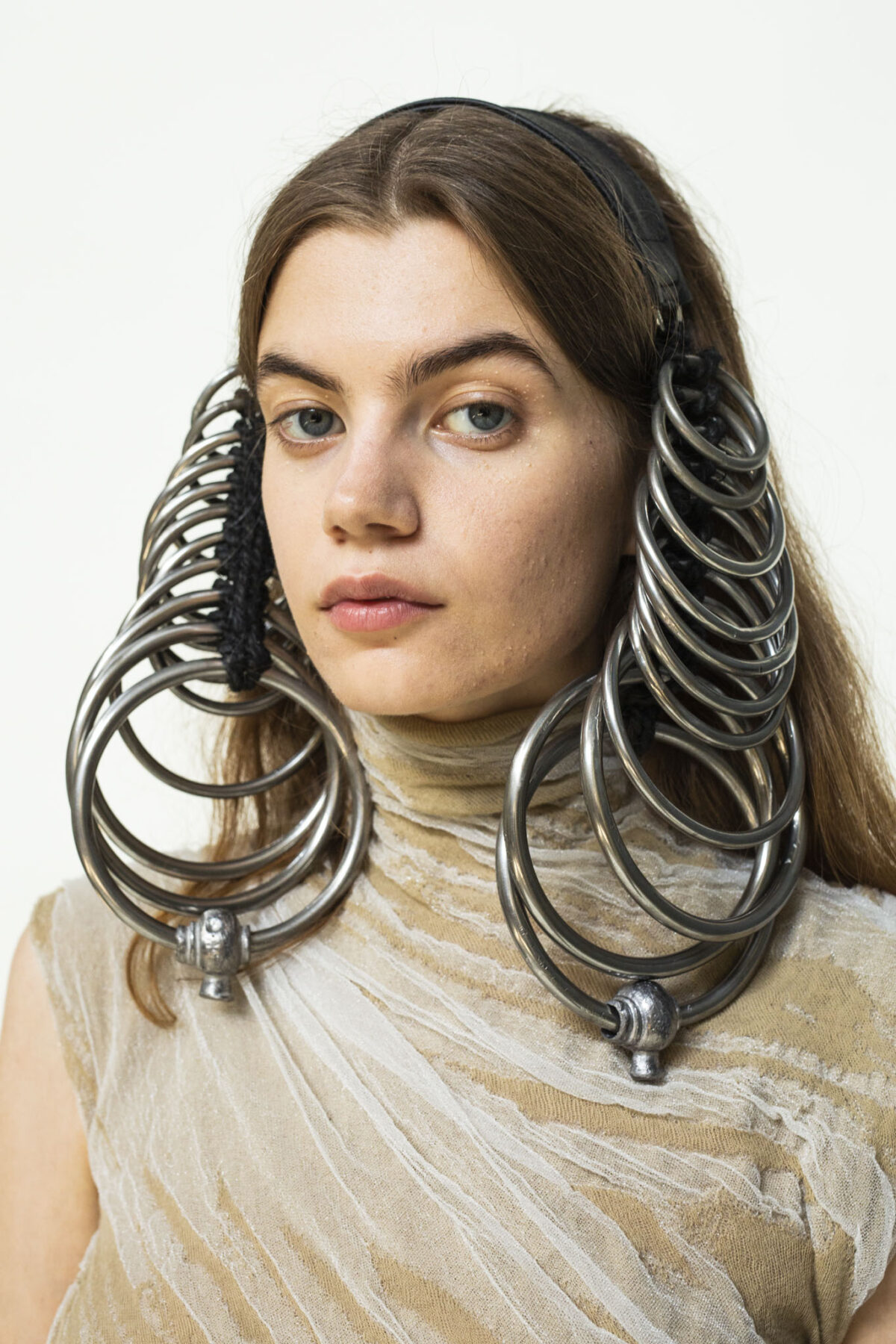 NL_03
NL_03

Nana Lybeck MA Graduate collection Photographer: Sofia Okkonen
NL_03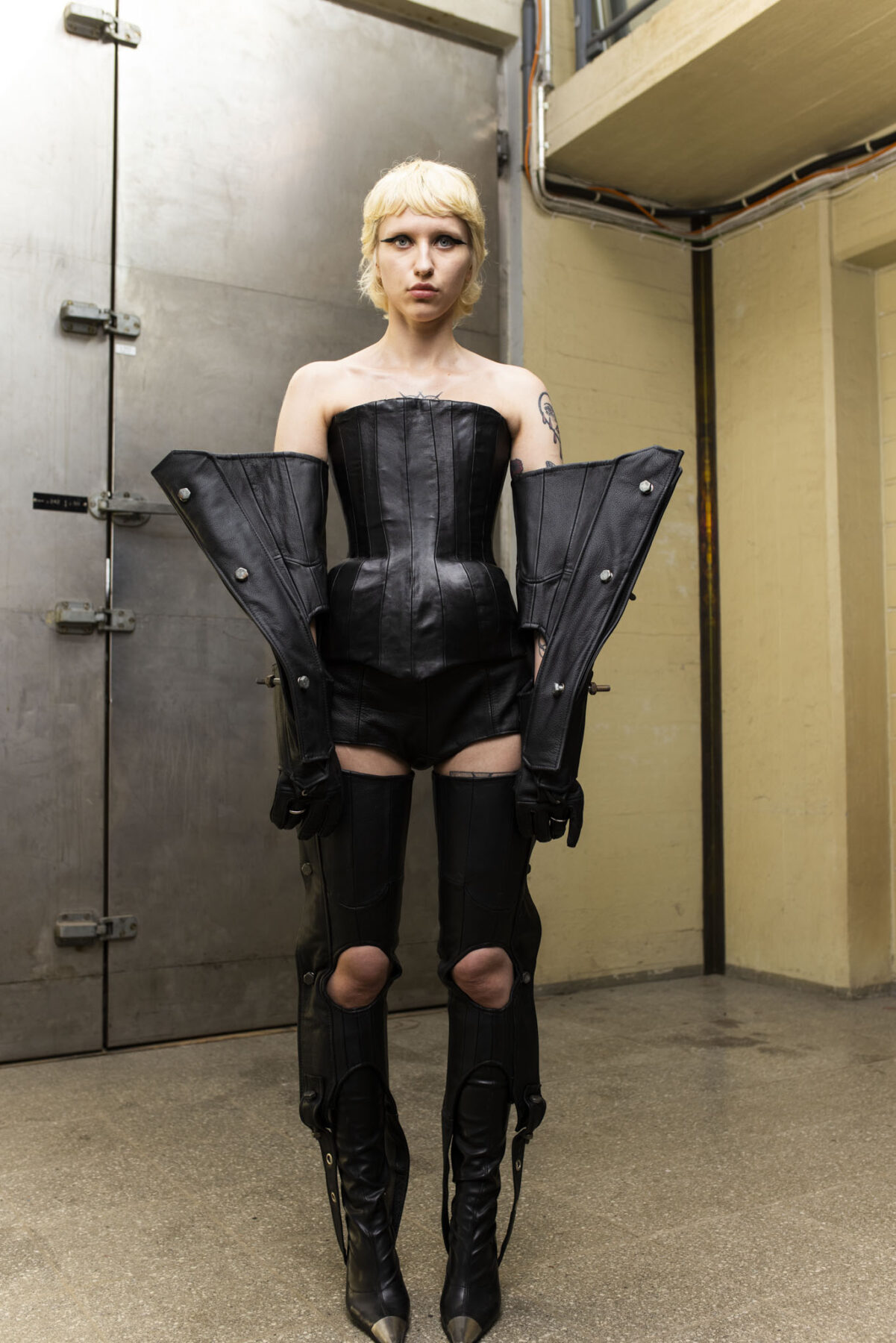 NL_04
NL_04

Nana Lybeck MA Graduate collection Photographer: Sofia Okkonen
NL_04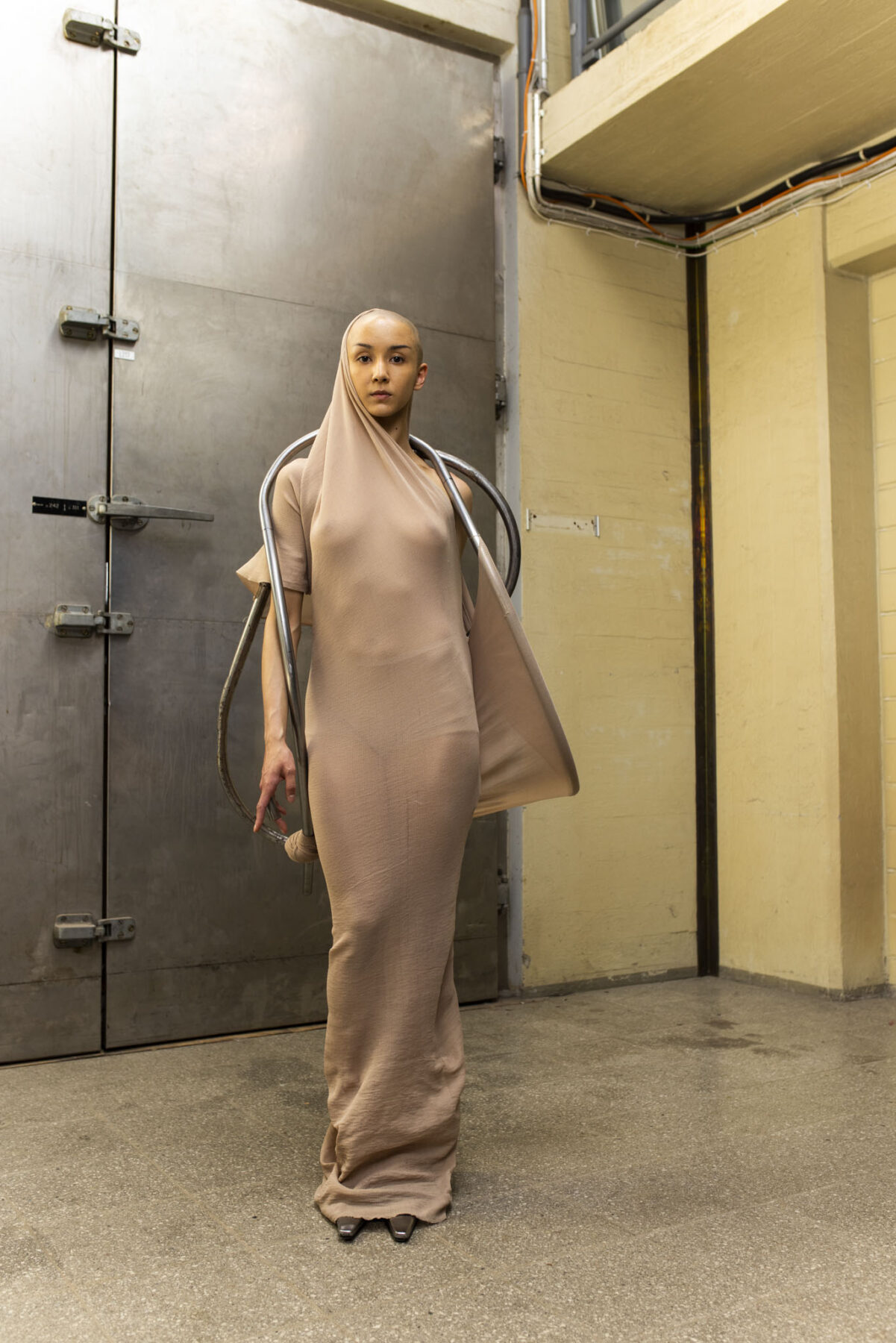 NL_05
NL_05

Nana Lybeck MA Graduate collection Photographer: Sofia Okkonen
NL_05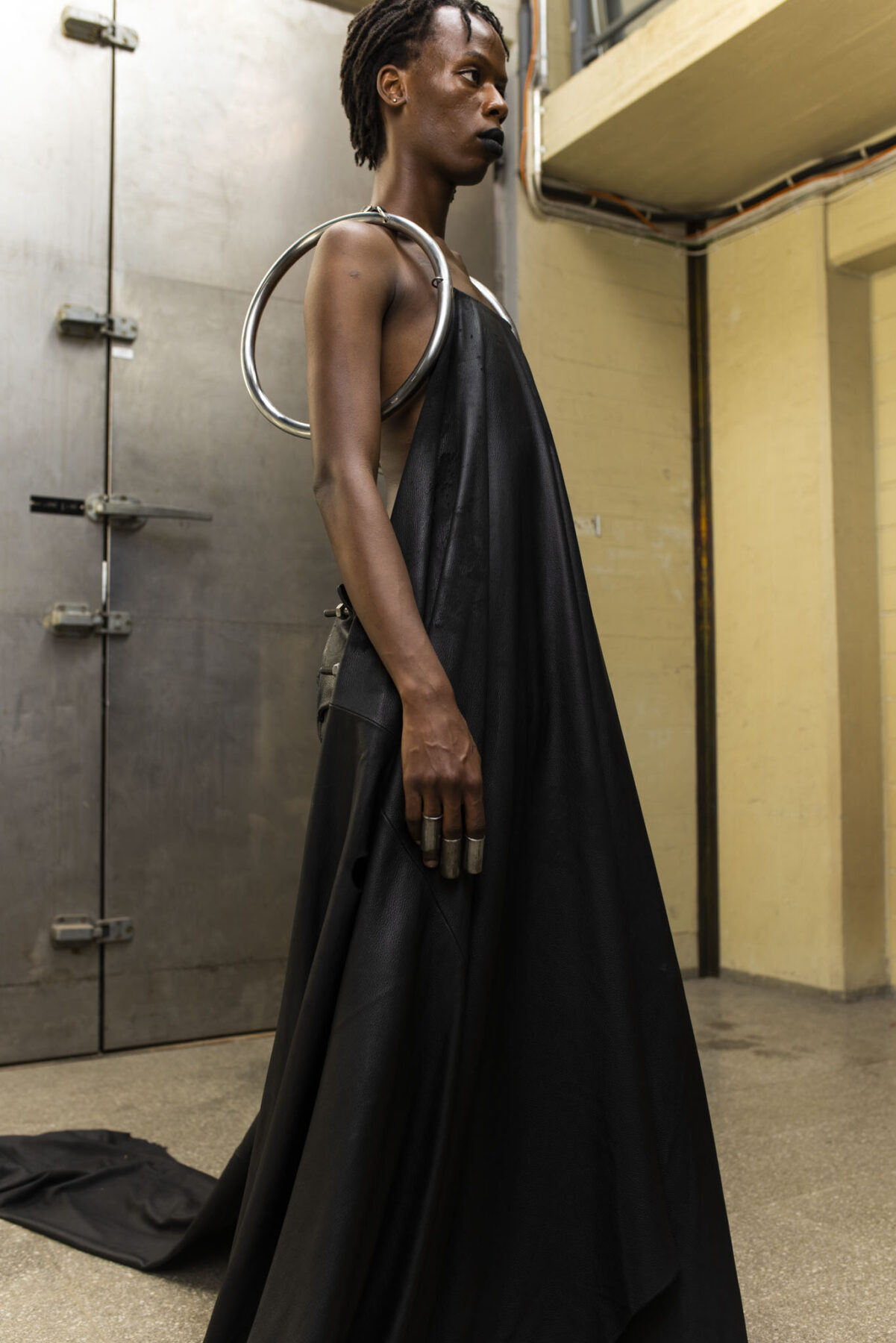 NL_06
NL_06

Nana Lybeck MA Graduate collection Photographer: Sofia Okkonen
NL_06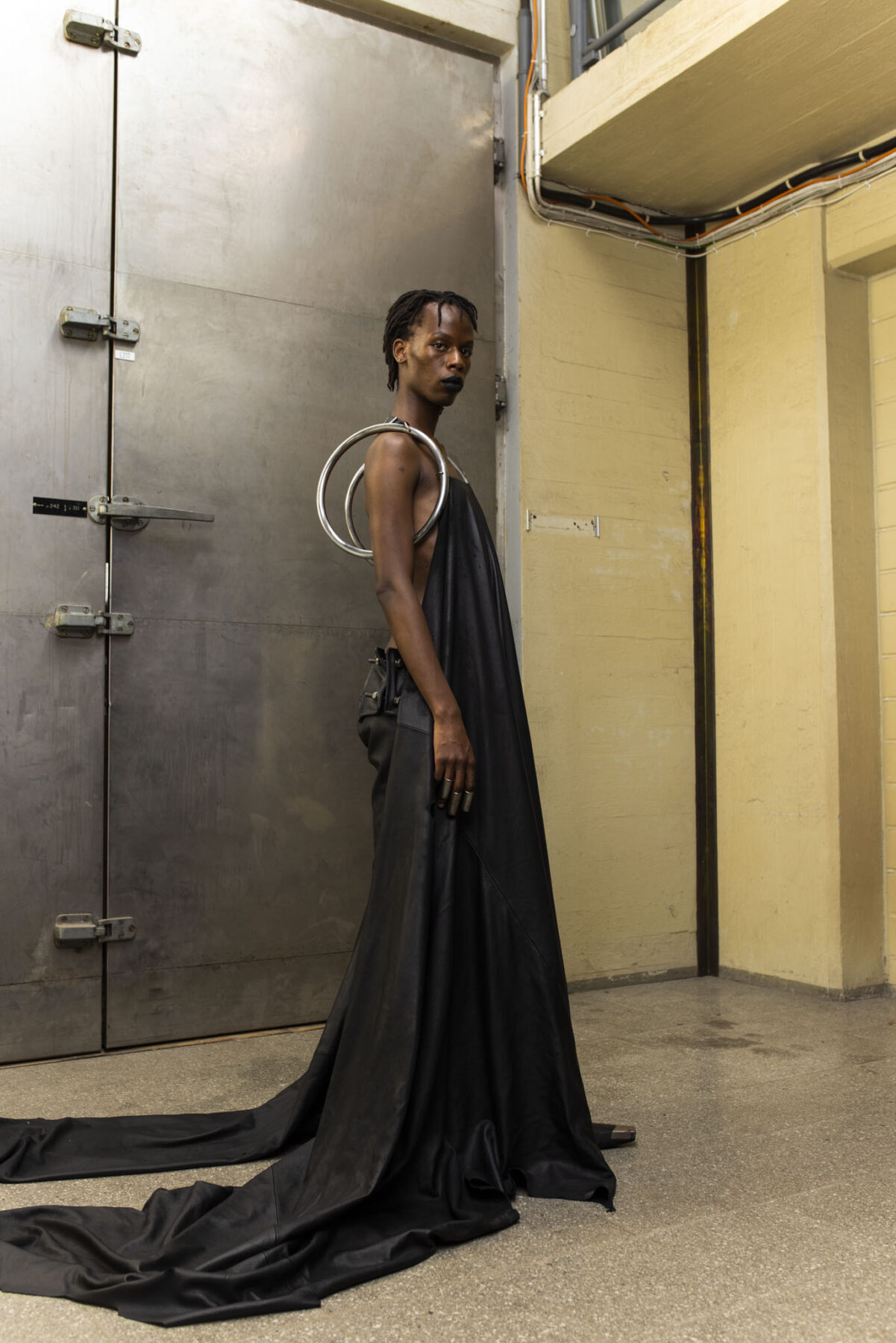 NL_07
NL_07

Nana Lybeck MA Graduate collection Photographer: Sofia Okkonen
NL_07Mutilus
What does it mean to be gruesome?
What does it mean to be delicate?
In their collection, Nana Lybeck explores forms of radical body modification and the concept of artistic mutilation through wearable ensembles, sensations and atmosphere. Towing the lines of gruesome and delicate, violent and gentle, the collection highlights the sensitive nature of mutilative bodily practices essential to the subcultures of body modifications as well as the practices of fashion.
In line with the carnal and at times even gory subject matter, animalistic materials, suffocating silhouettes, and strenuous weight are utilized to communicate a sense of controlled violence, in which the wearer is an active participant.
The collection interacts with the body in a striking and macabre way while still maintaining a sort of peaceful, fragile sensibility; channeling the same nuanced, multifaceted beauty as radical body modification does.
– I address these subjects, clothes, as bodies in their own right, with discomfort and pain built into their forms, Lybeck explains.
Employing a somatic approach to design, the designer primarily develops articles of clothing not by patterning or sketching, but via their own sensory experiences with bodies and materials.
– The way I tend to work on garments is also, like my subject, very physical. Feeling out the weight of clothes and the directions of the tensions – which way do they pull and squeeze or which parts of the body they drag down or force up, and what you can do to them until they tear – or they tear you.
The design process has gone beyond mere designing, Lybeck says:
– It has turned into a meditative ritual between myself and the object at hand.
Contact information:
Nana Lybeck
Nana.lybeck@aalto.fi
+358 503777359
@nanarkia